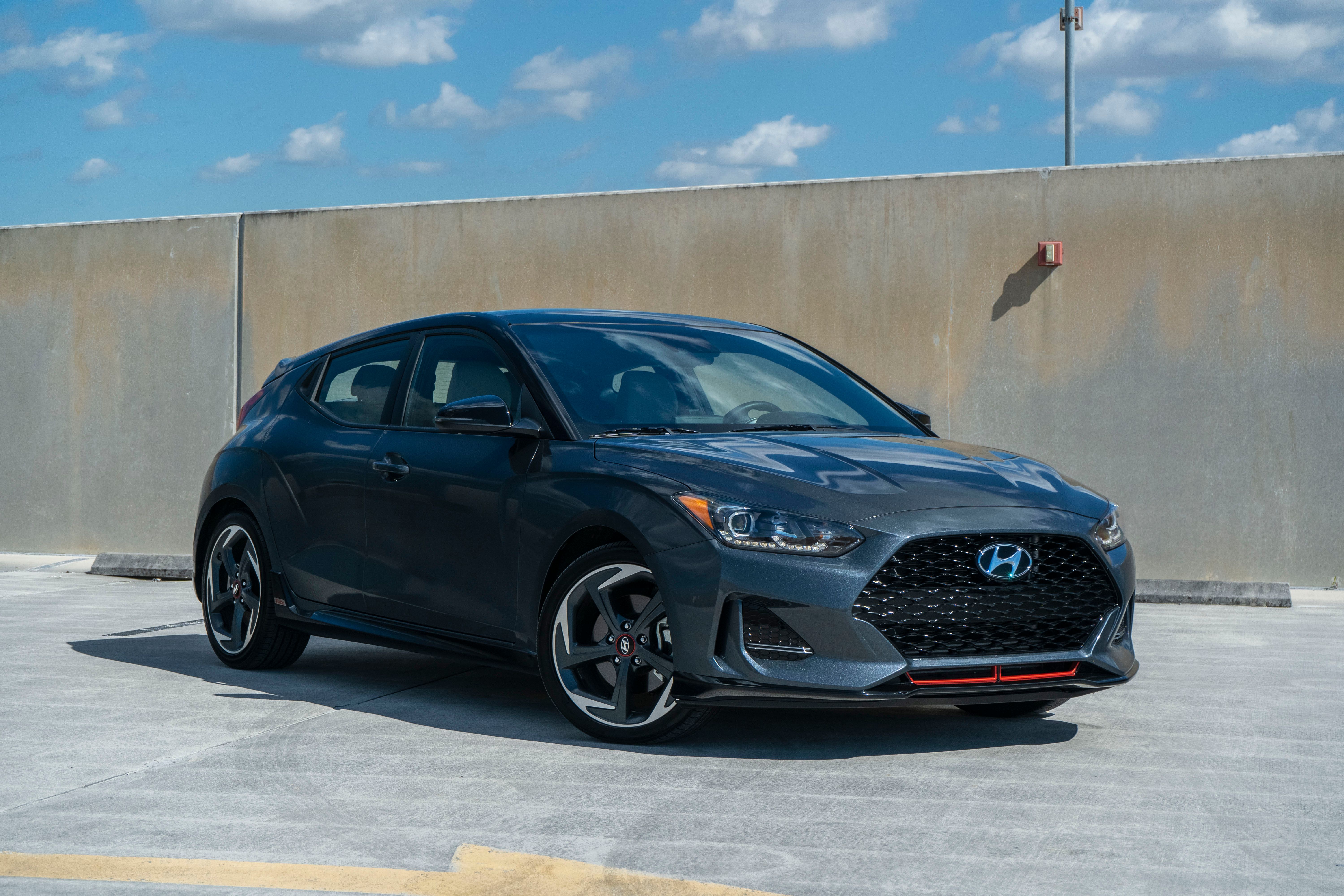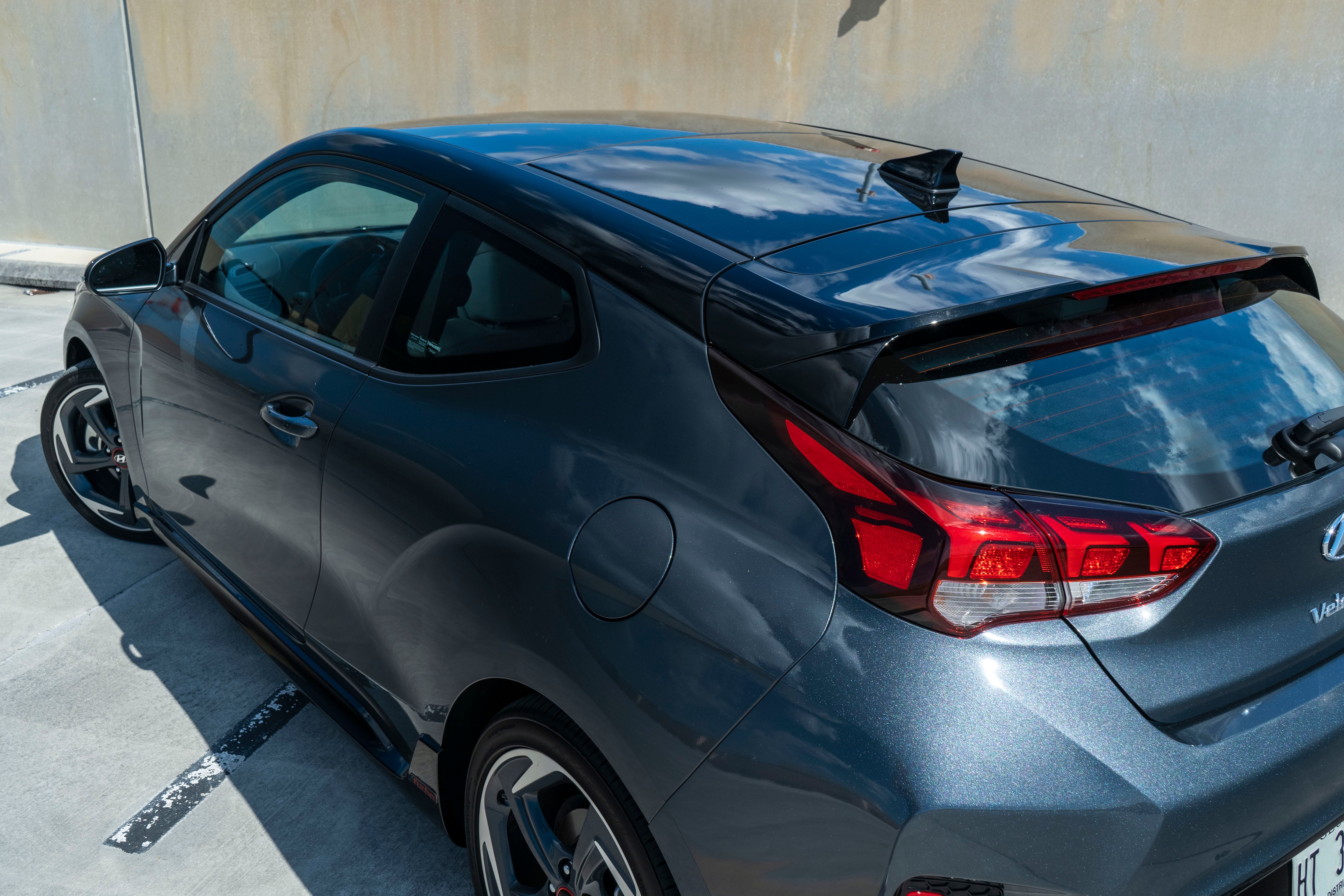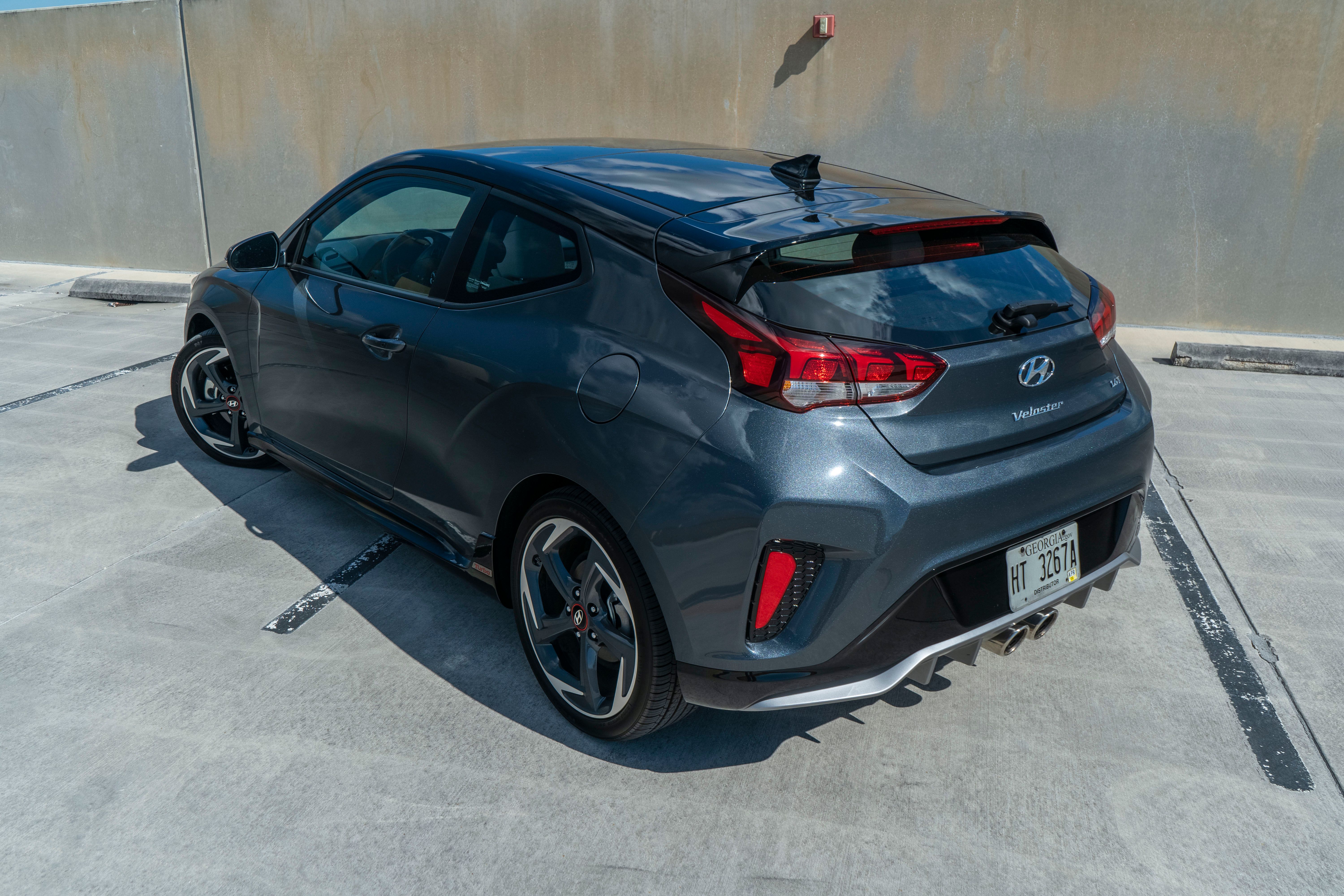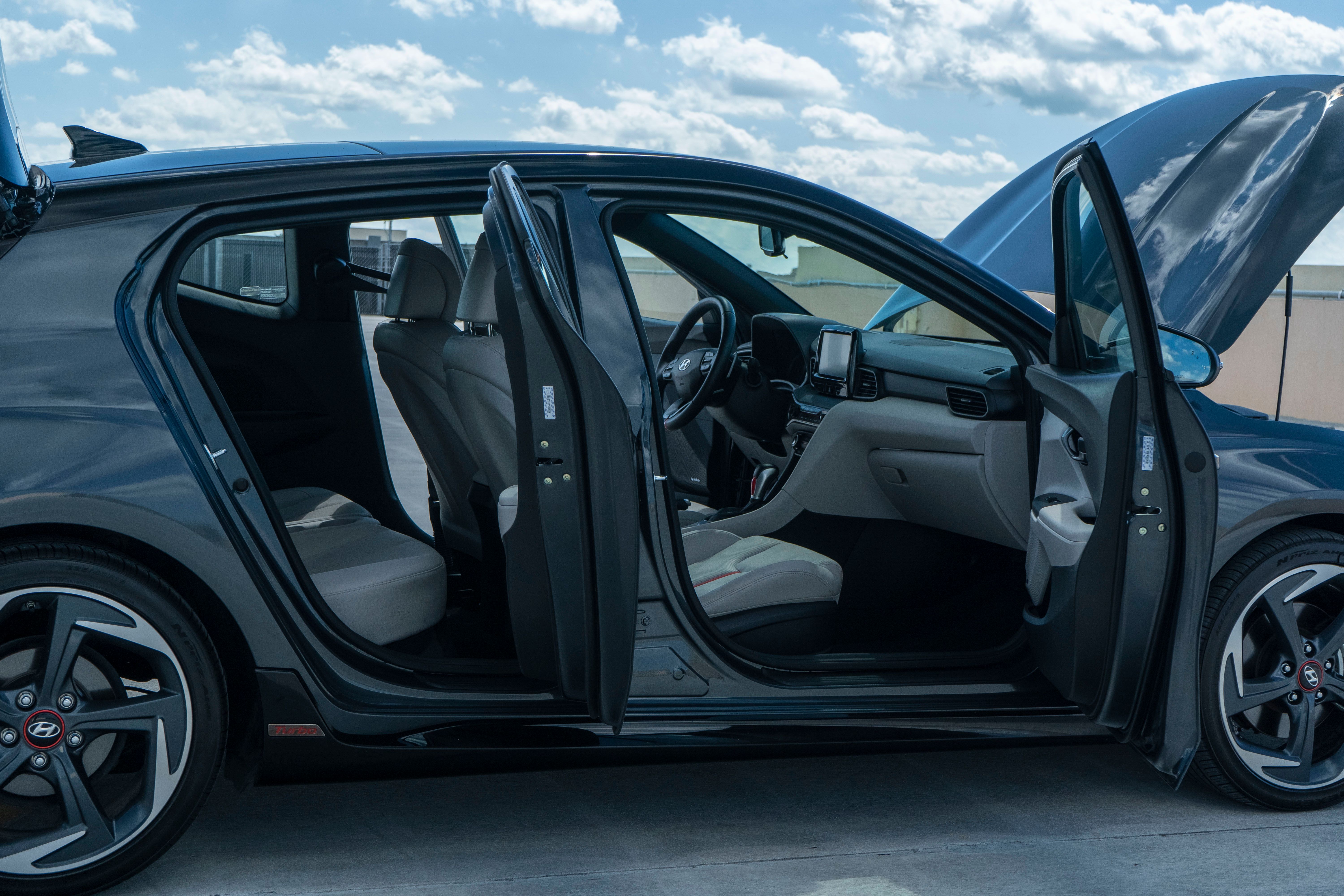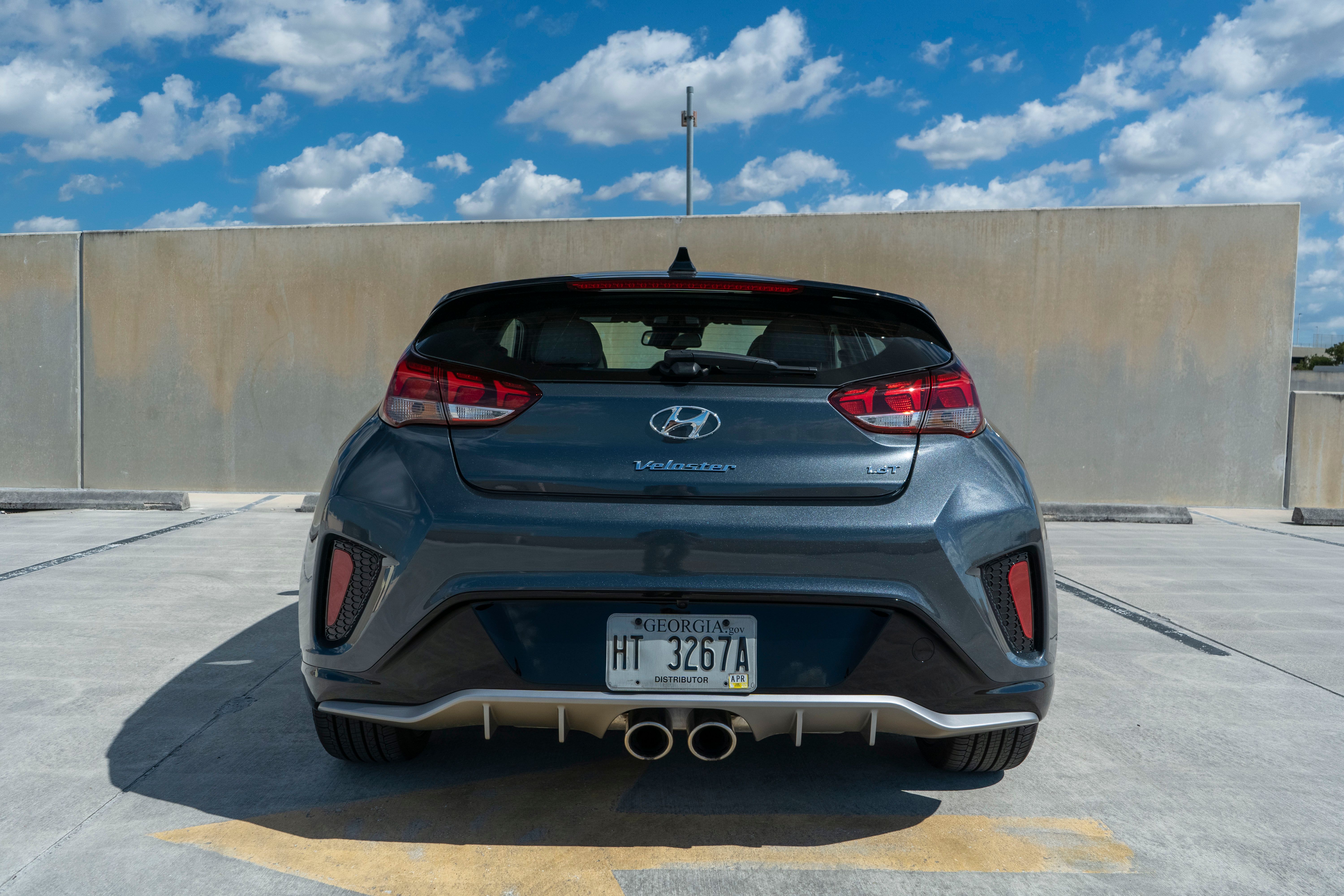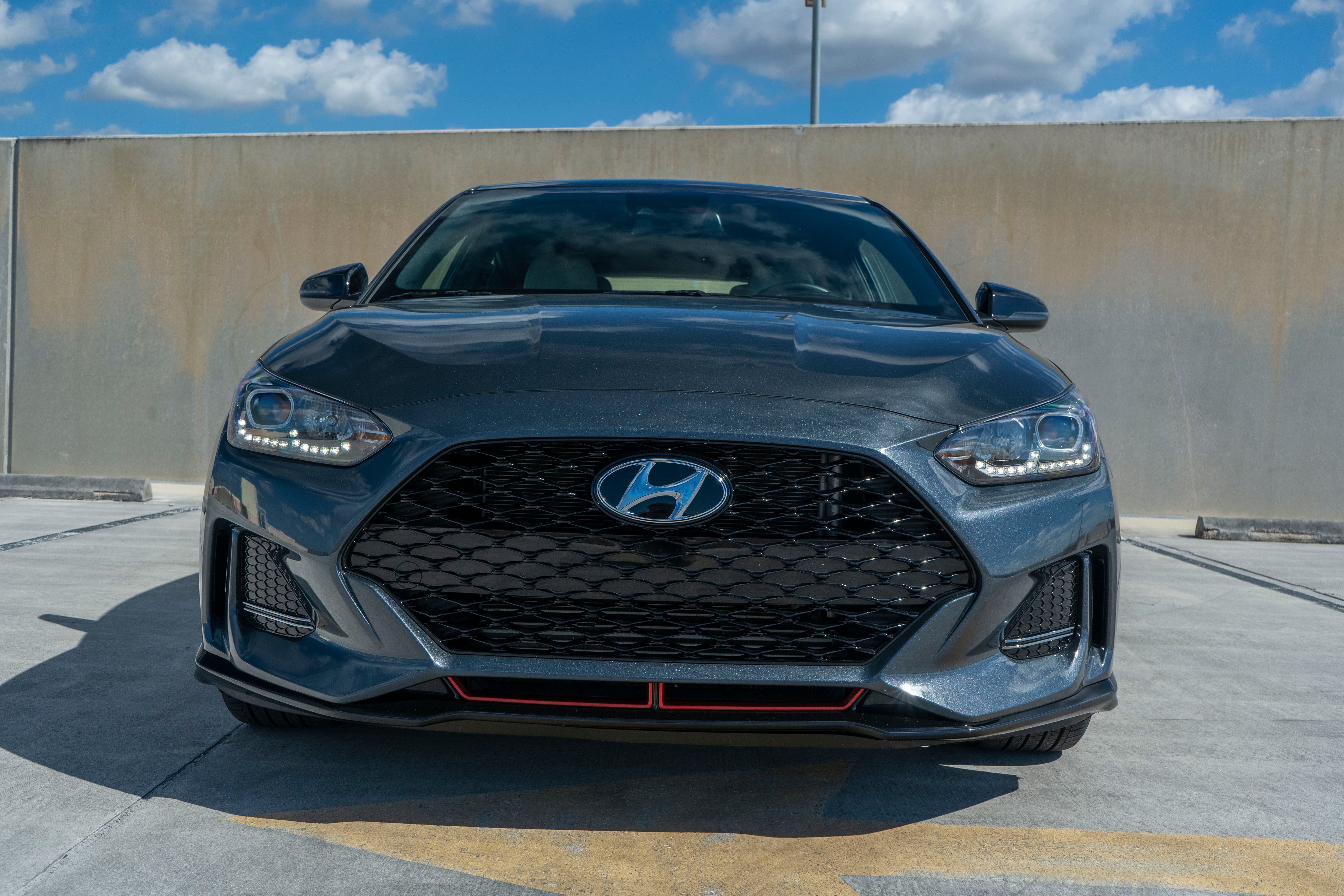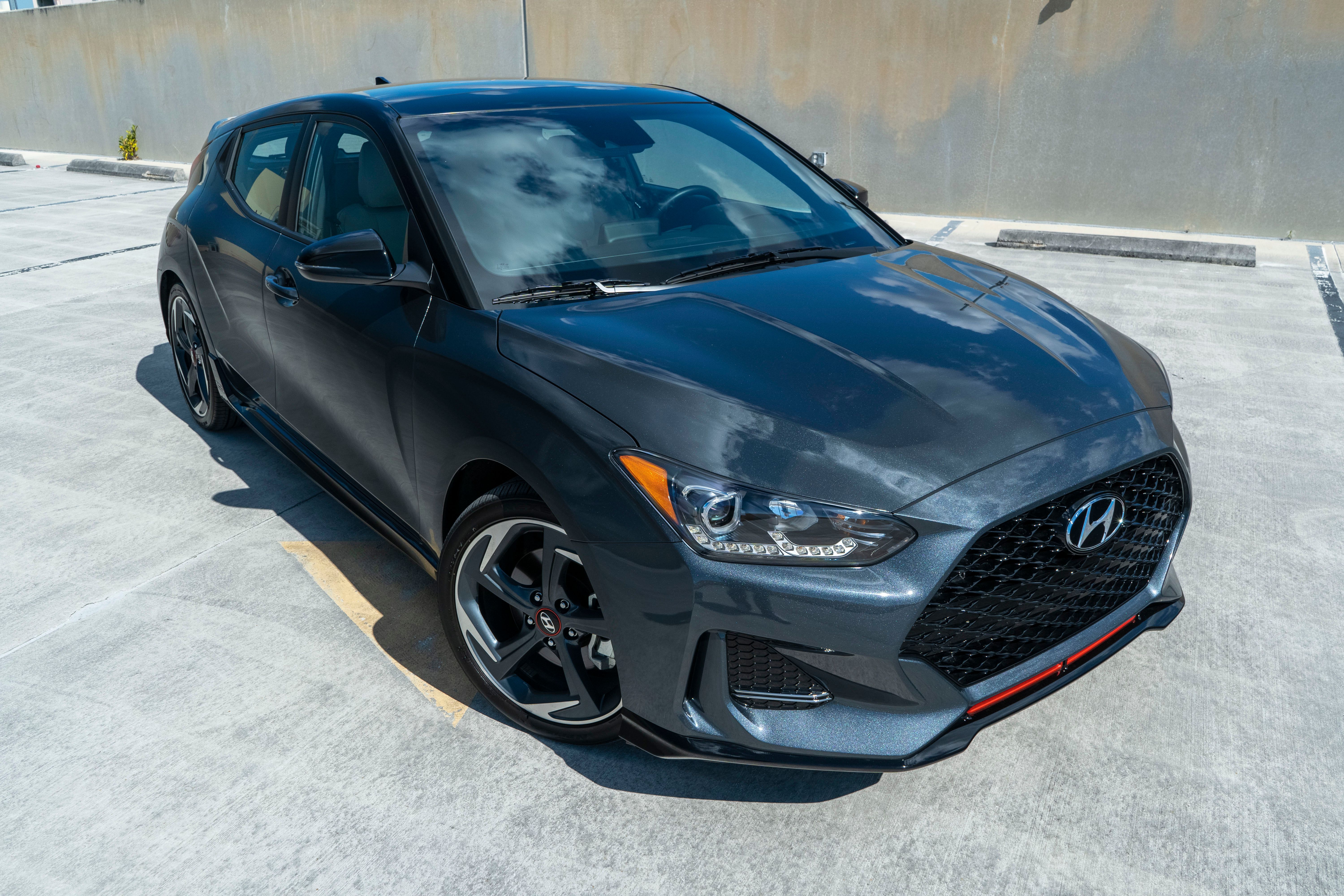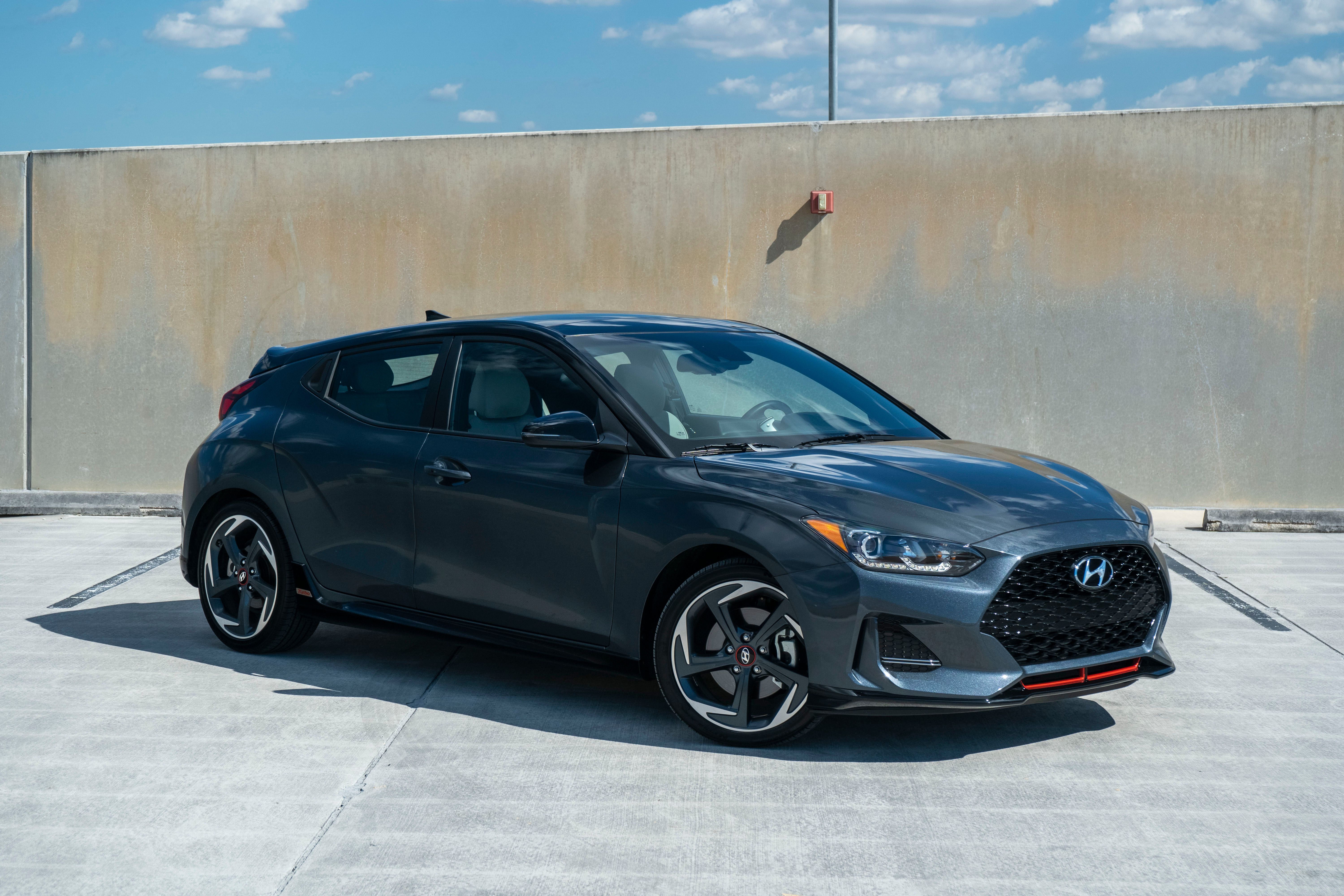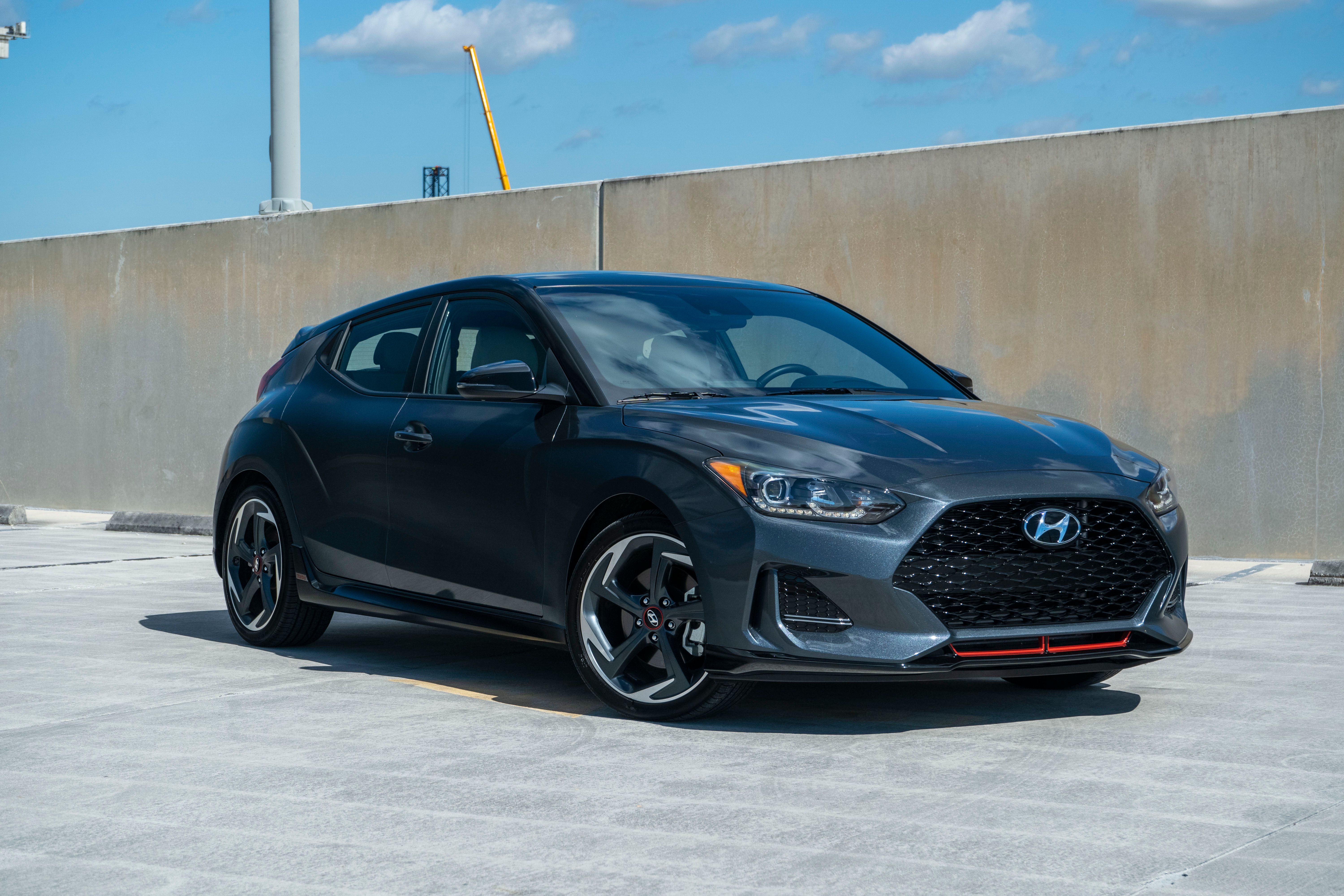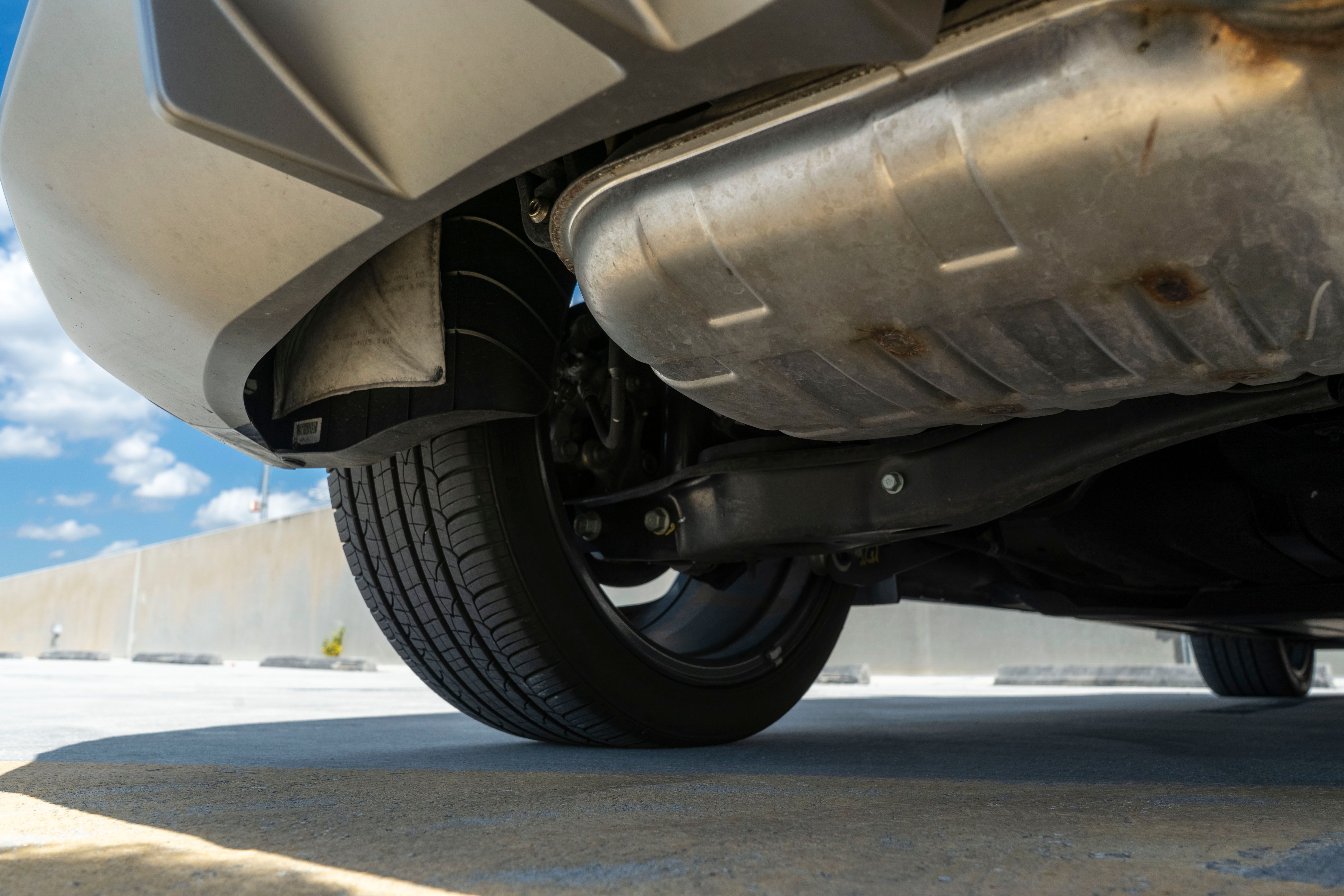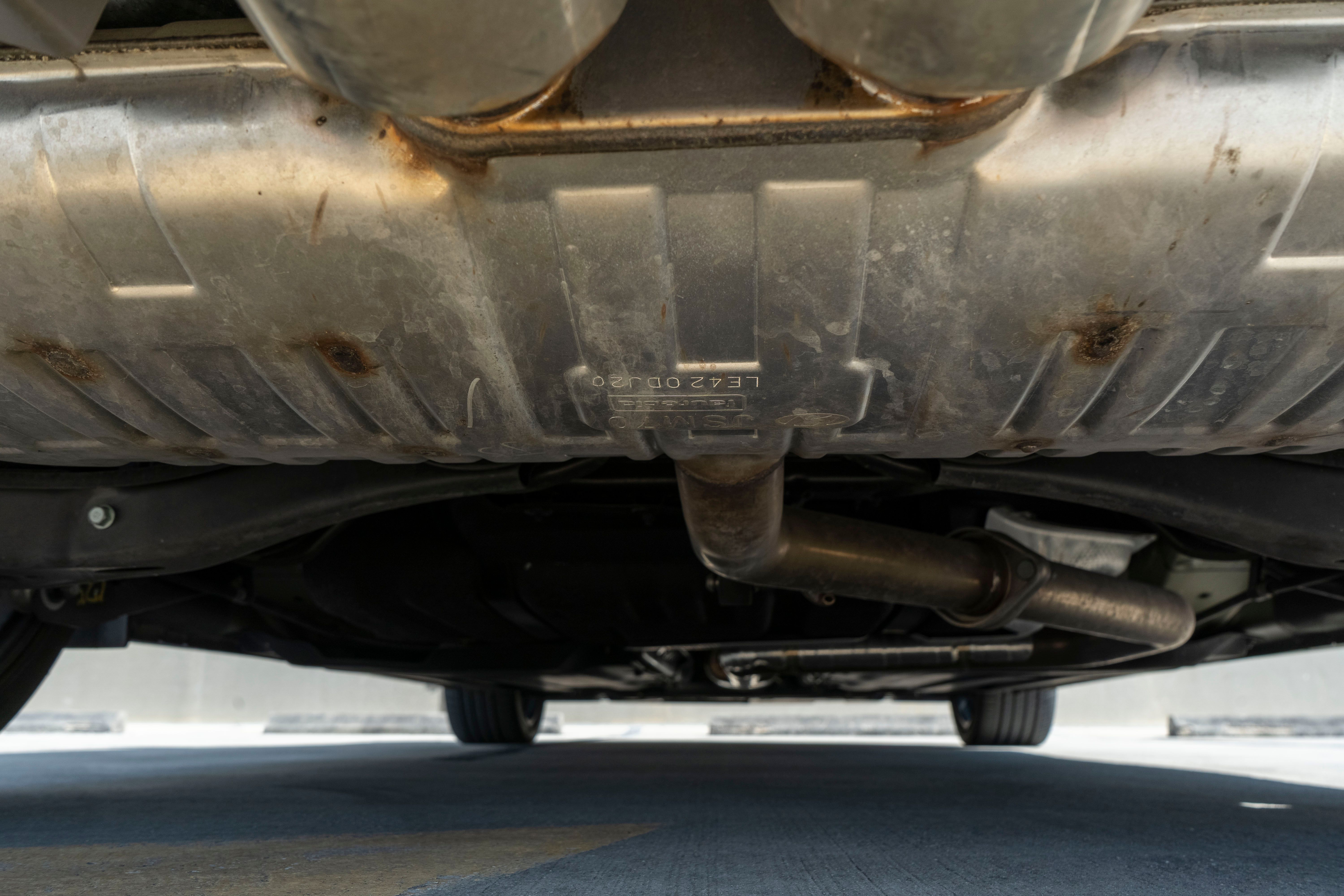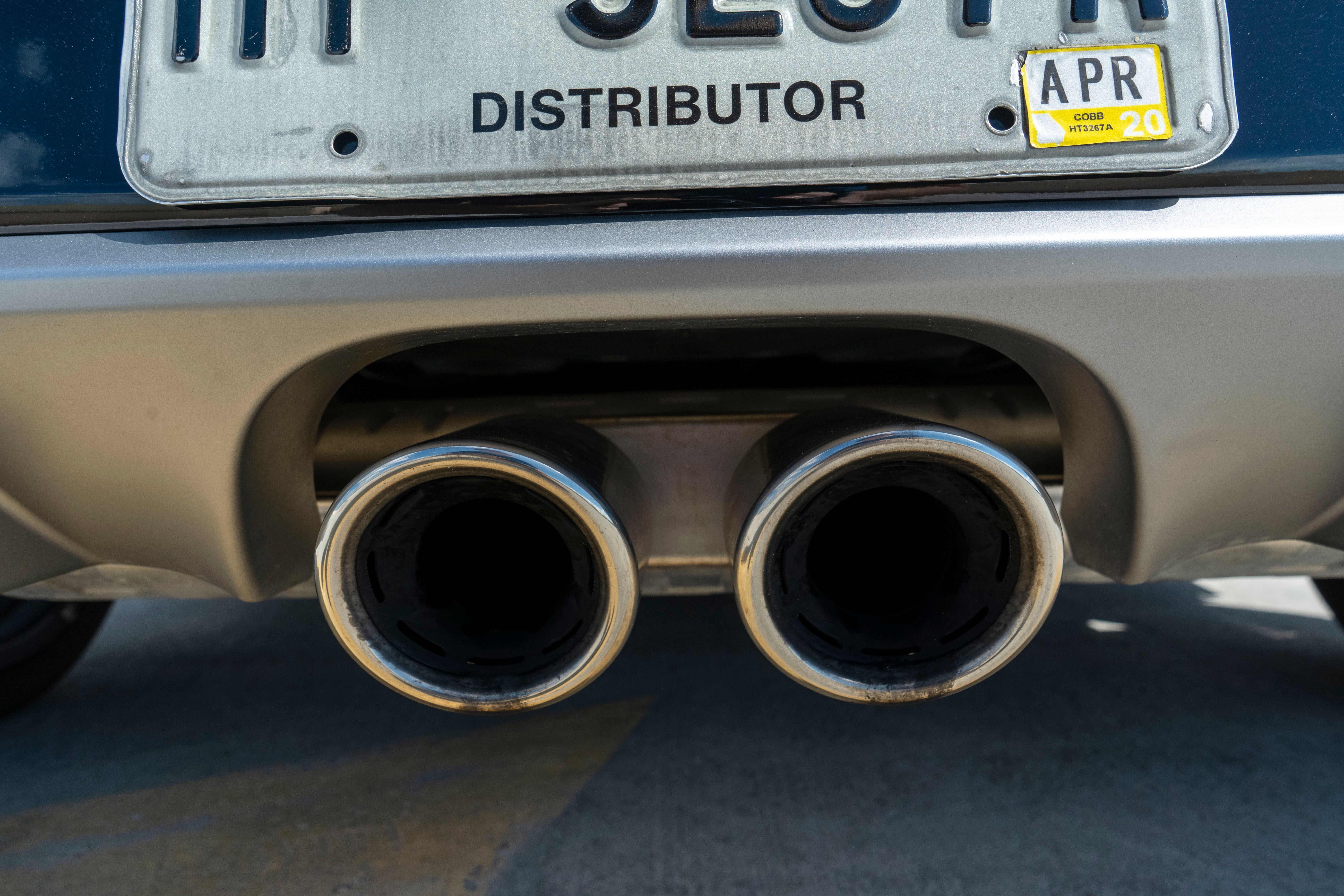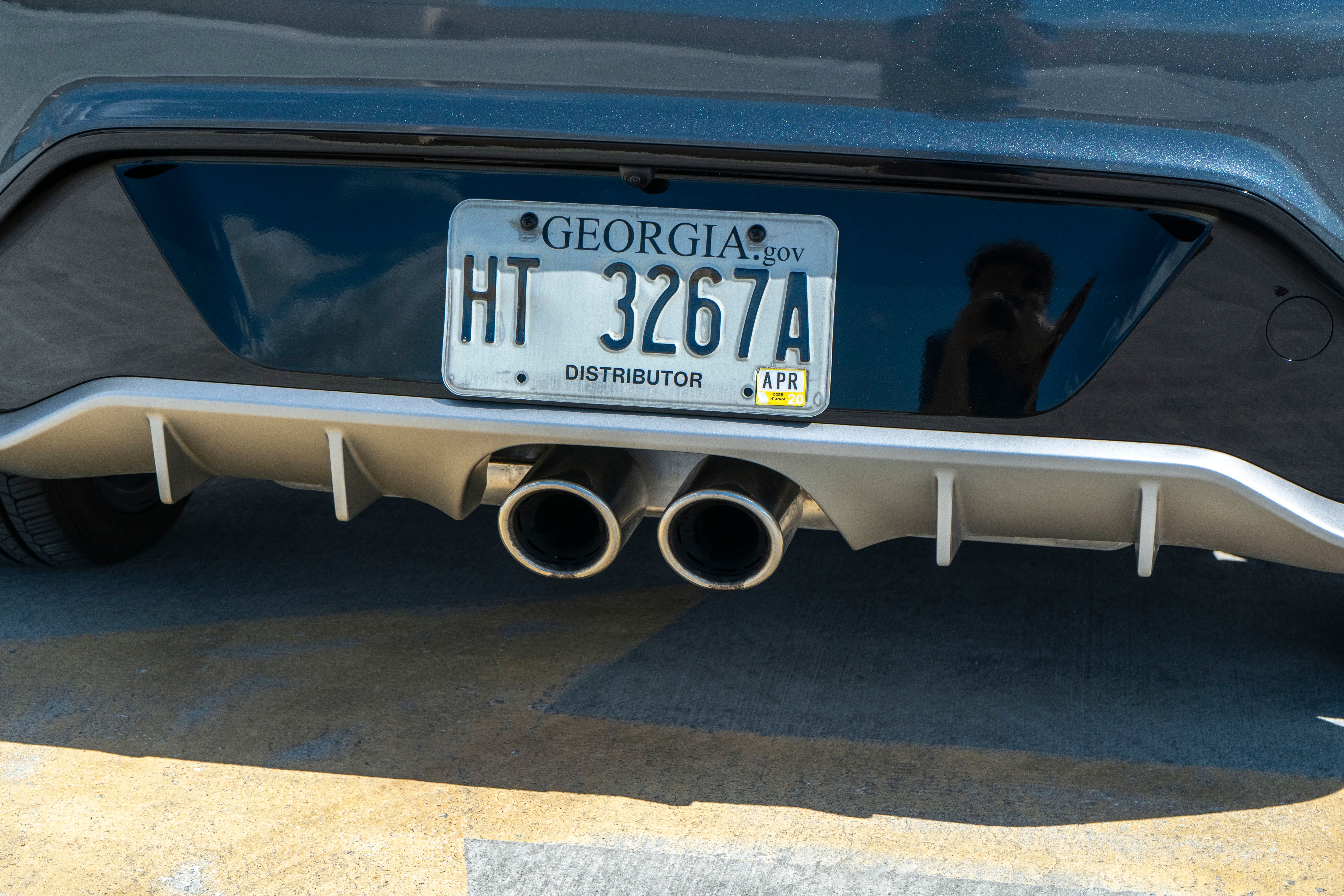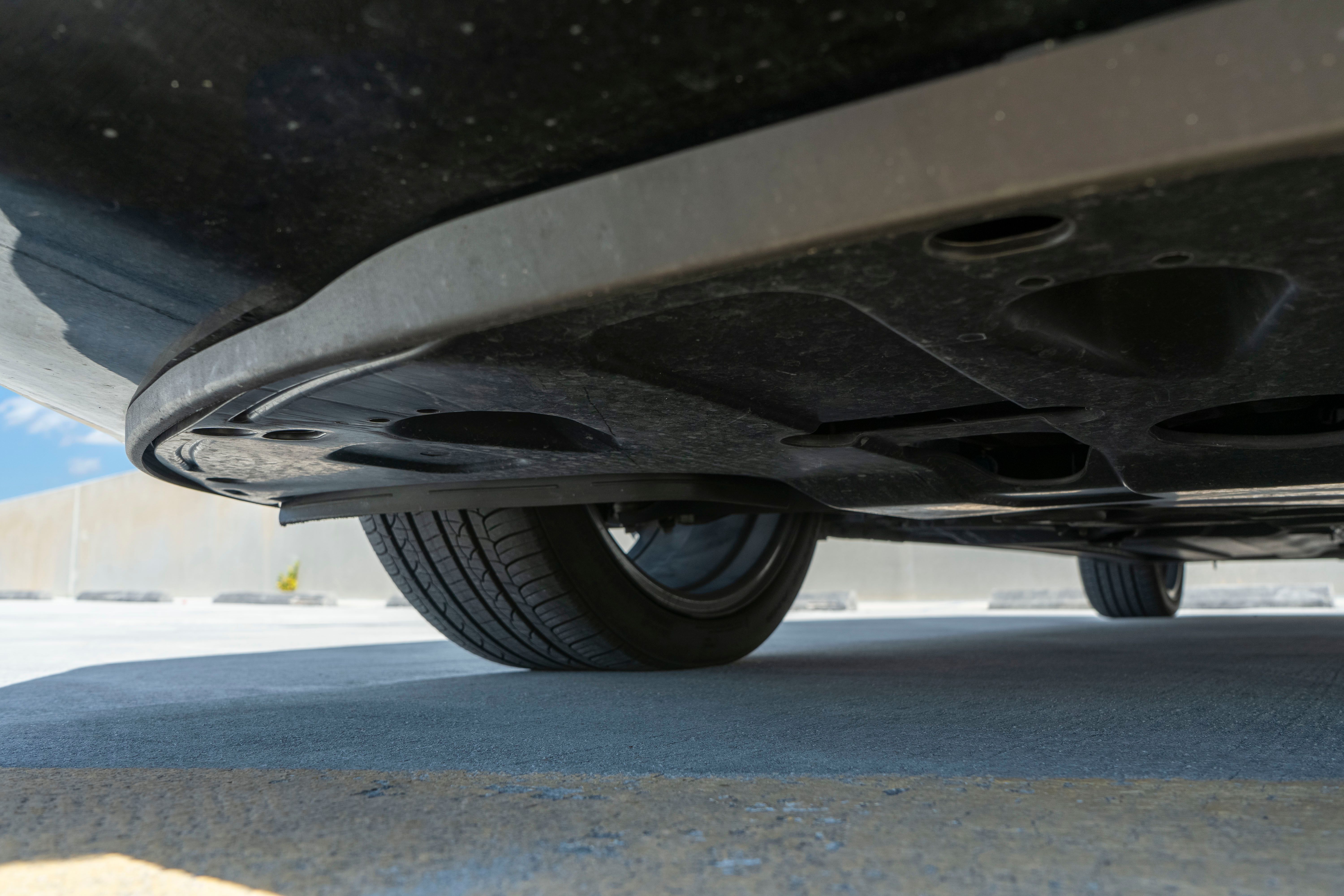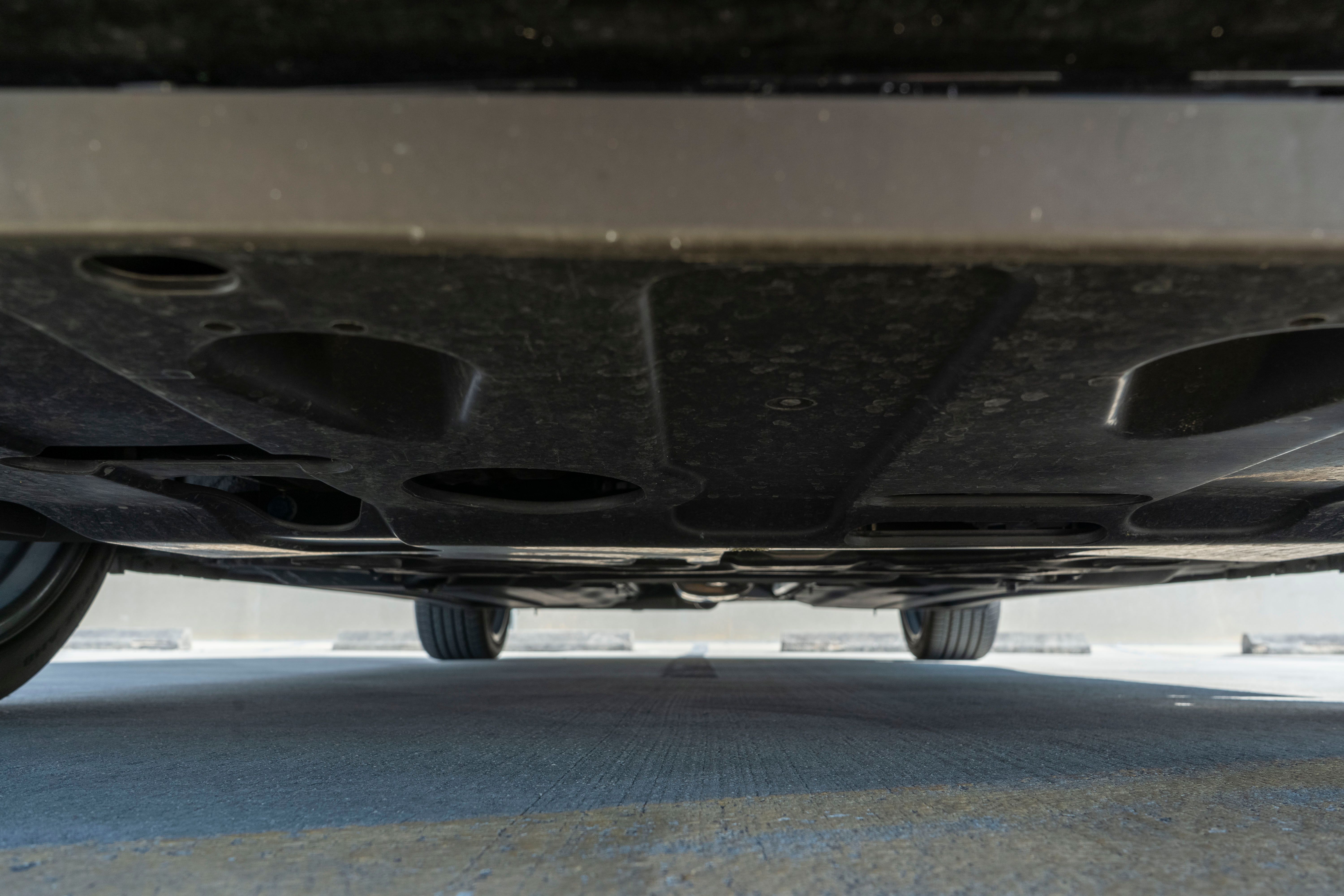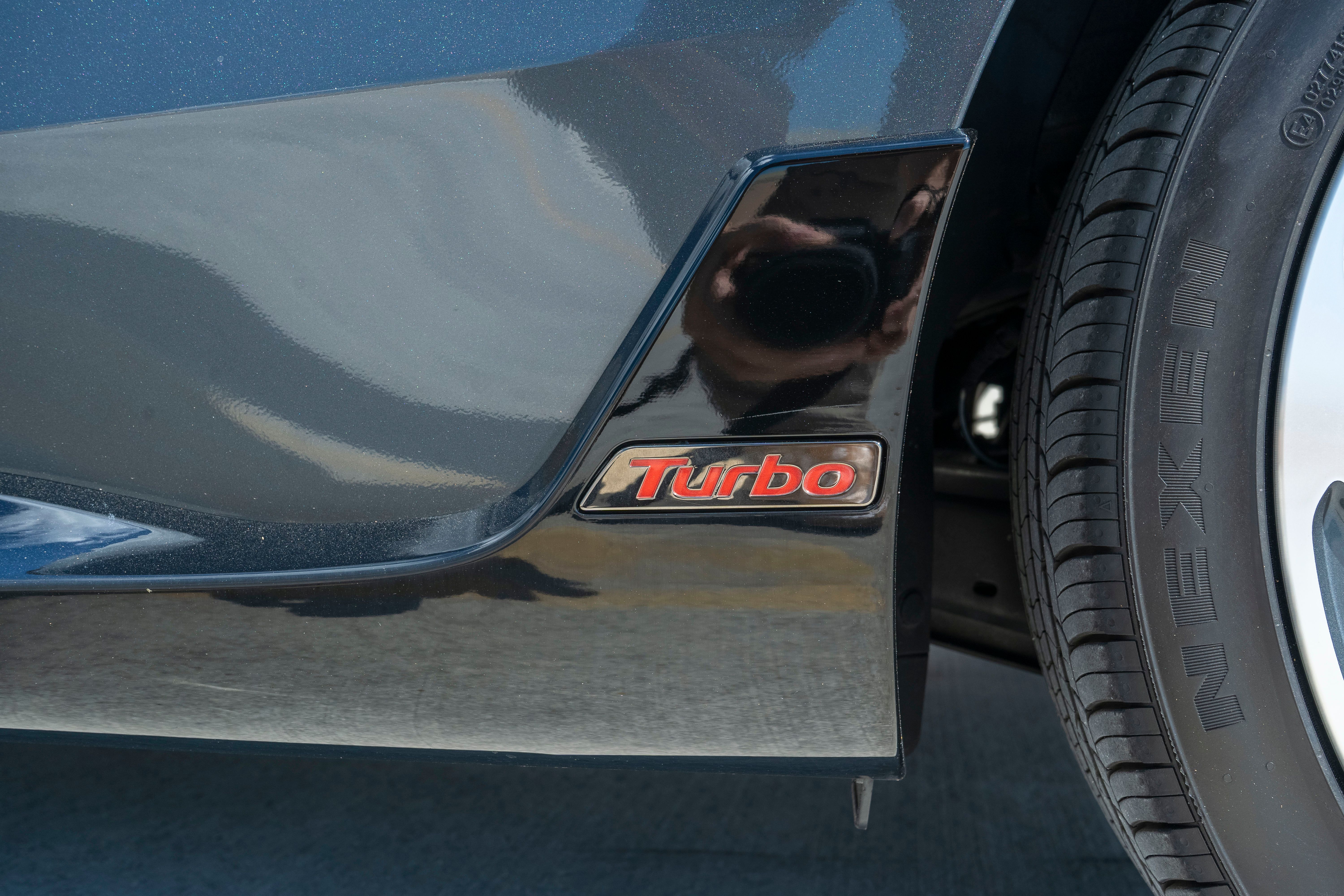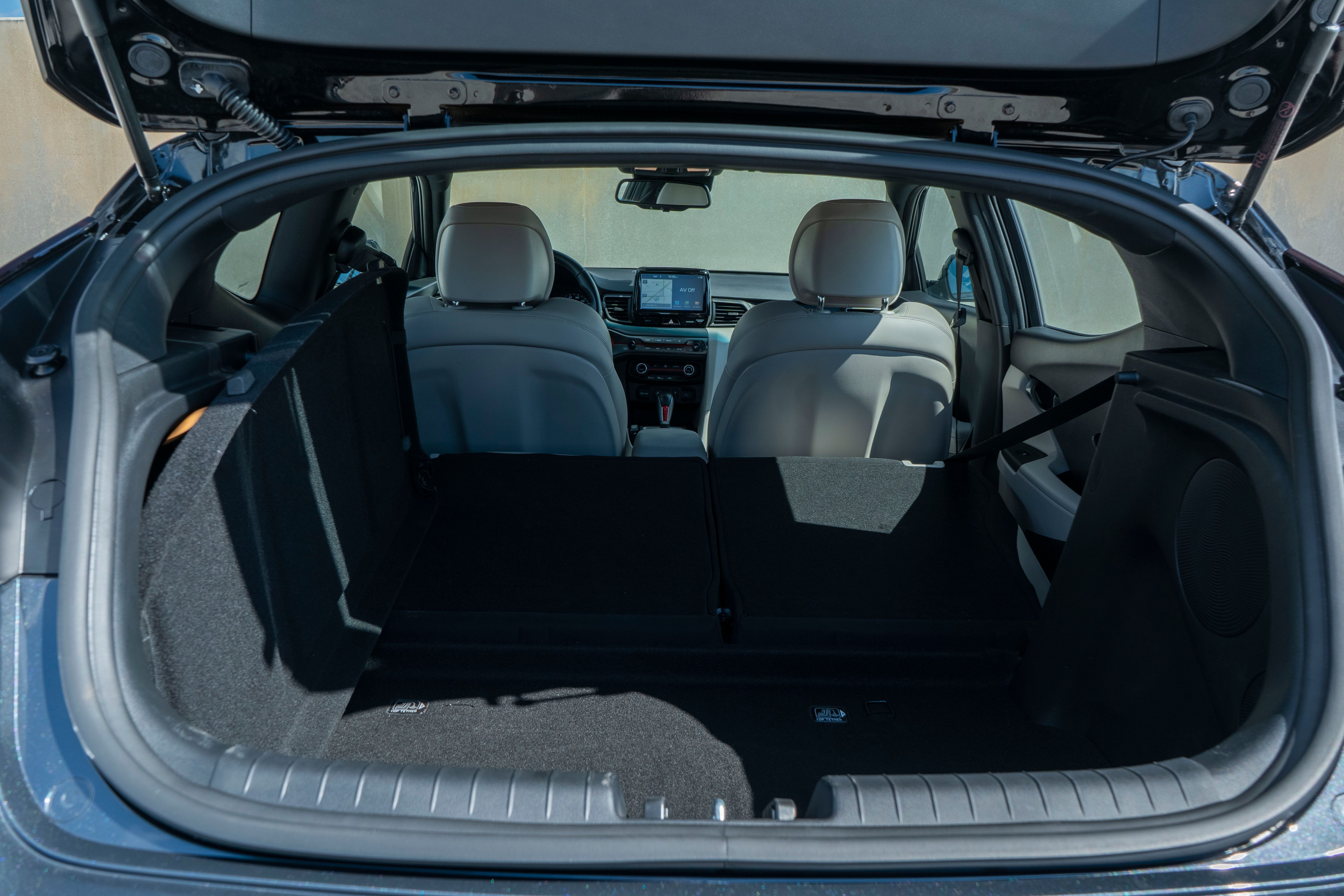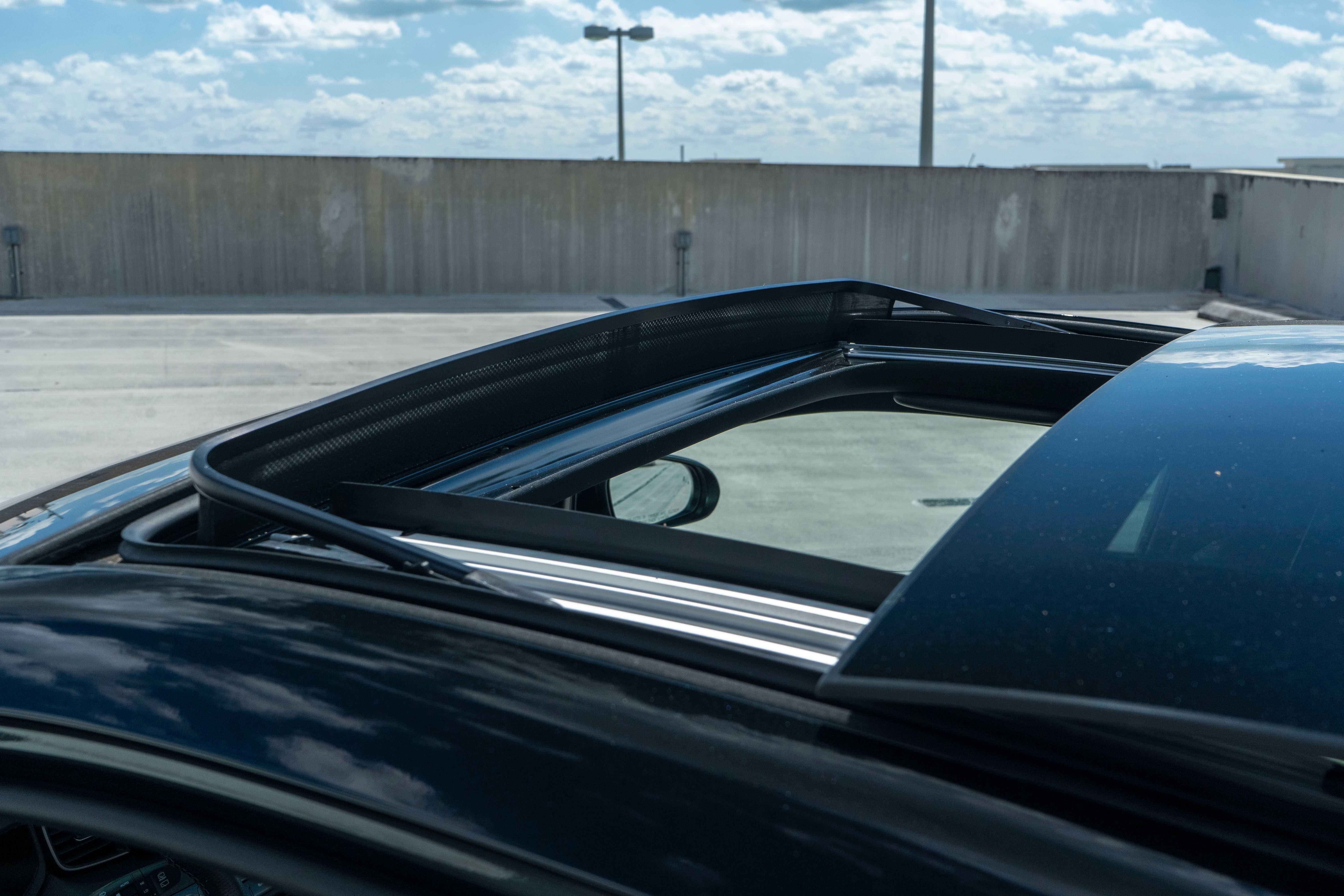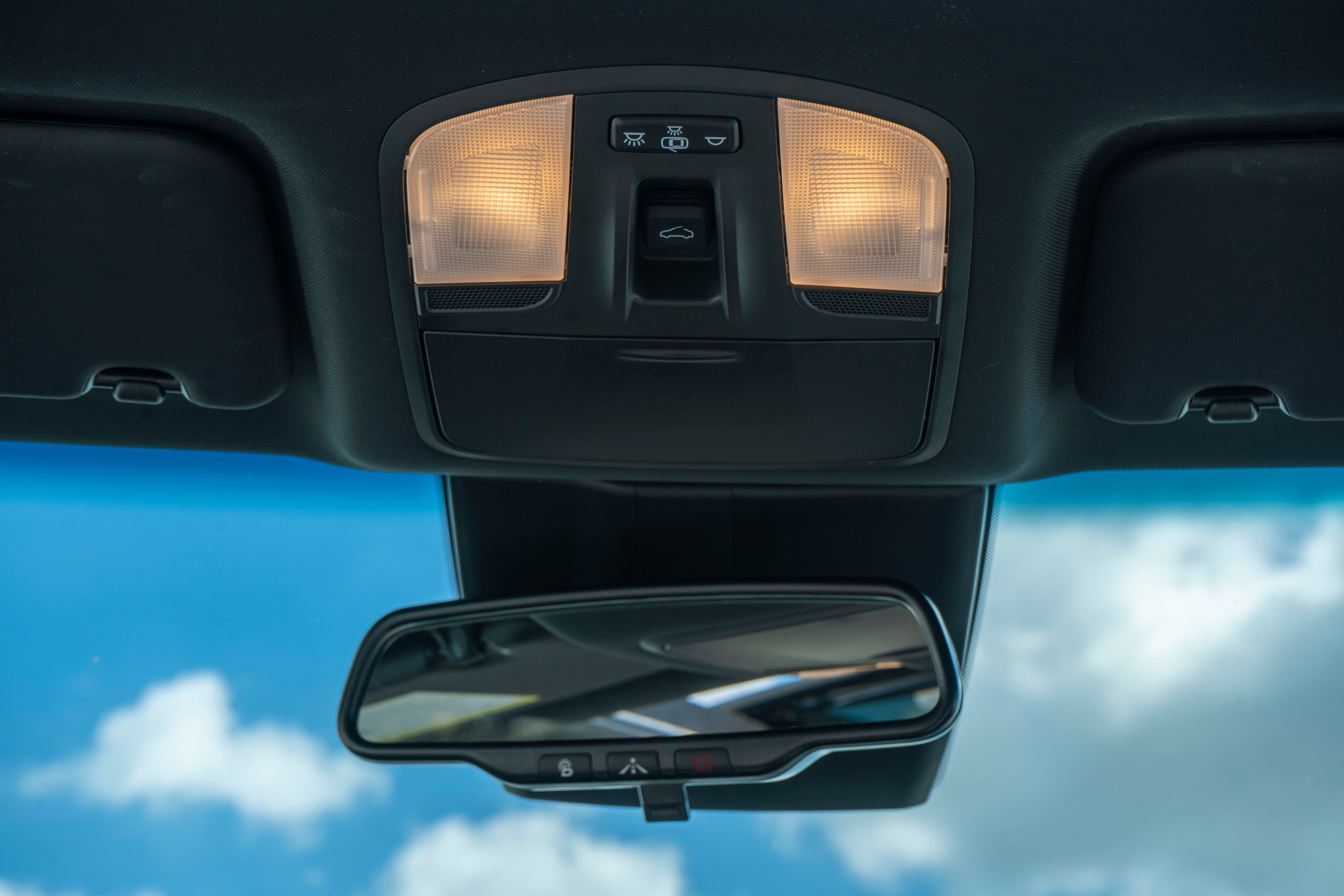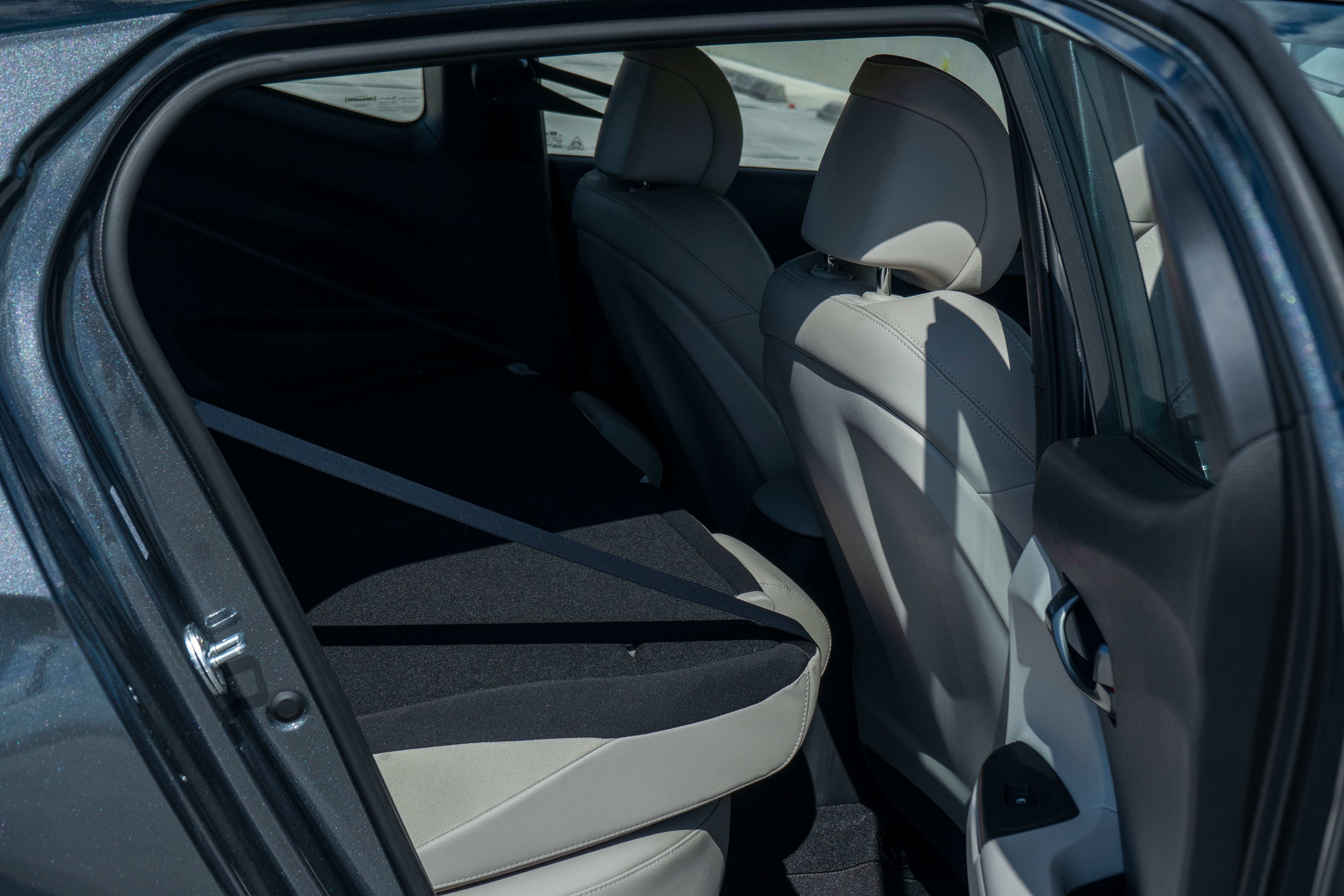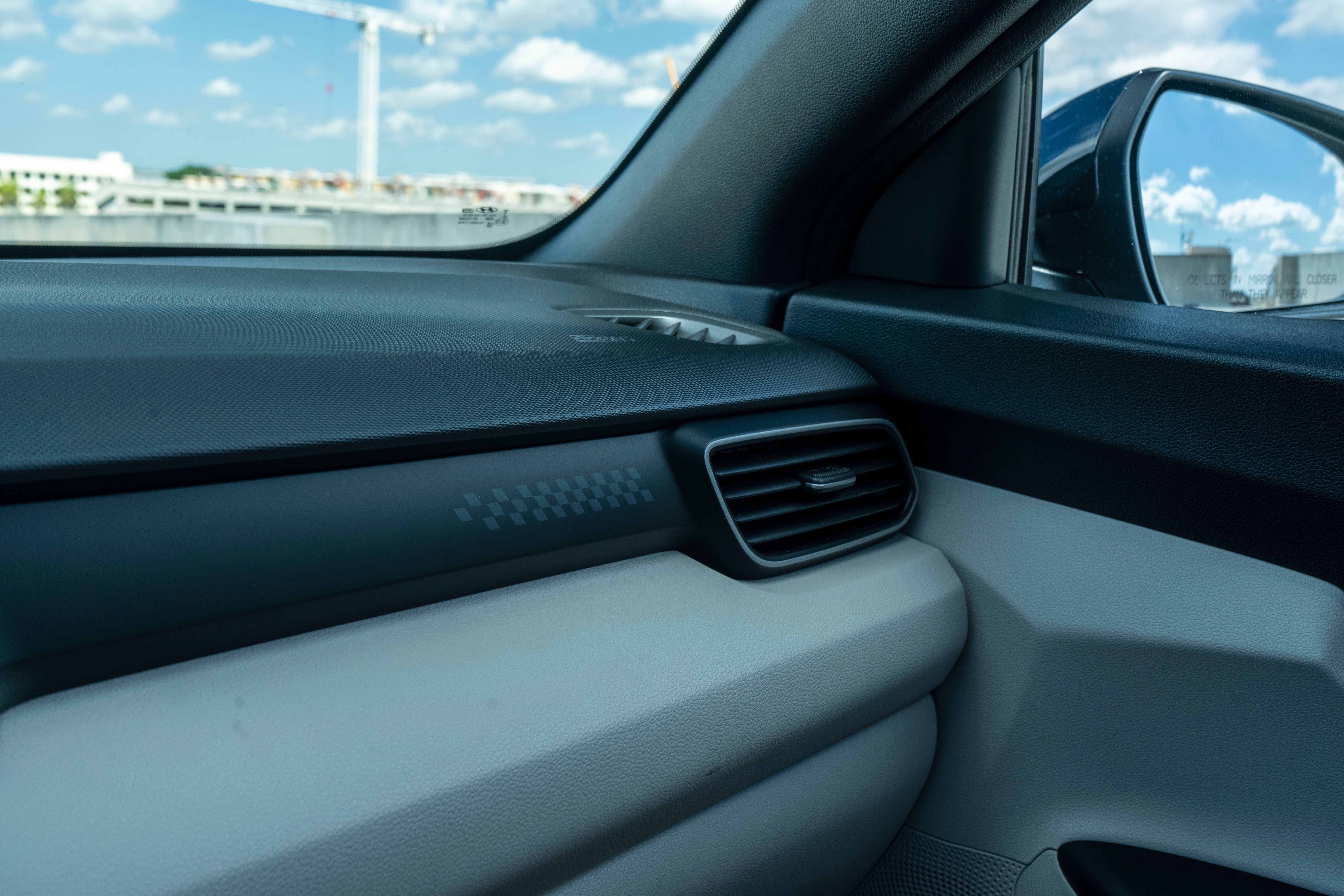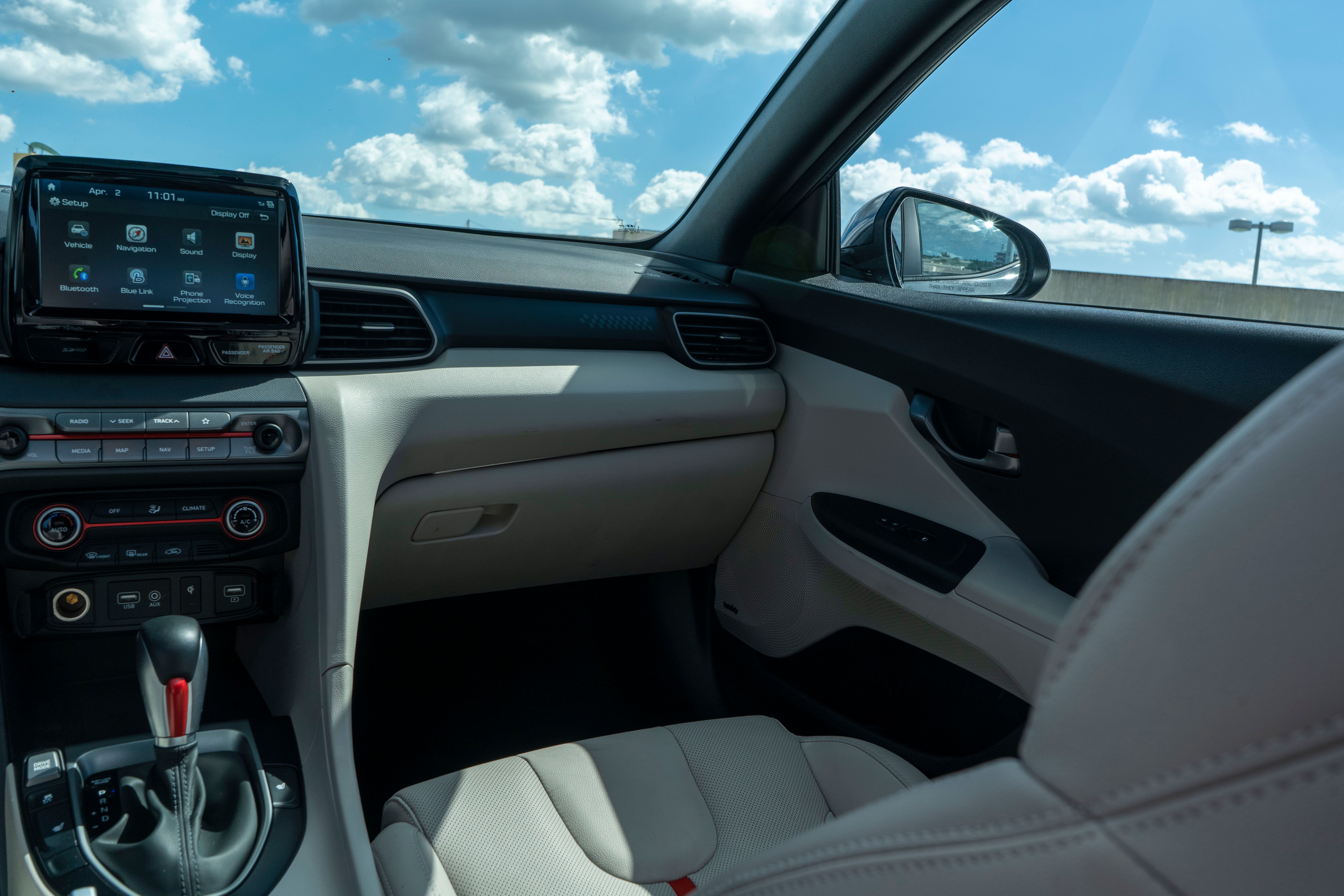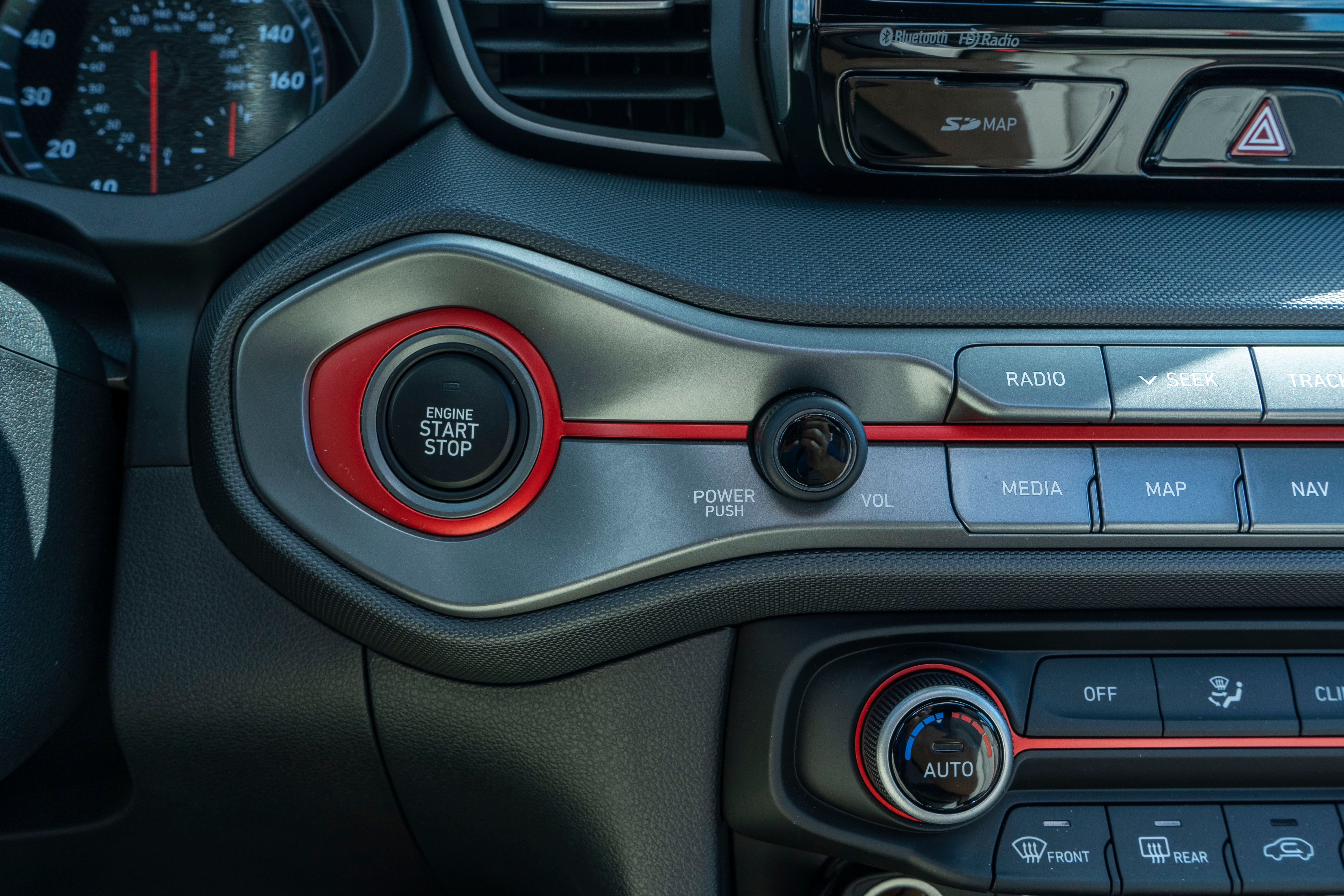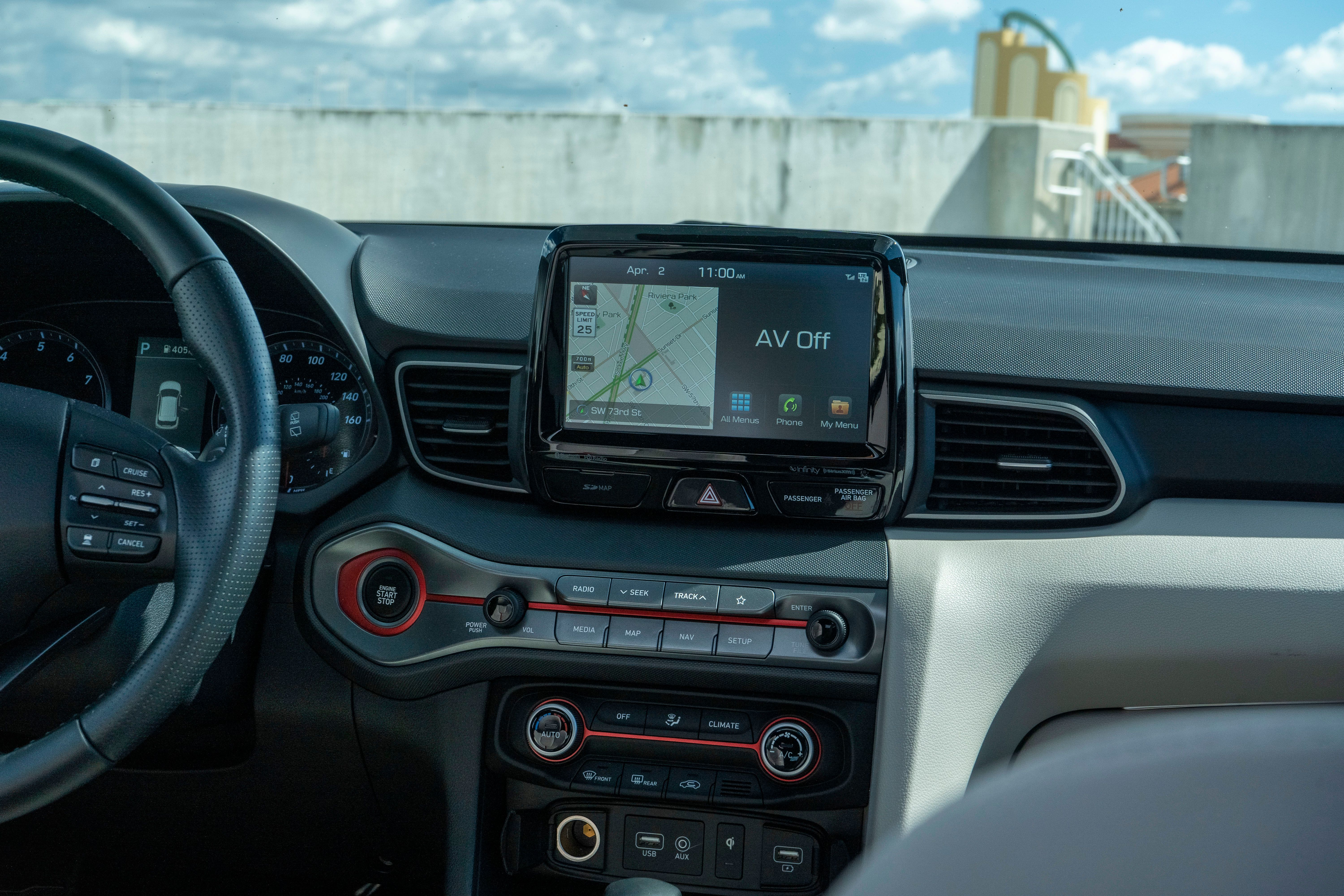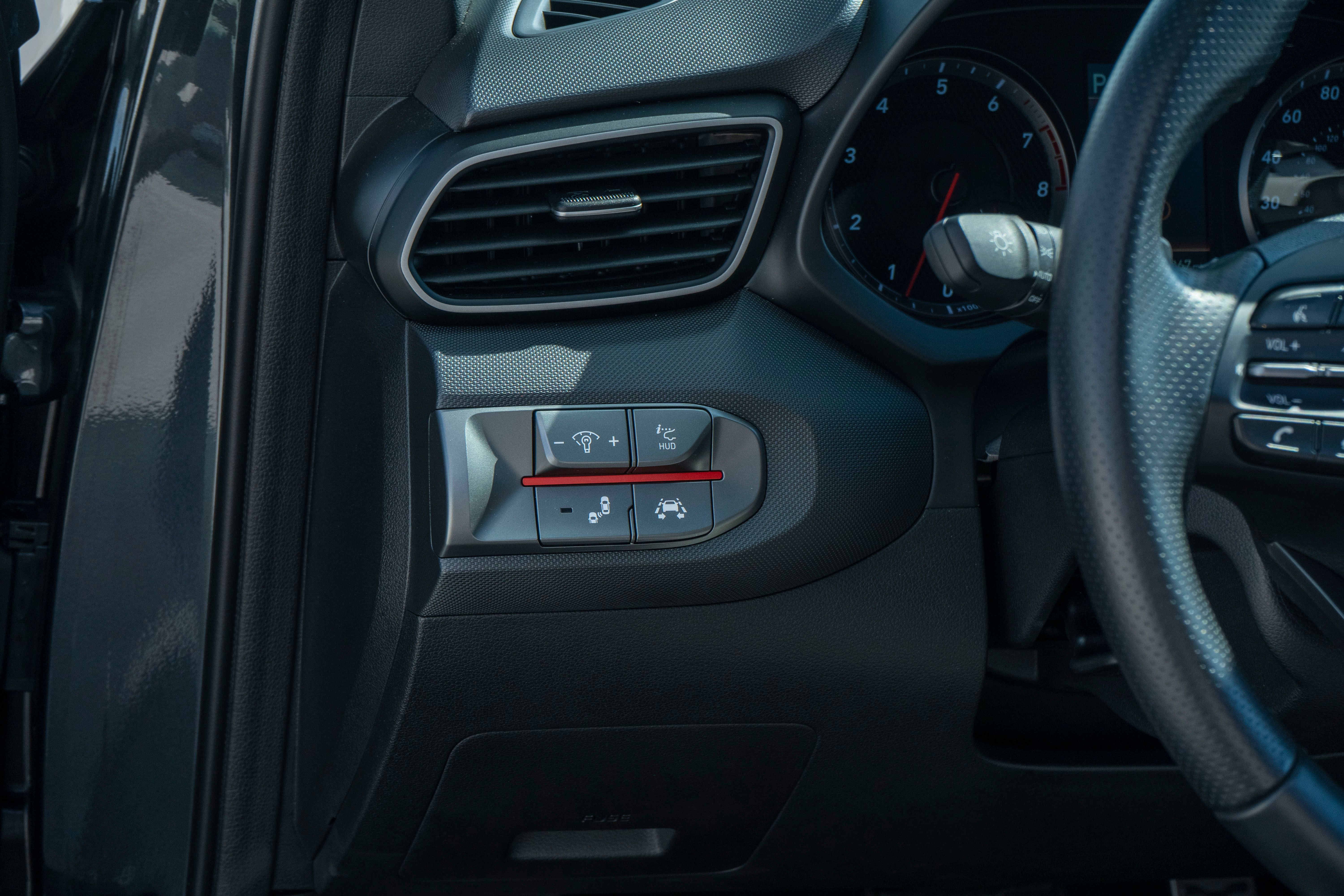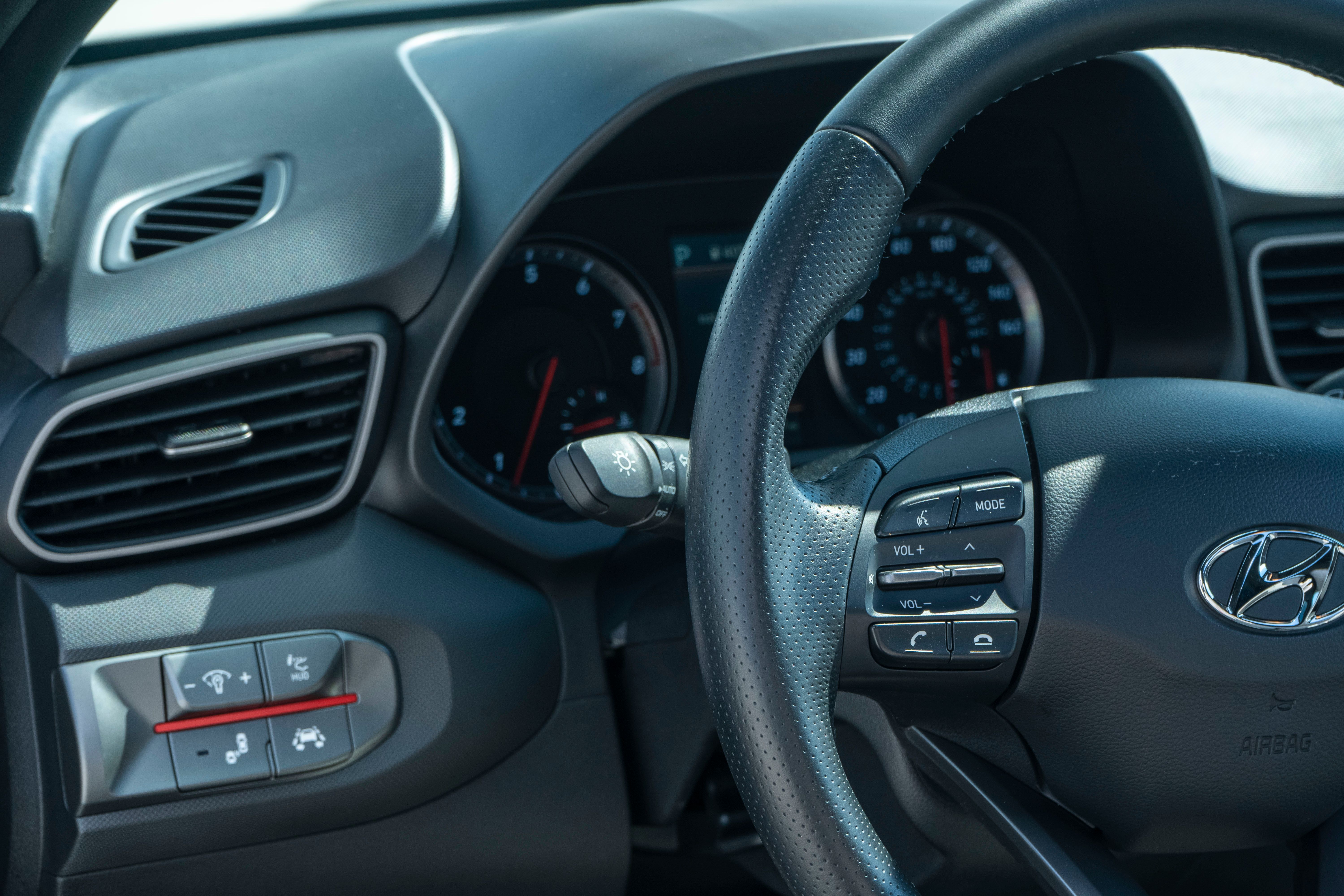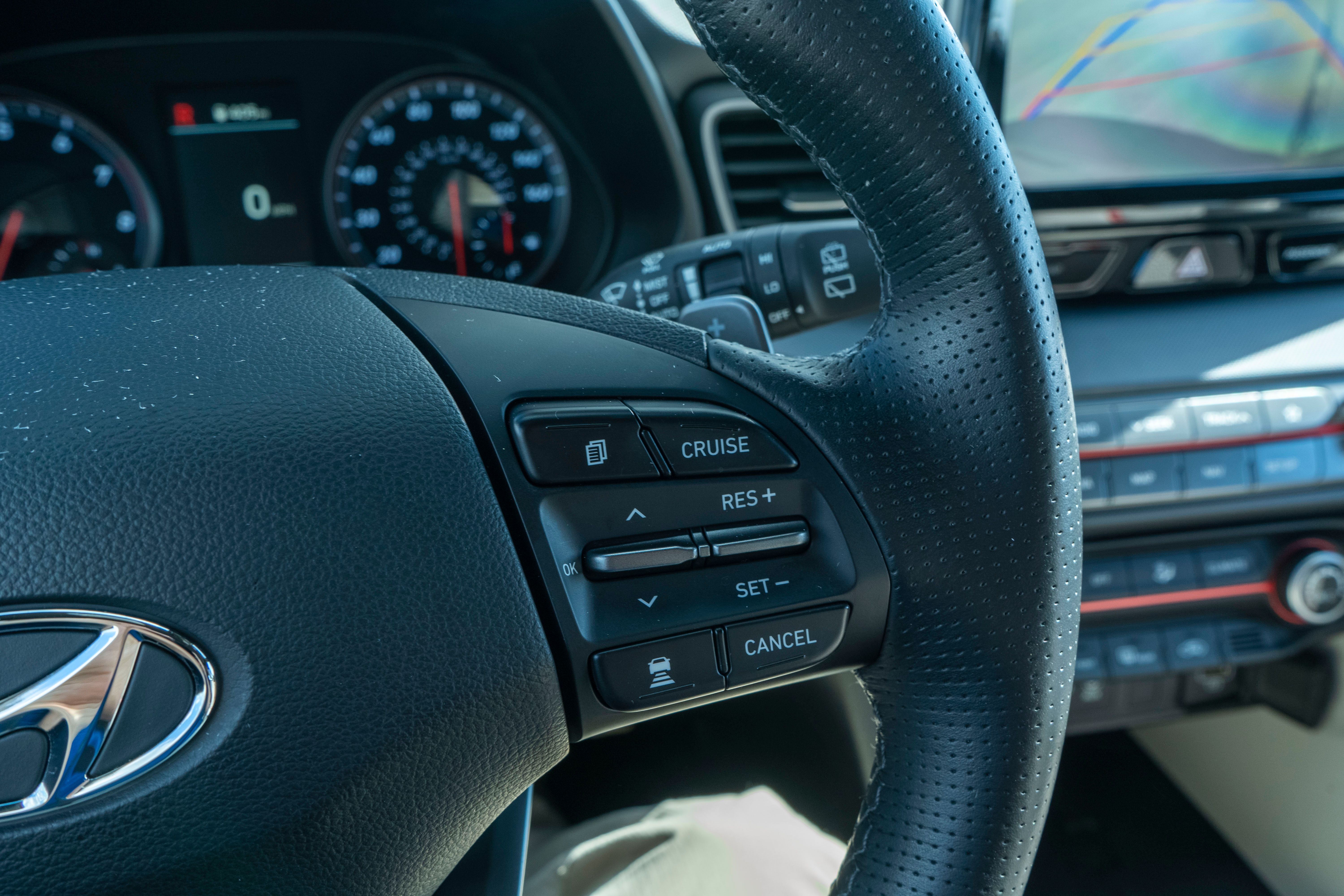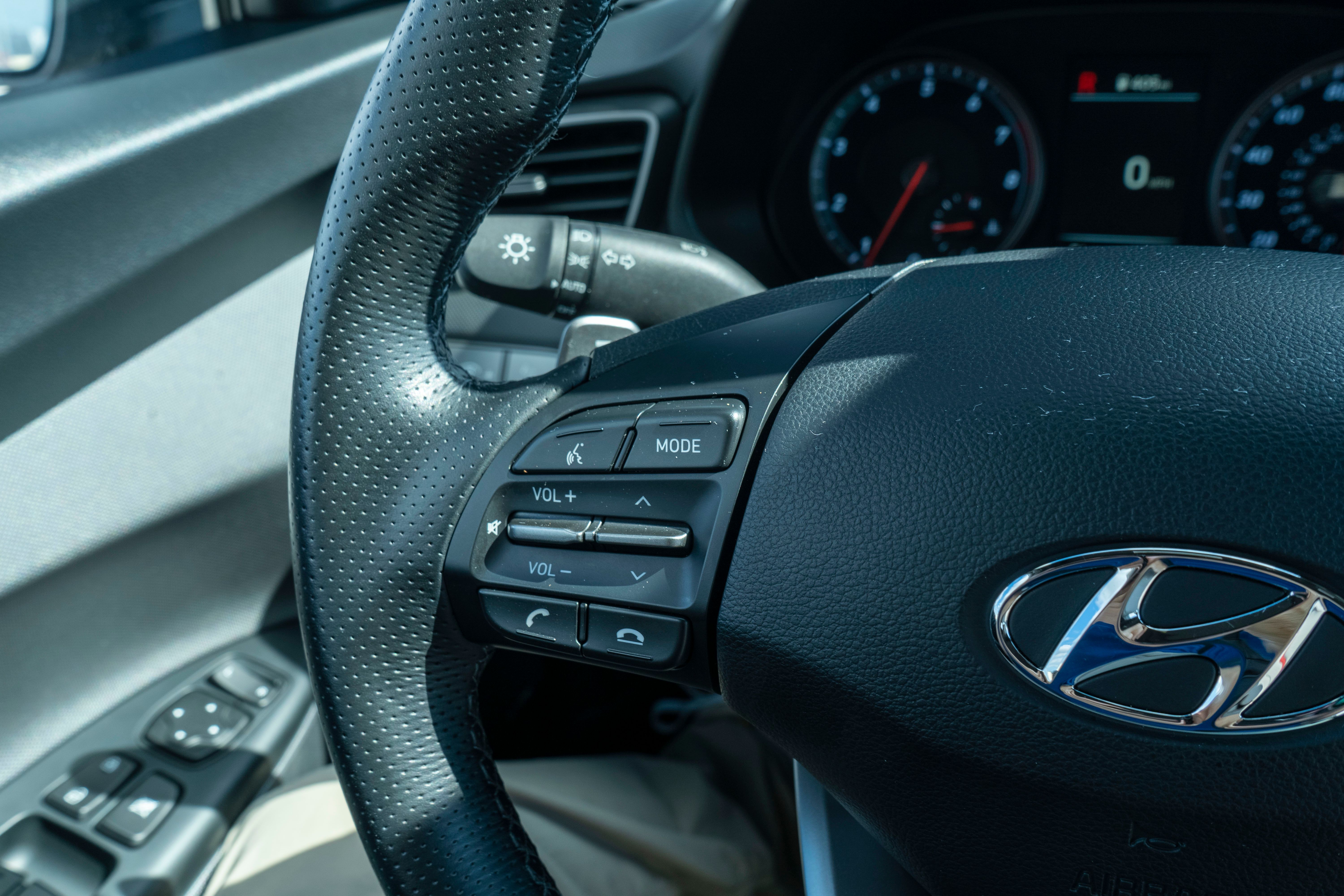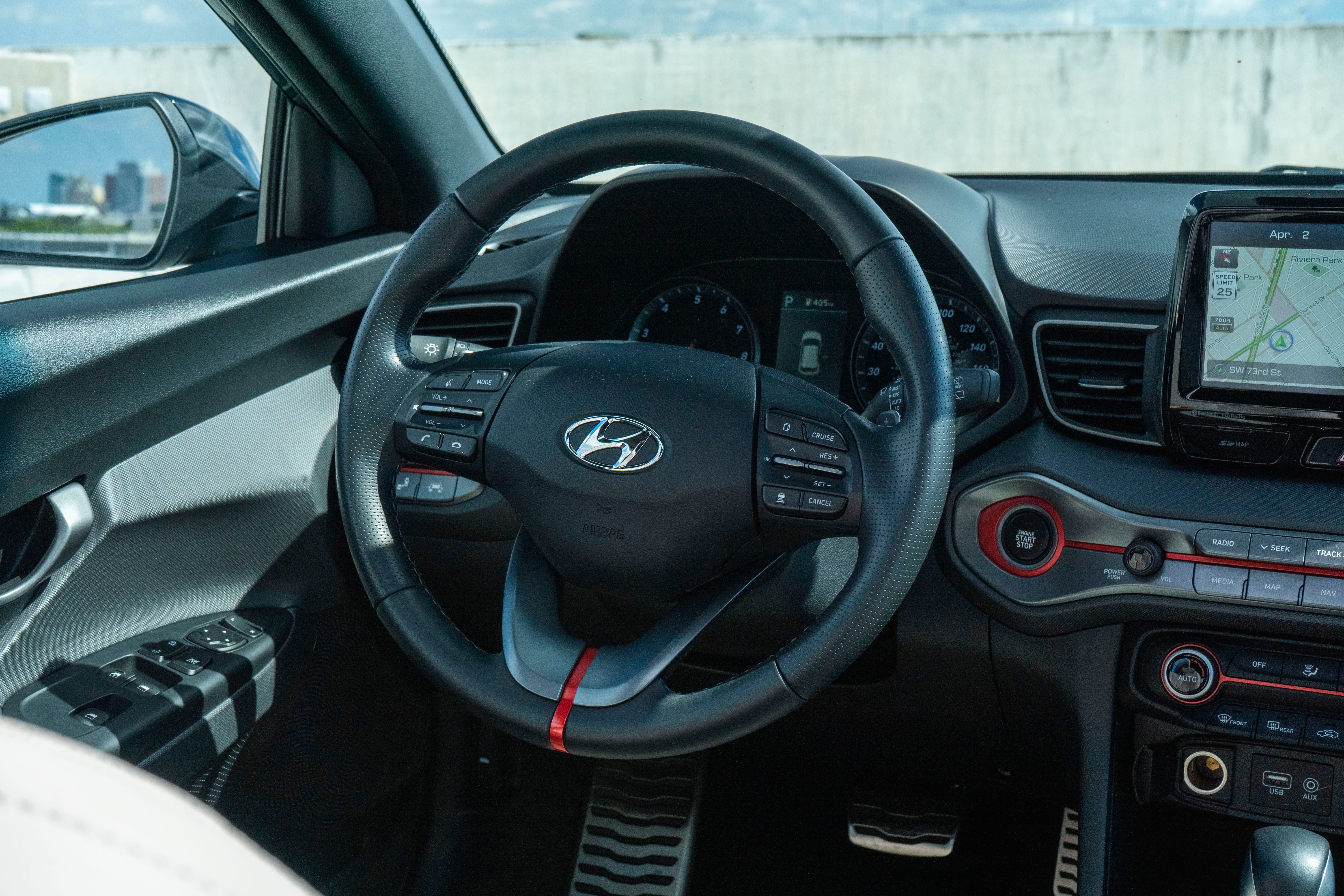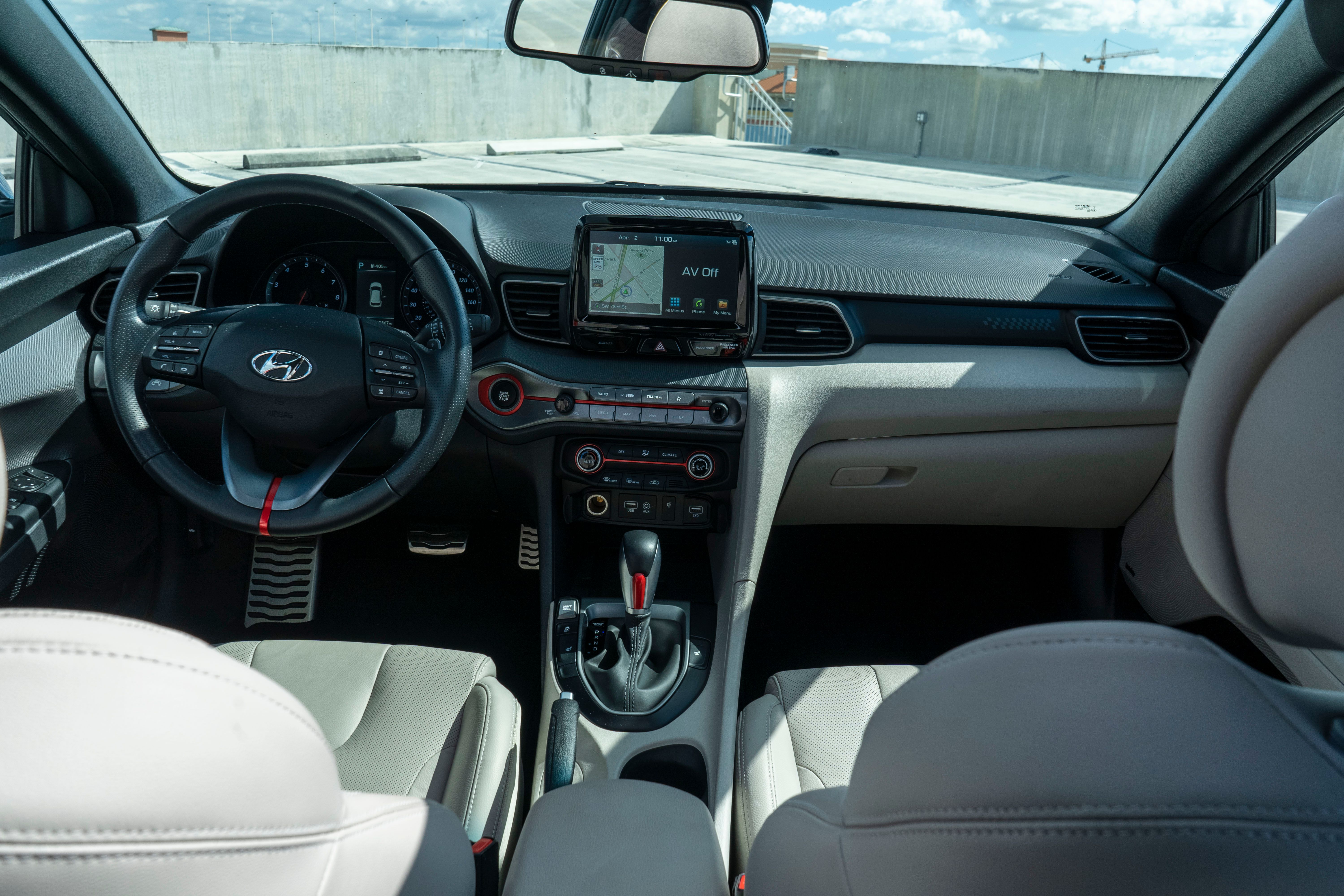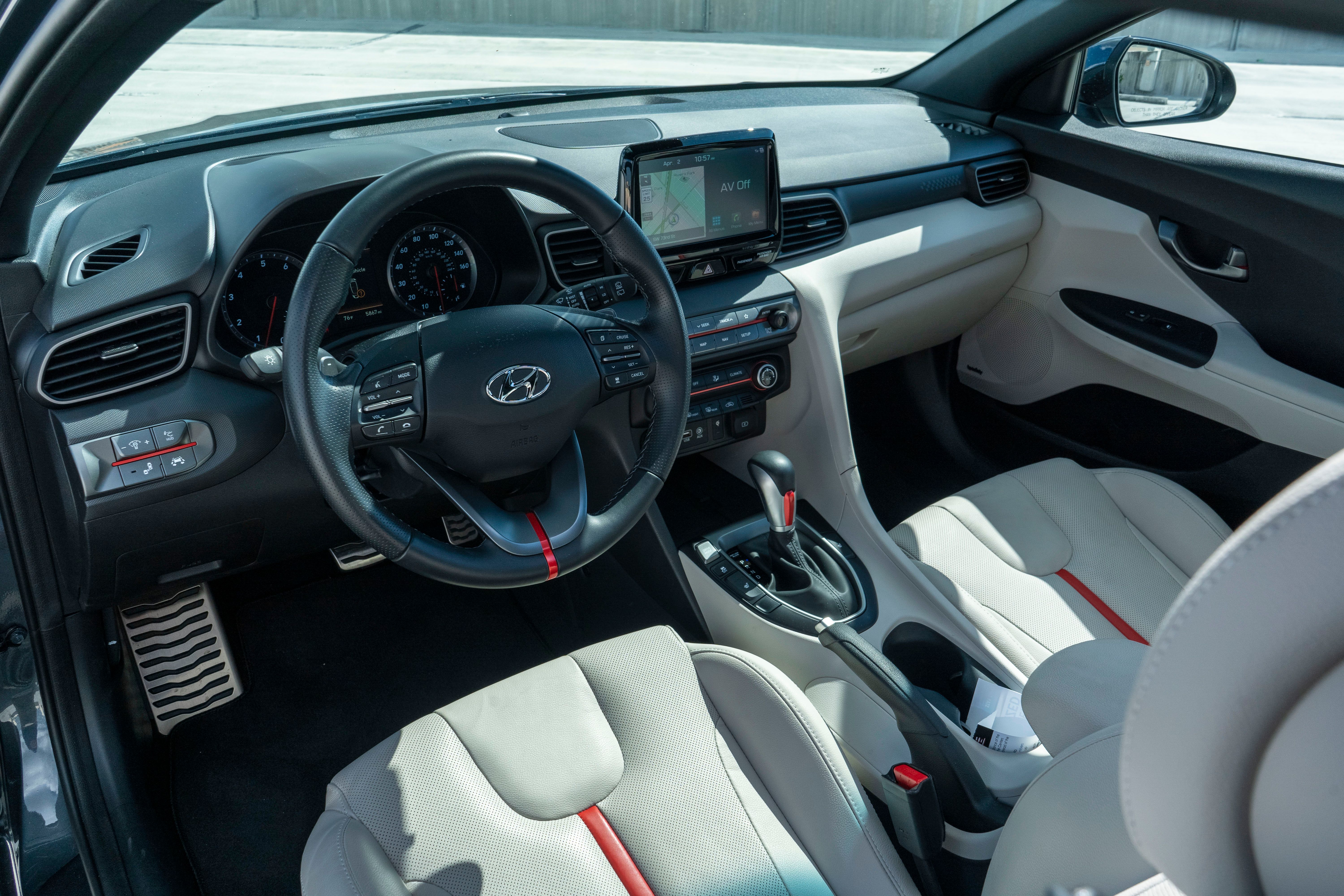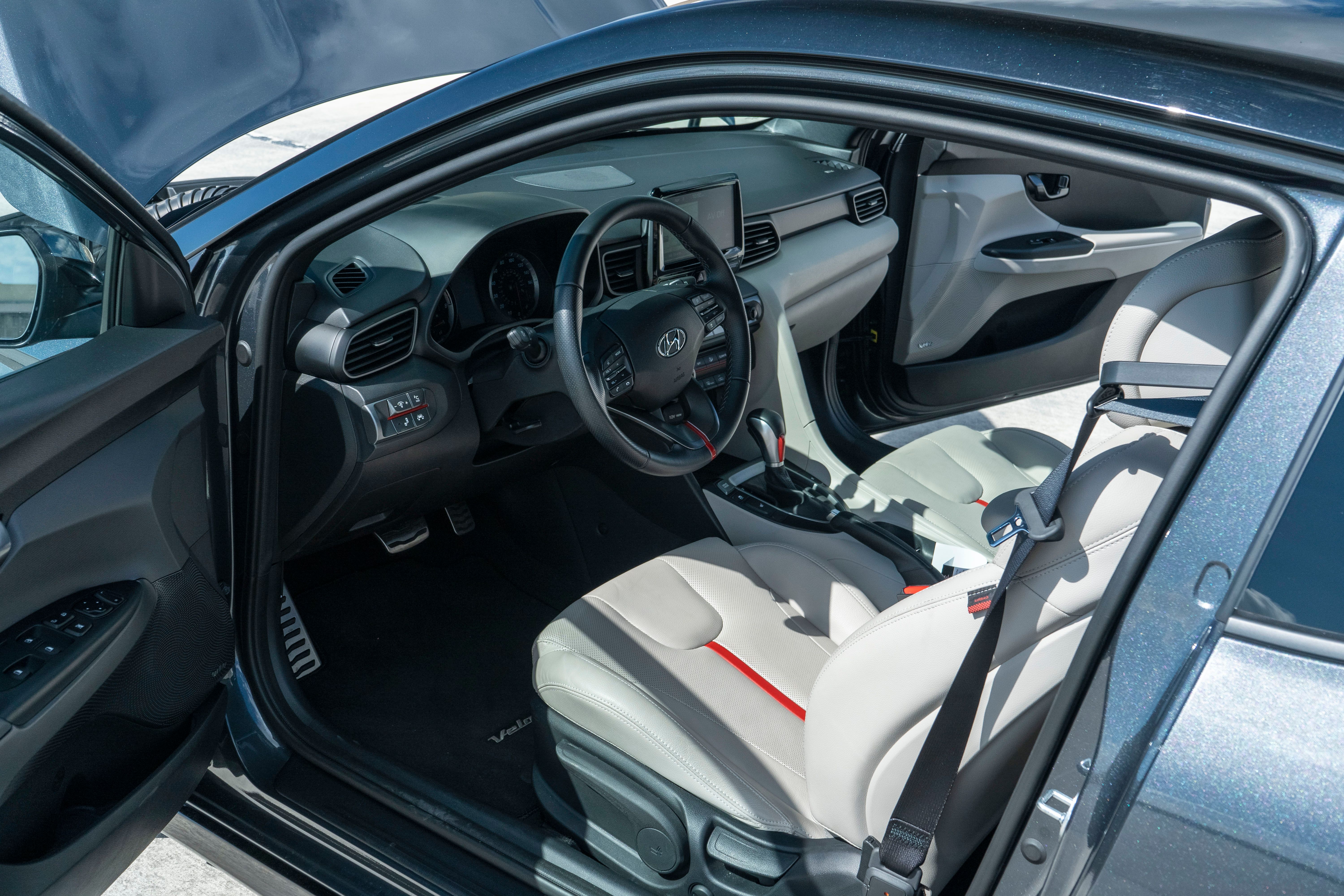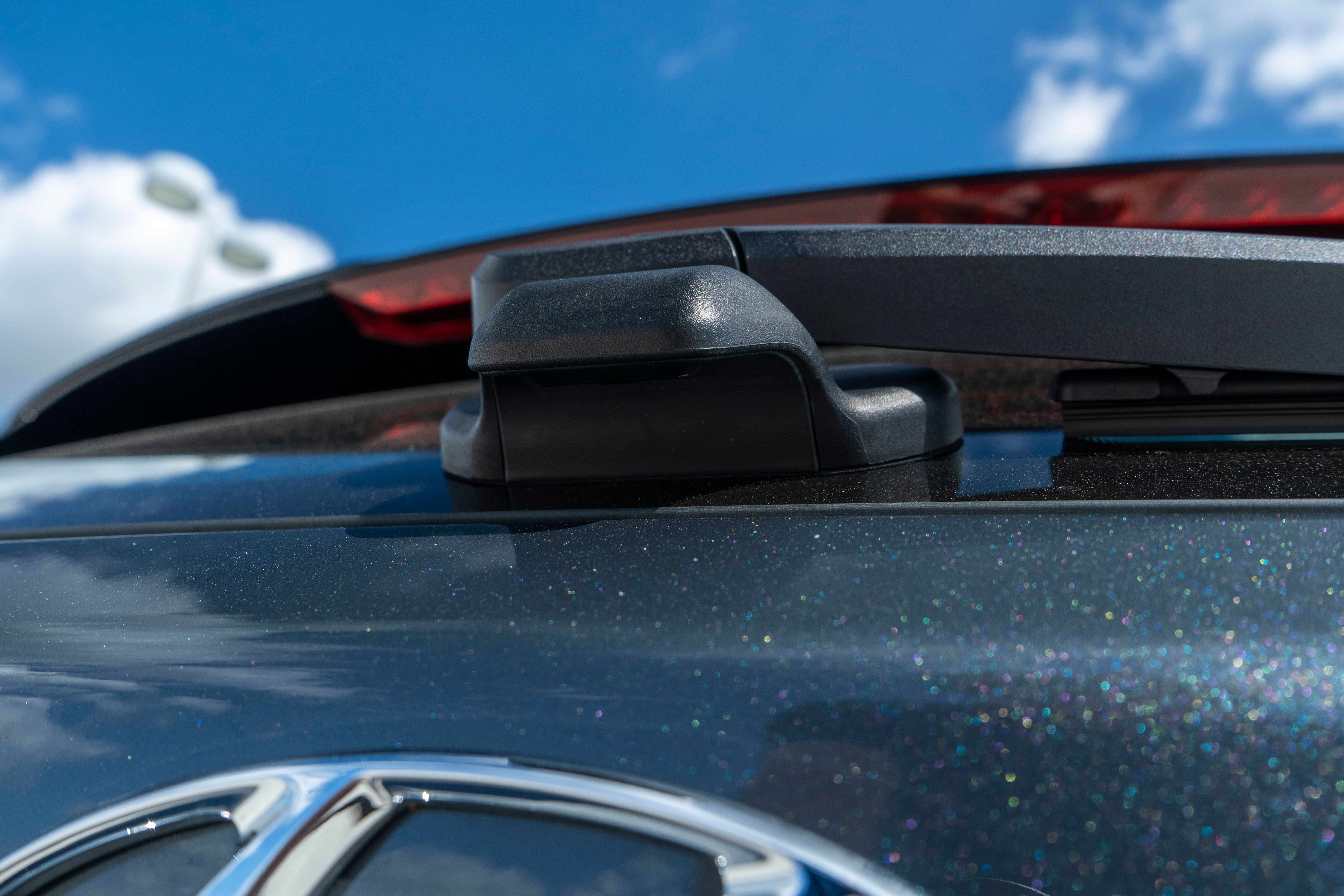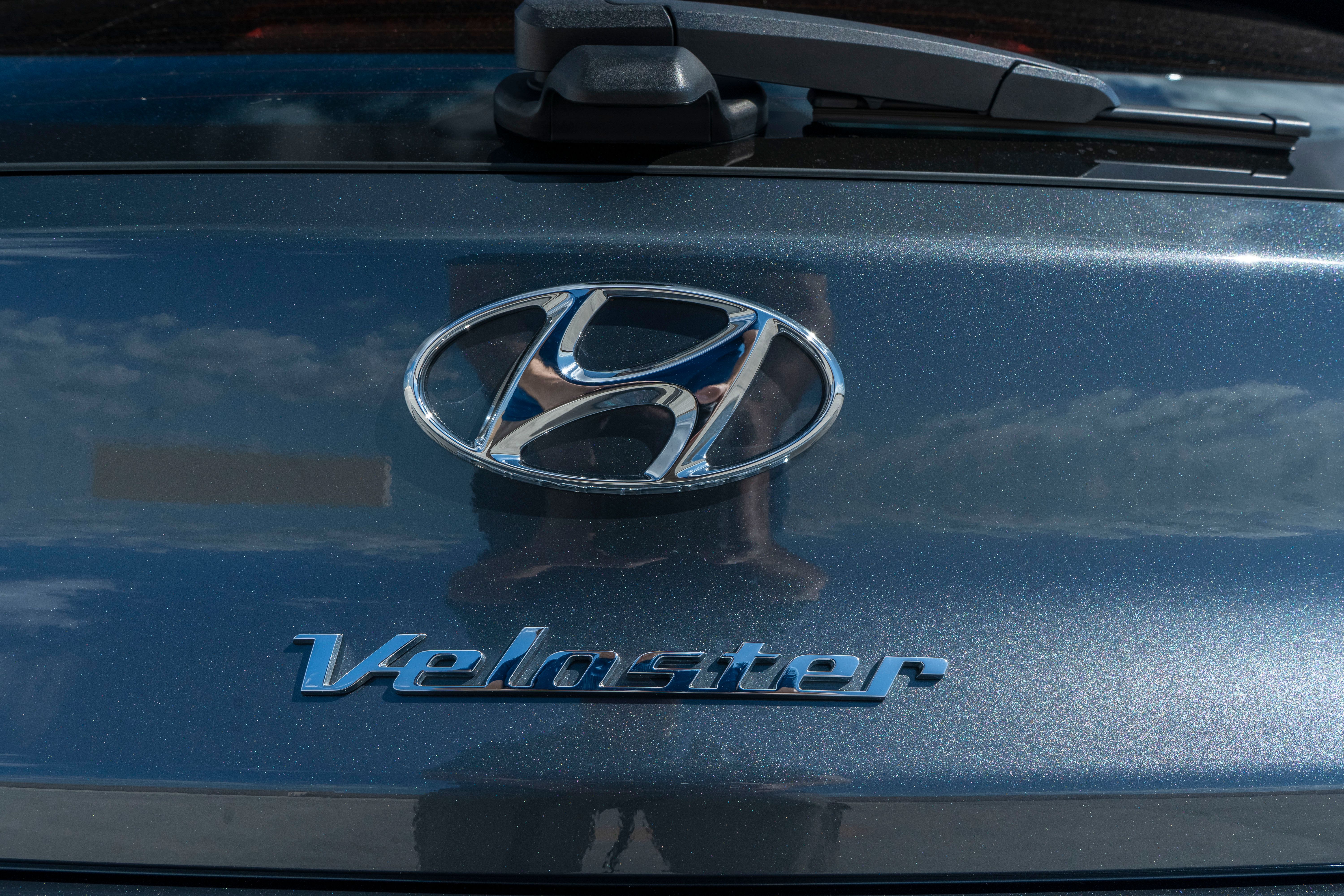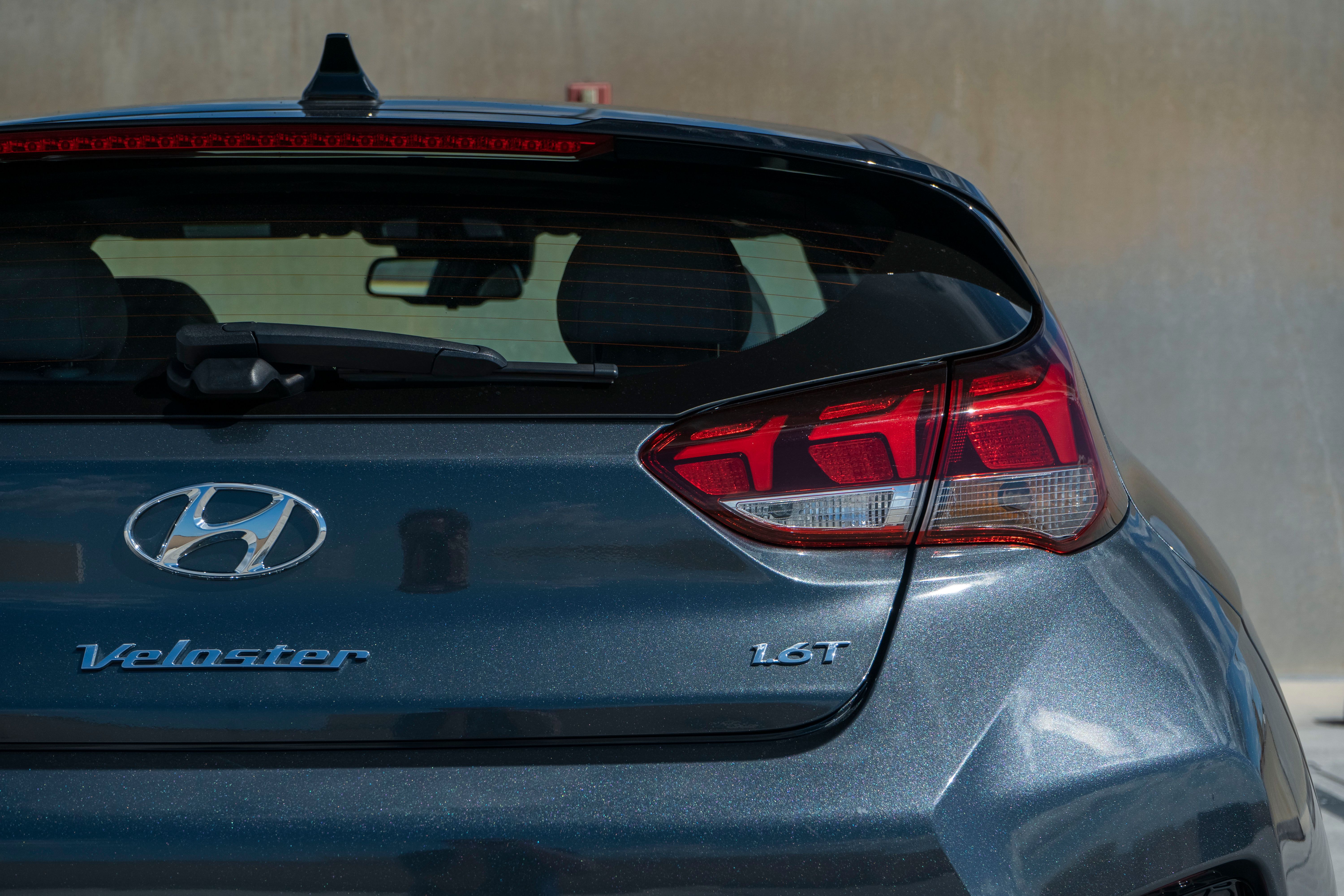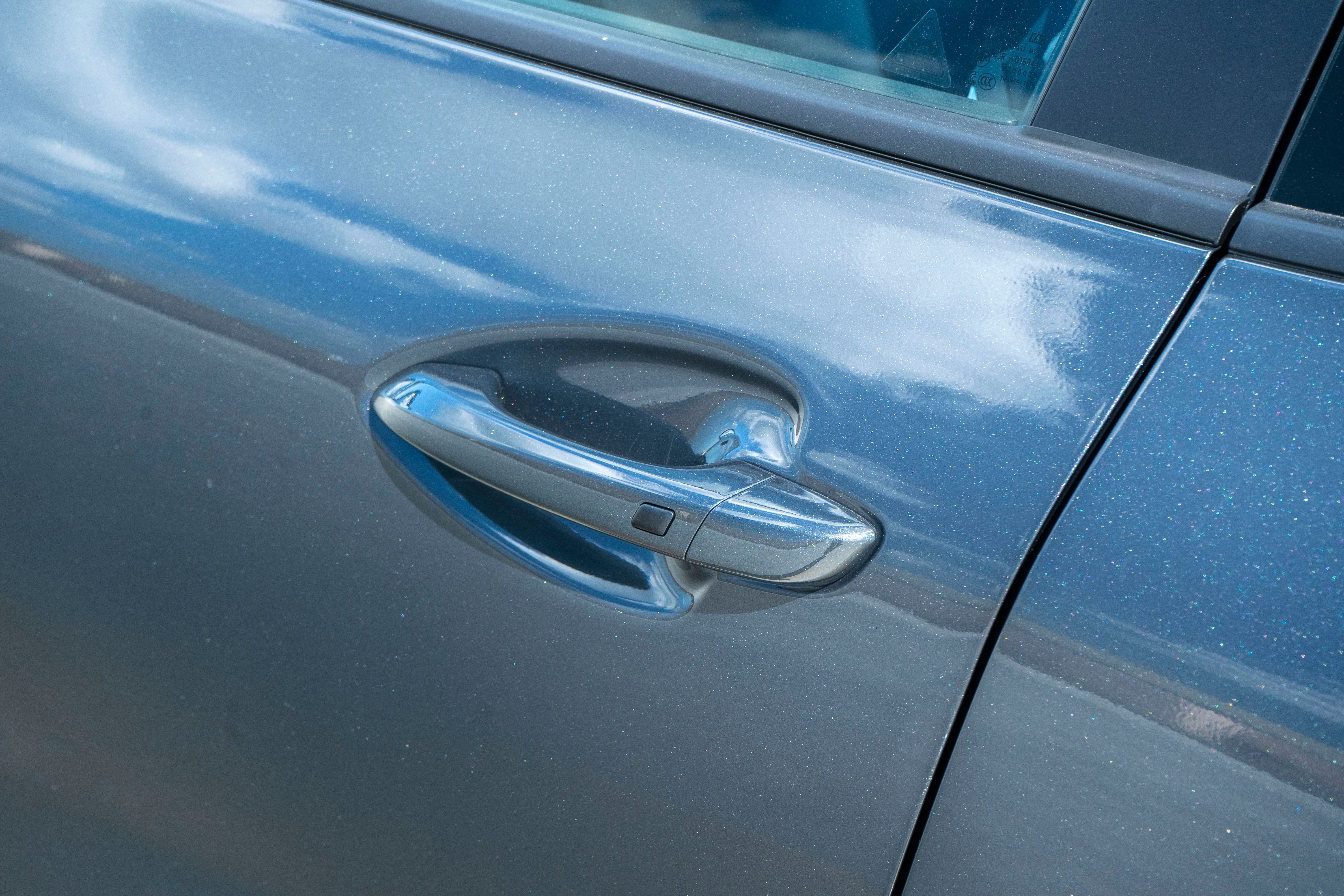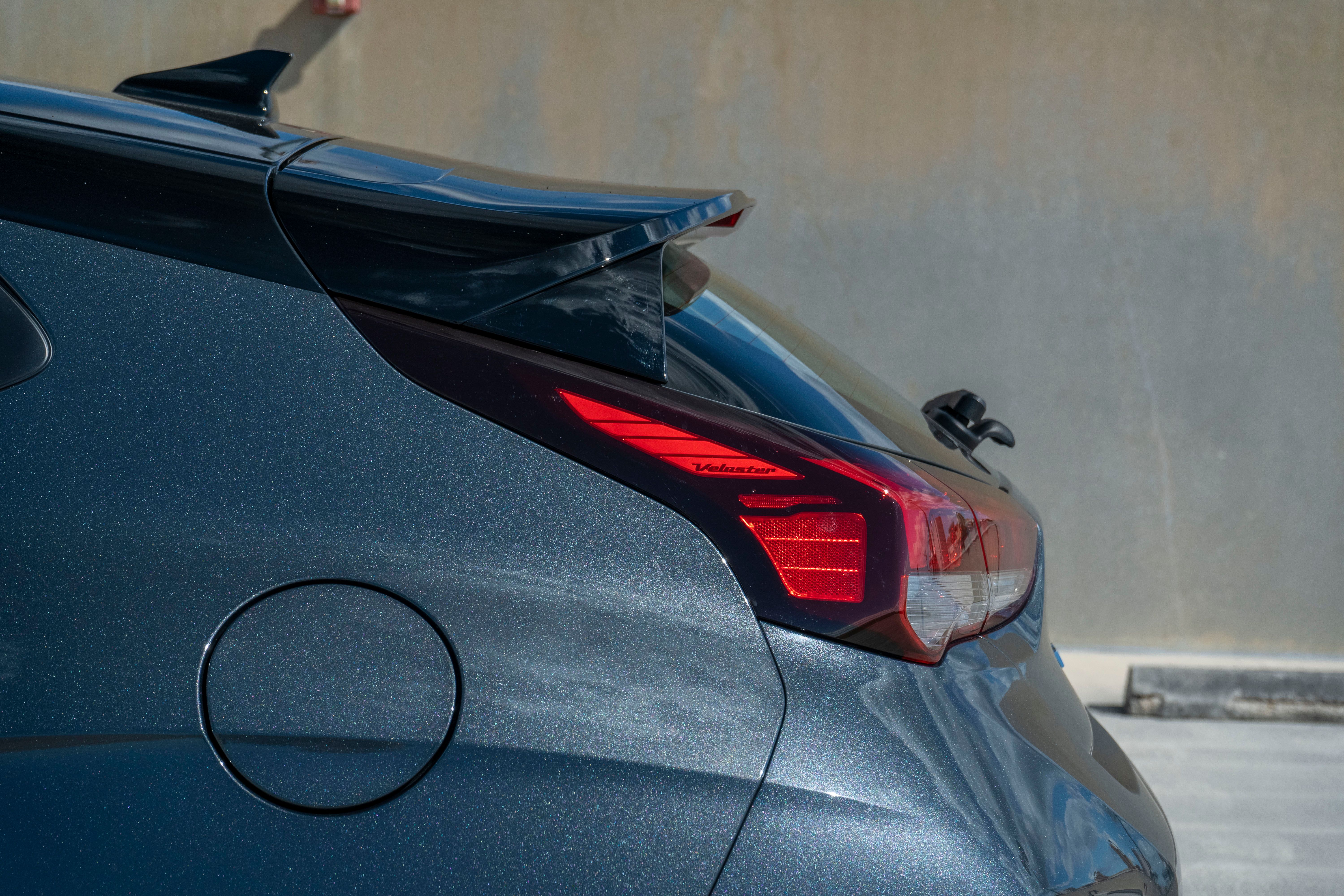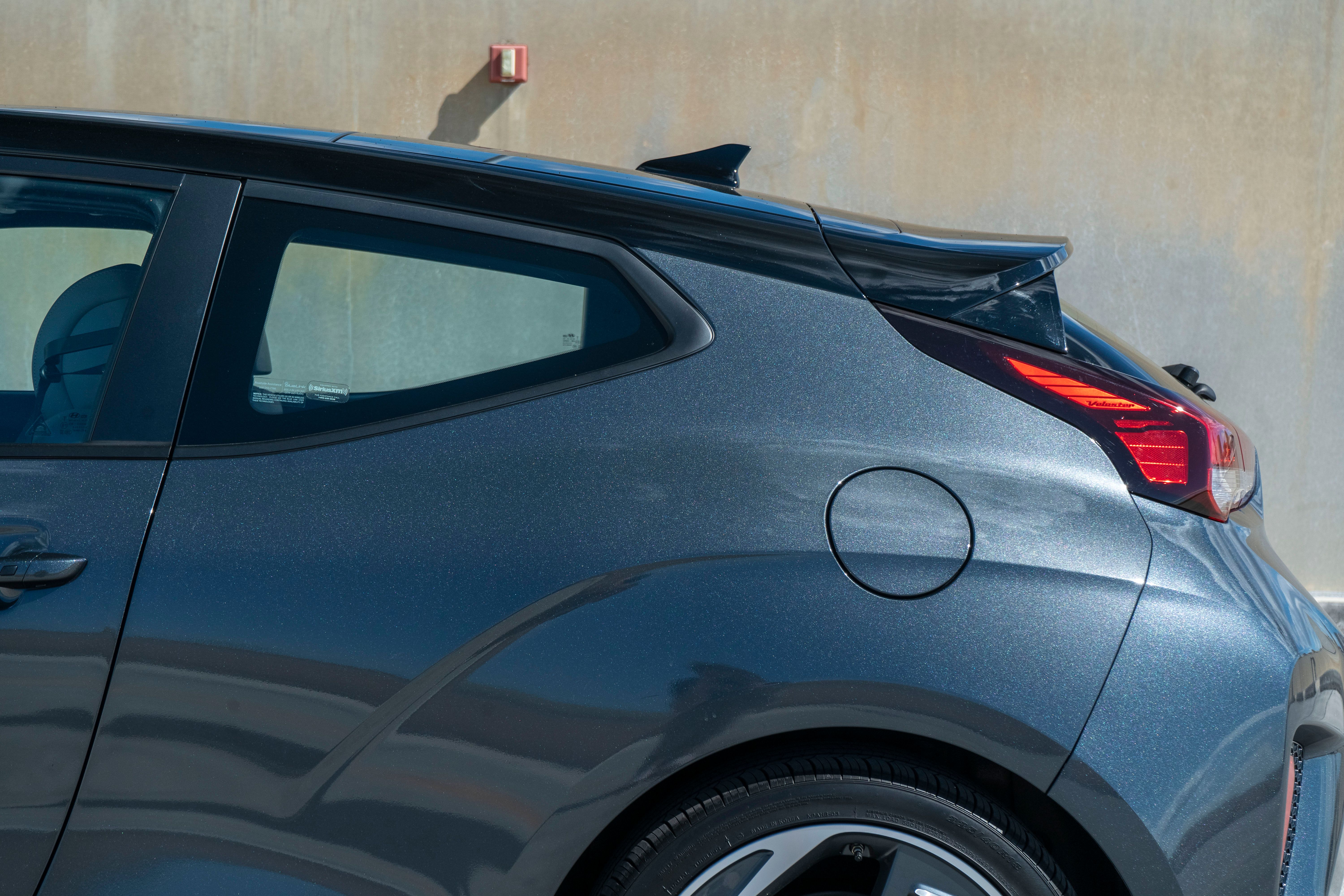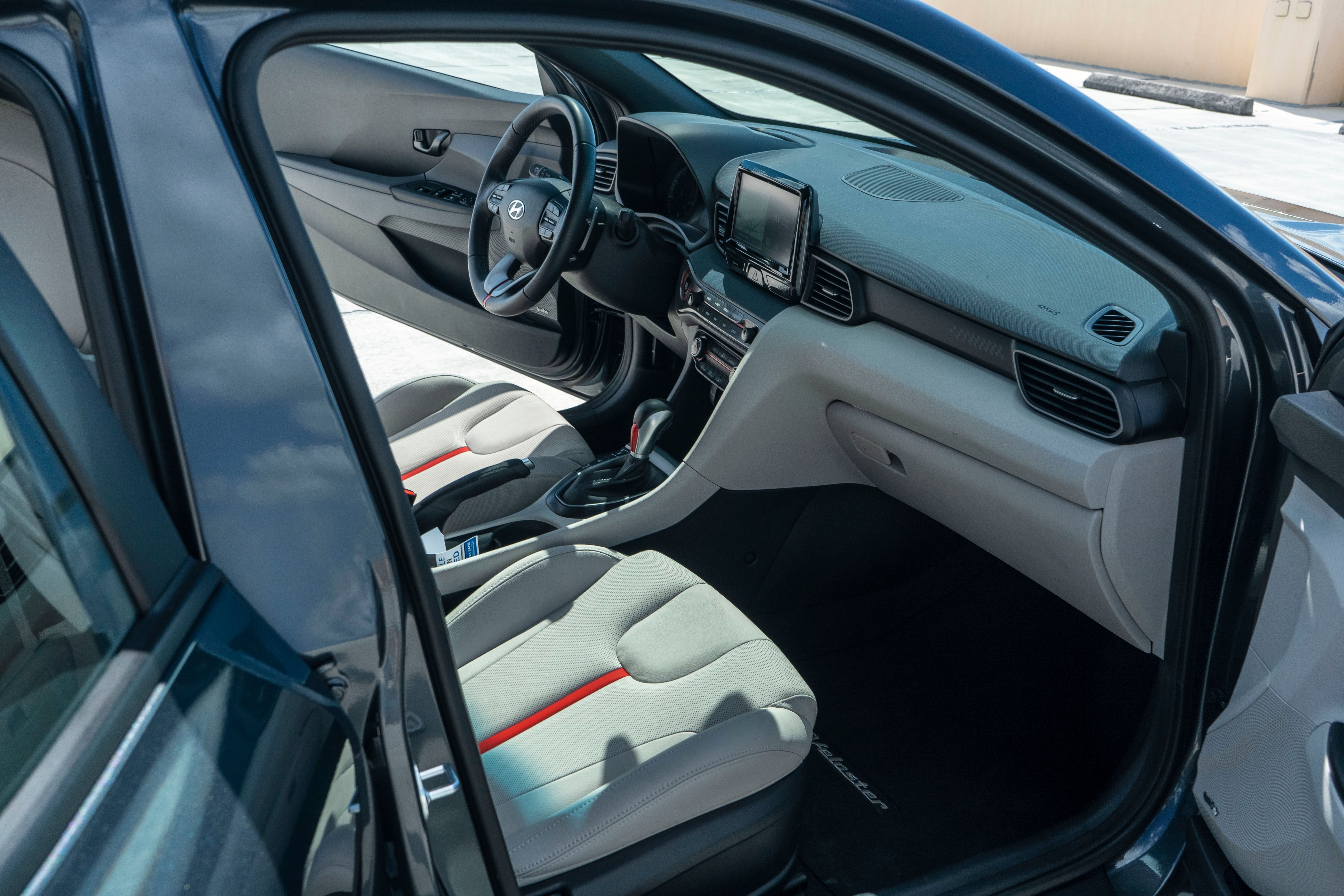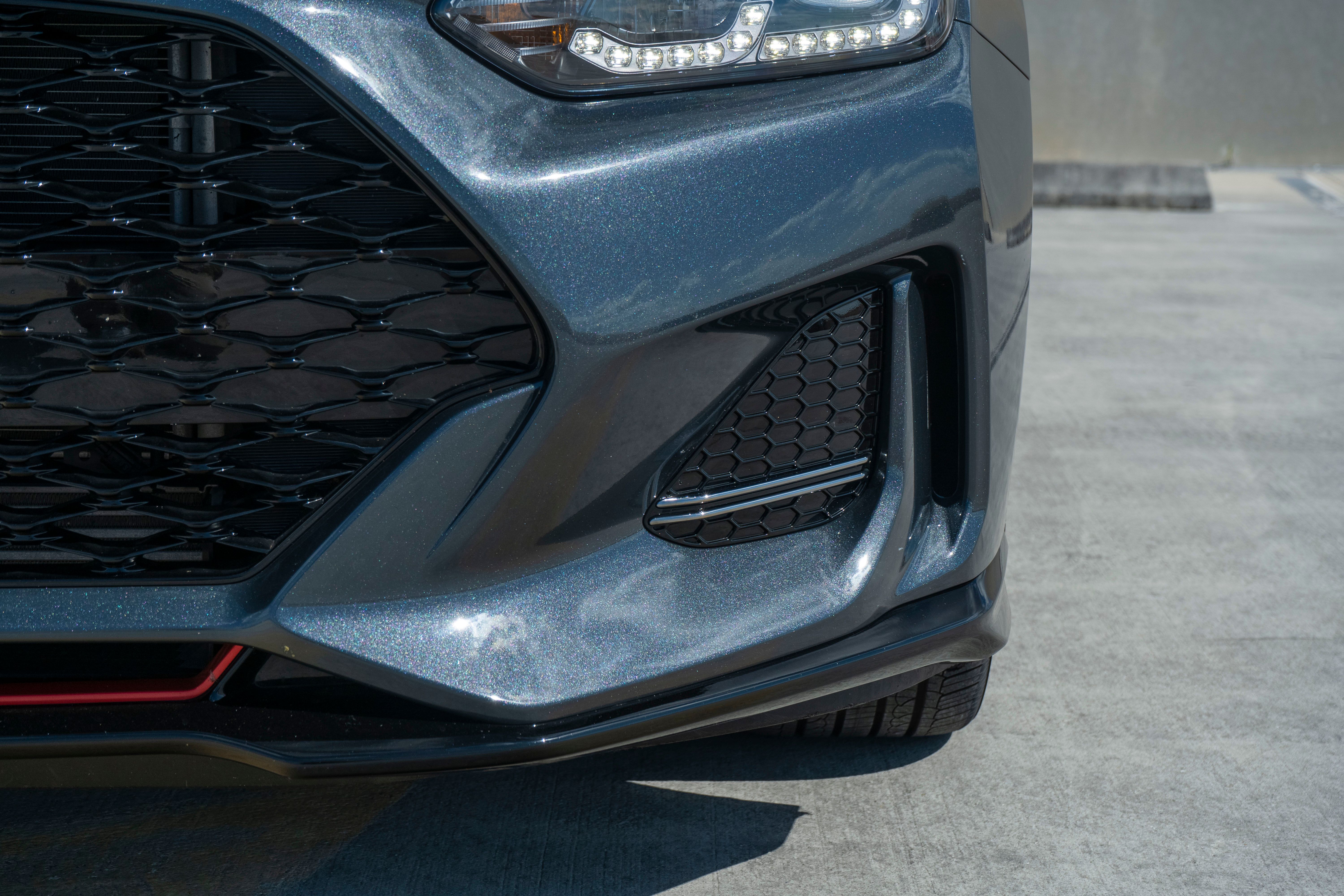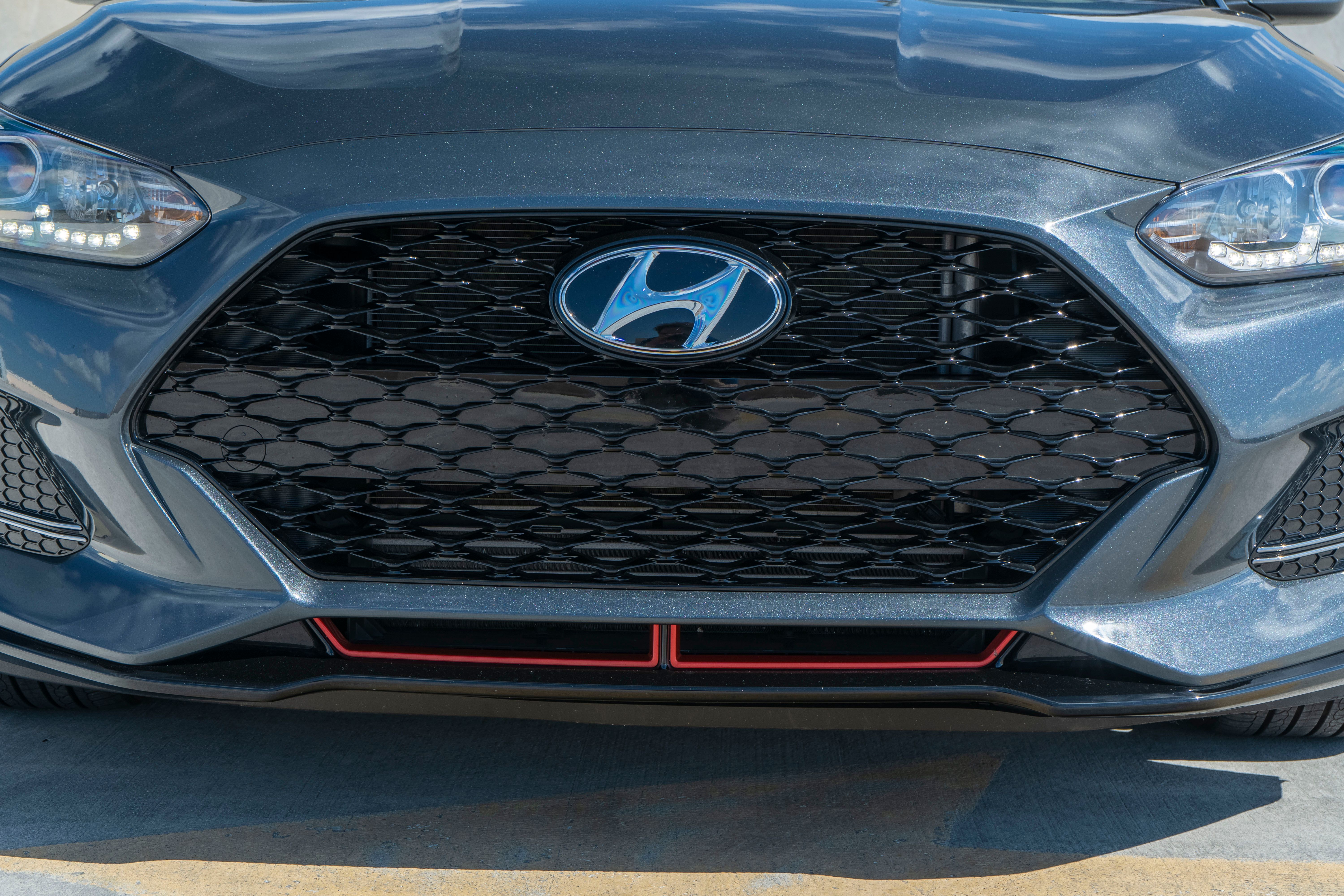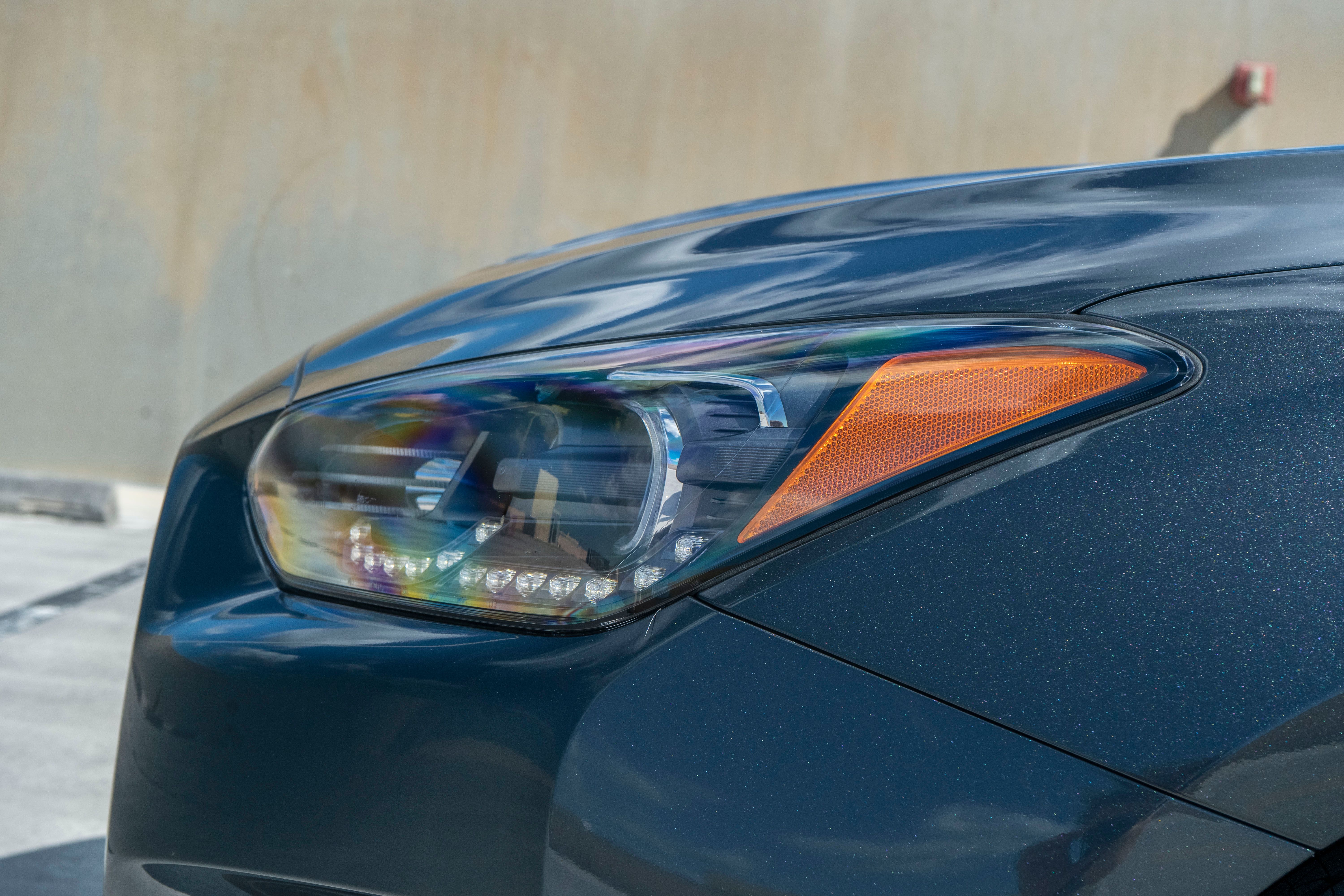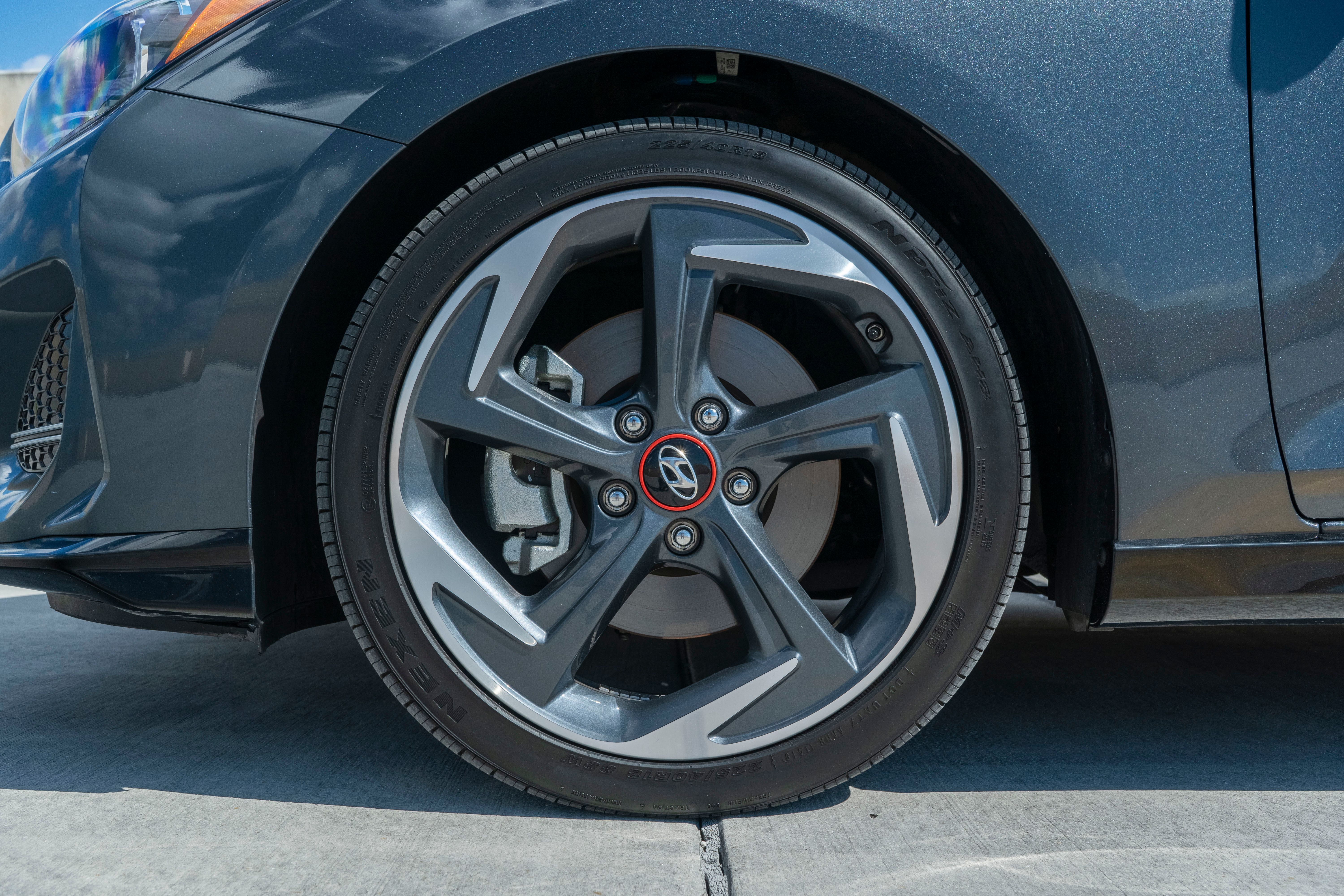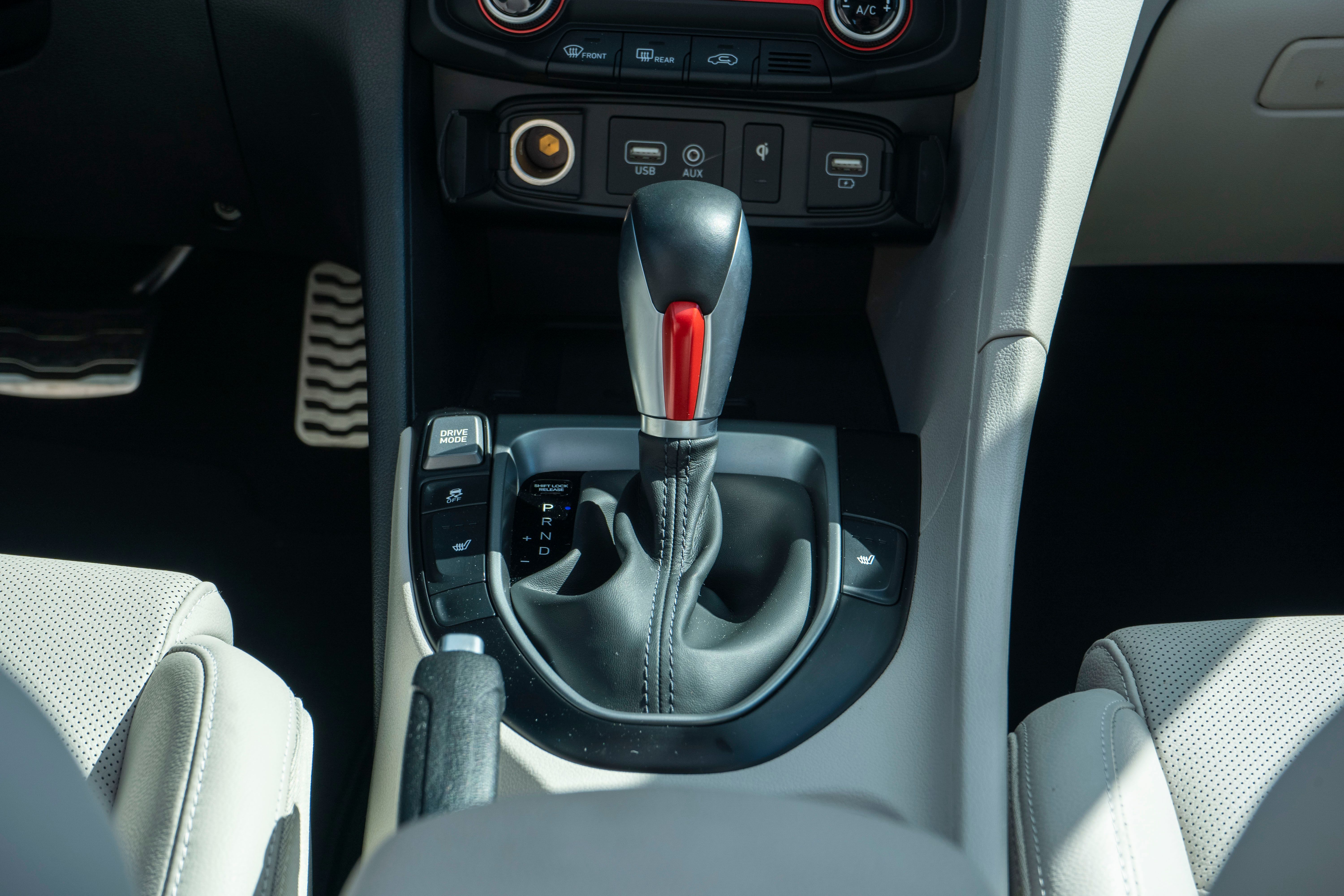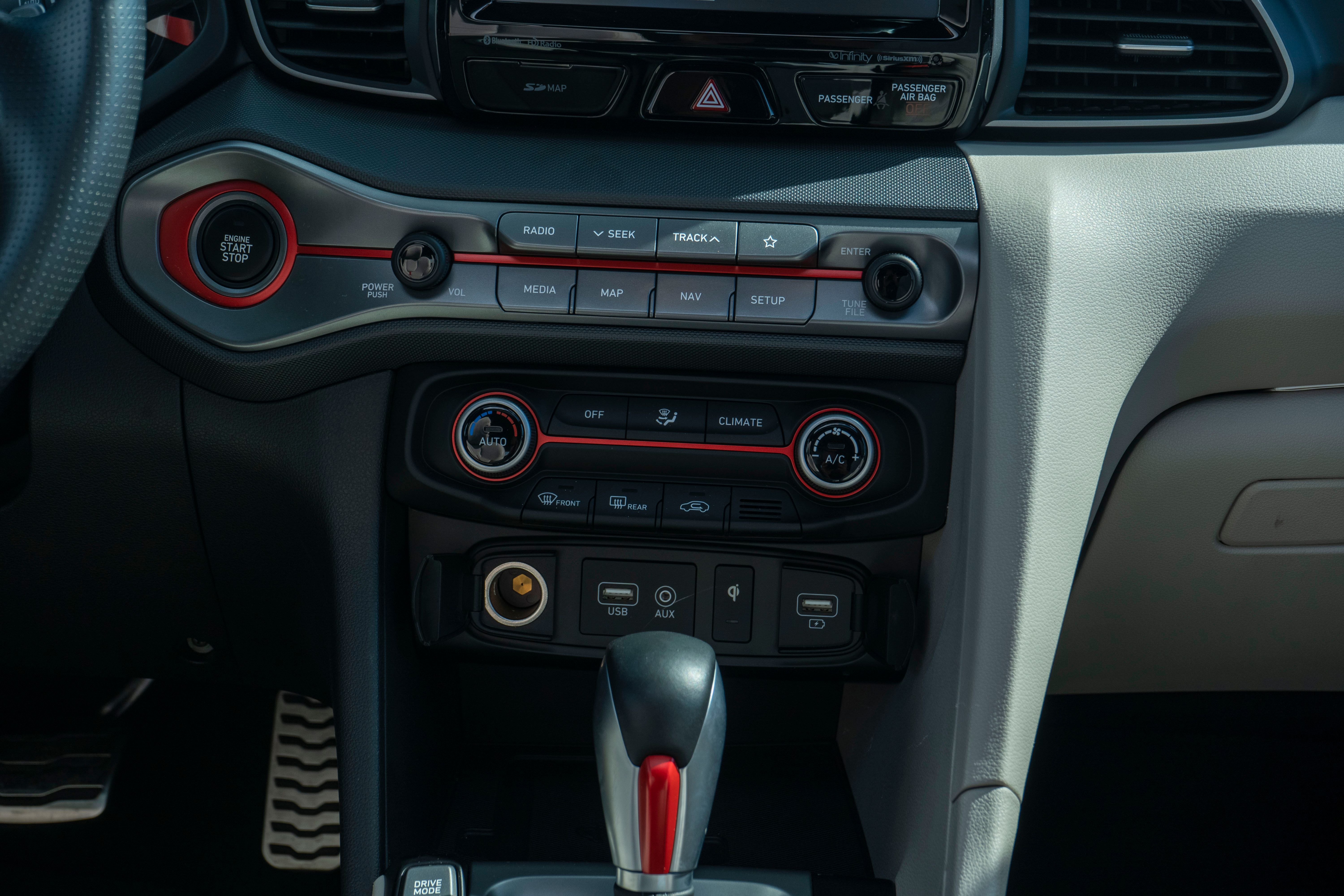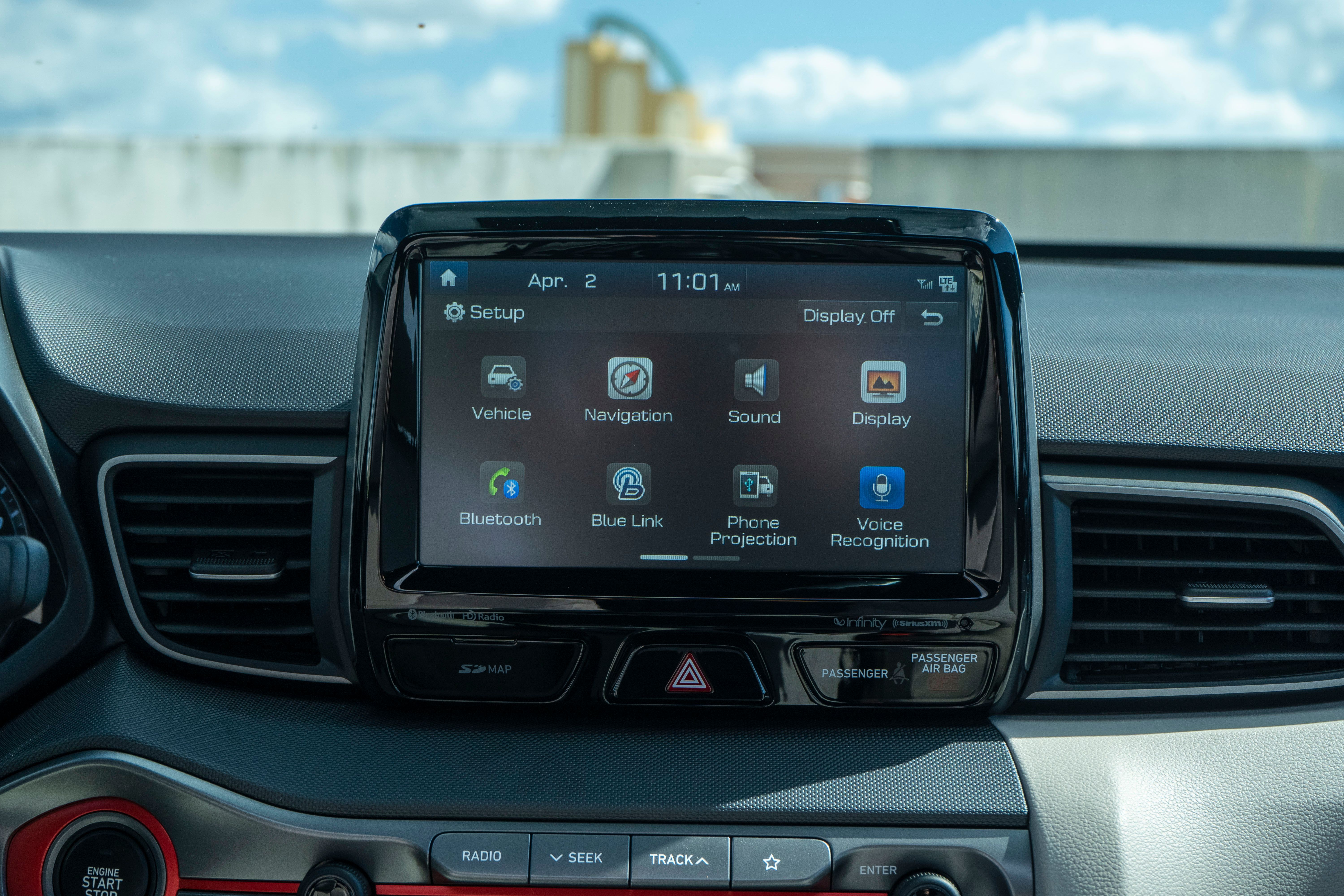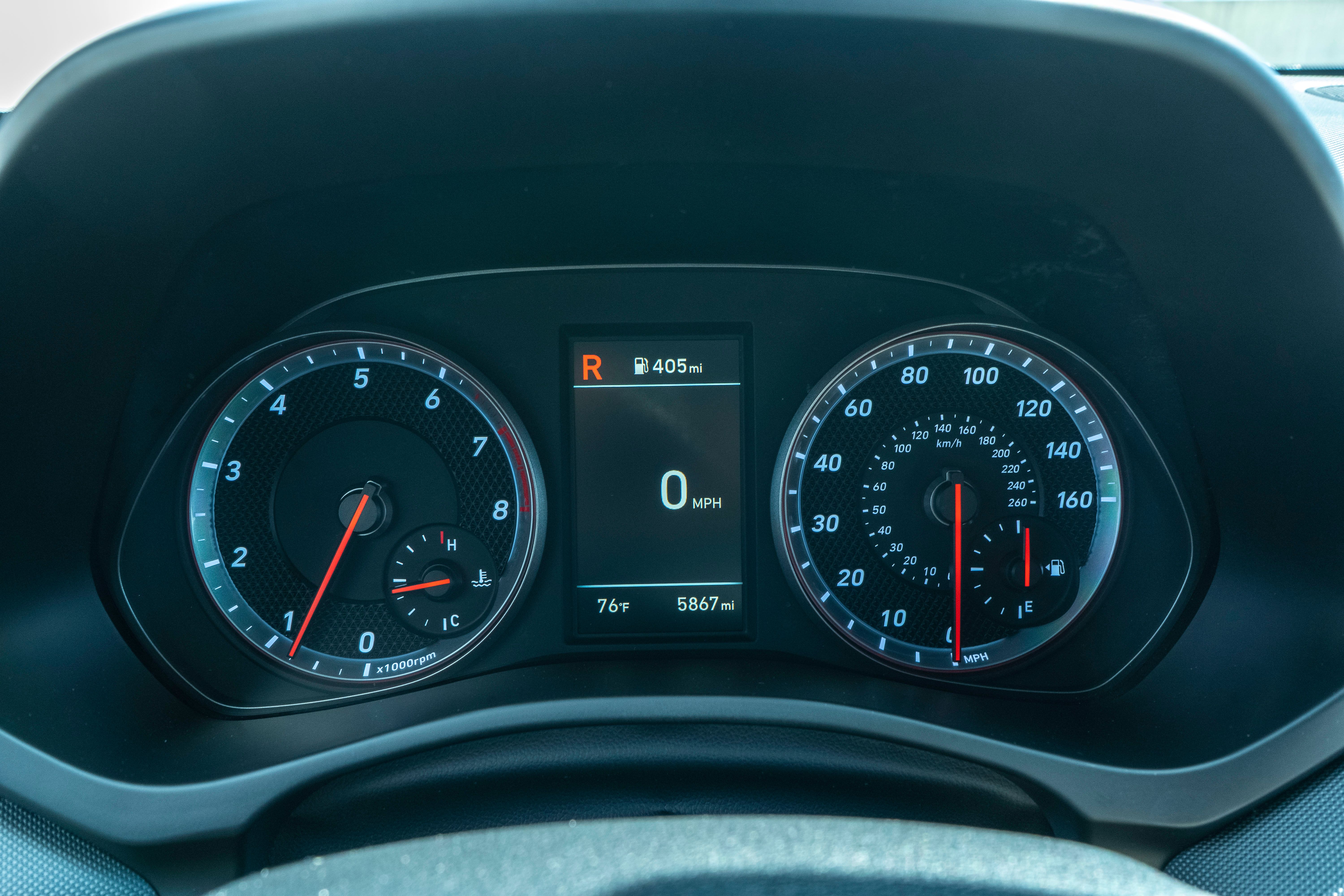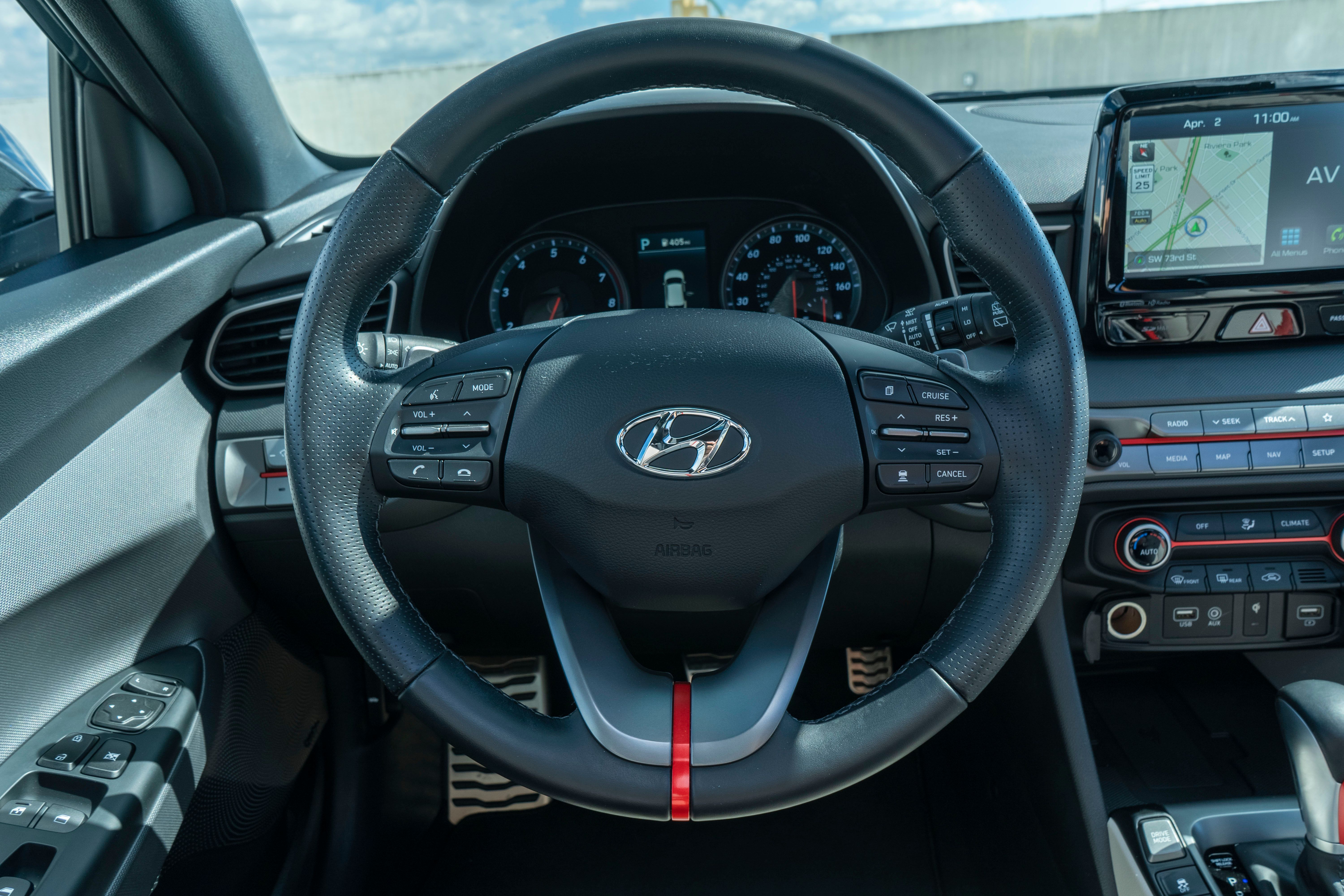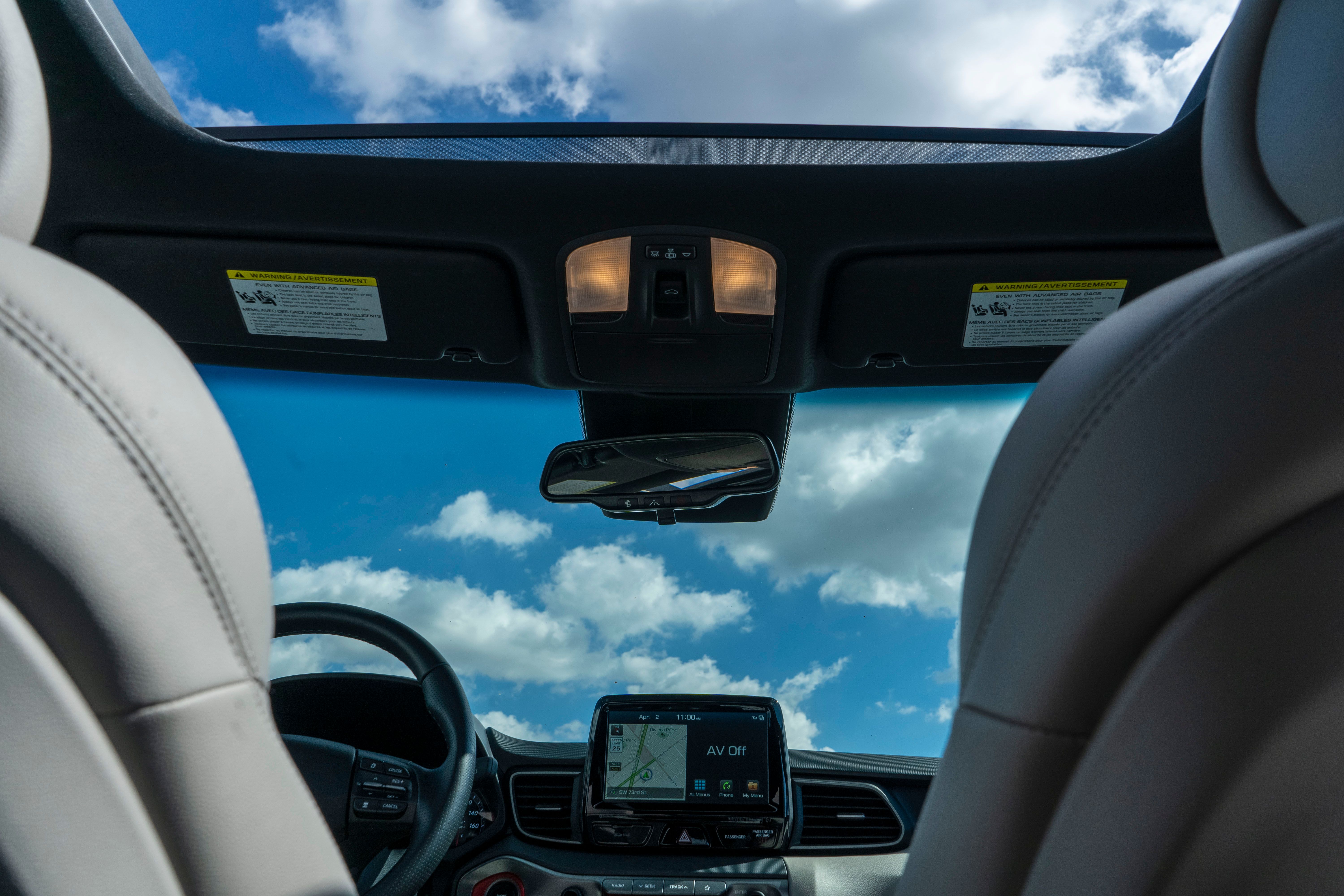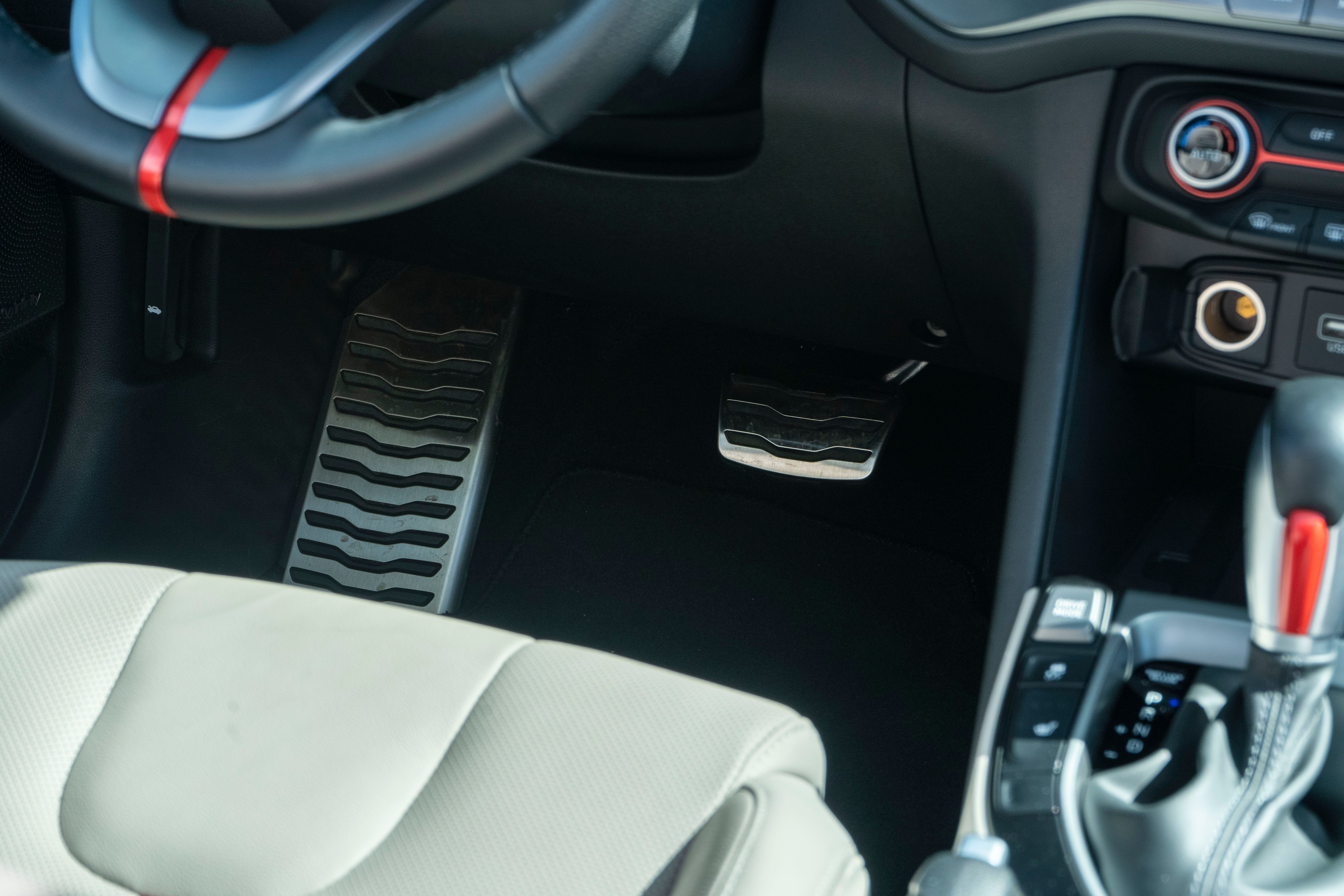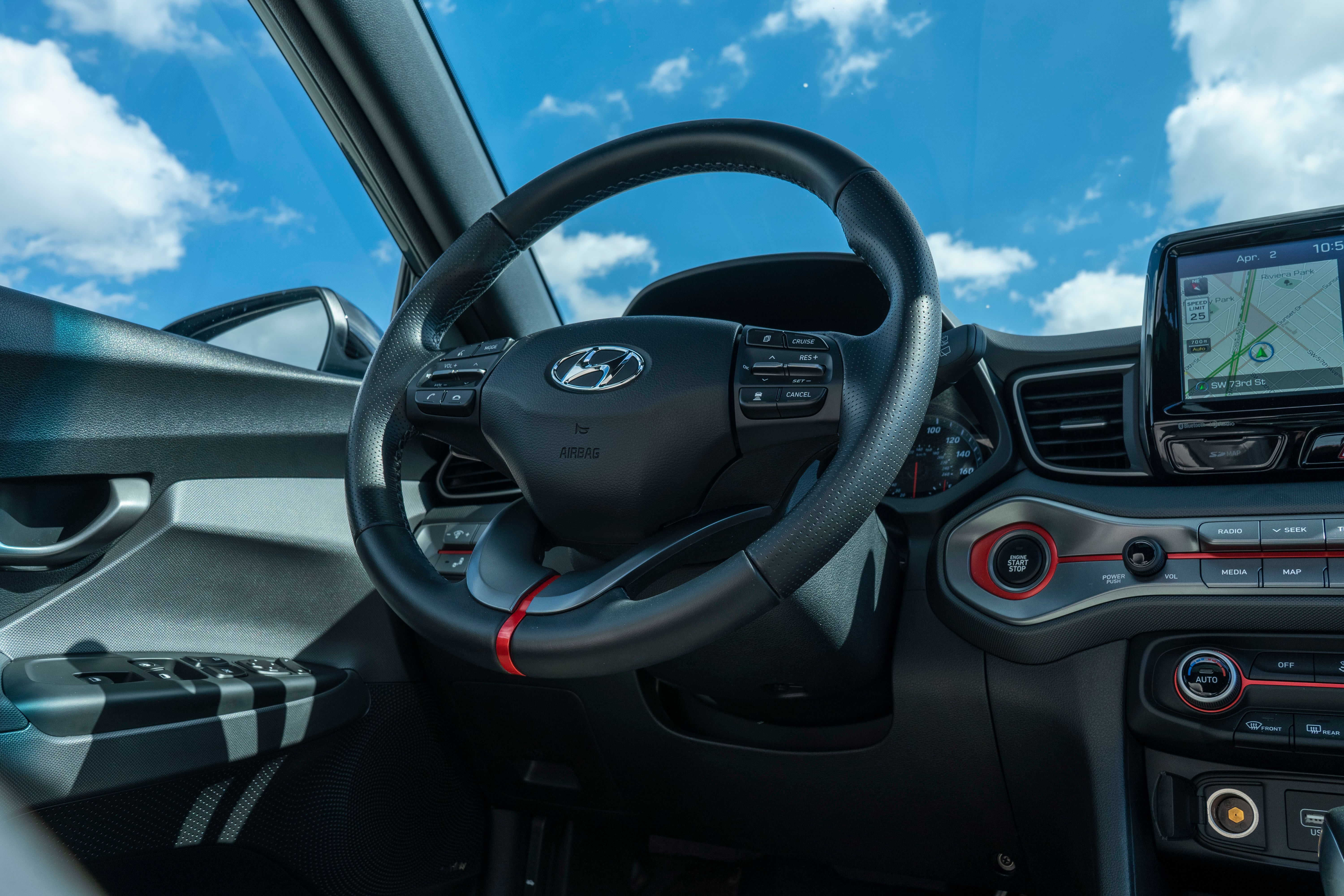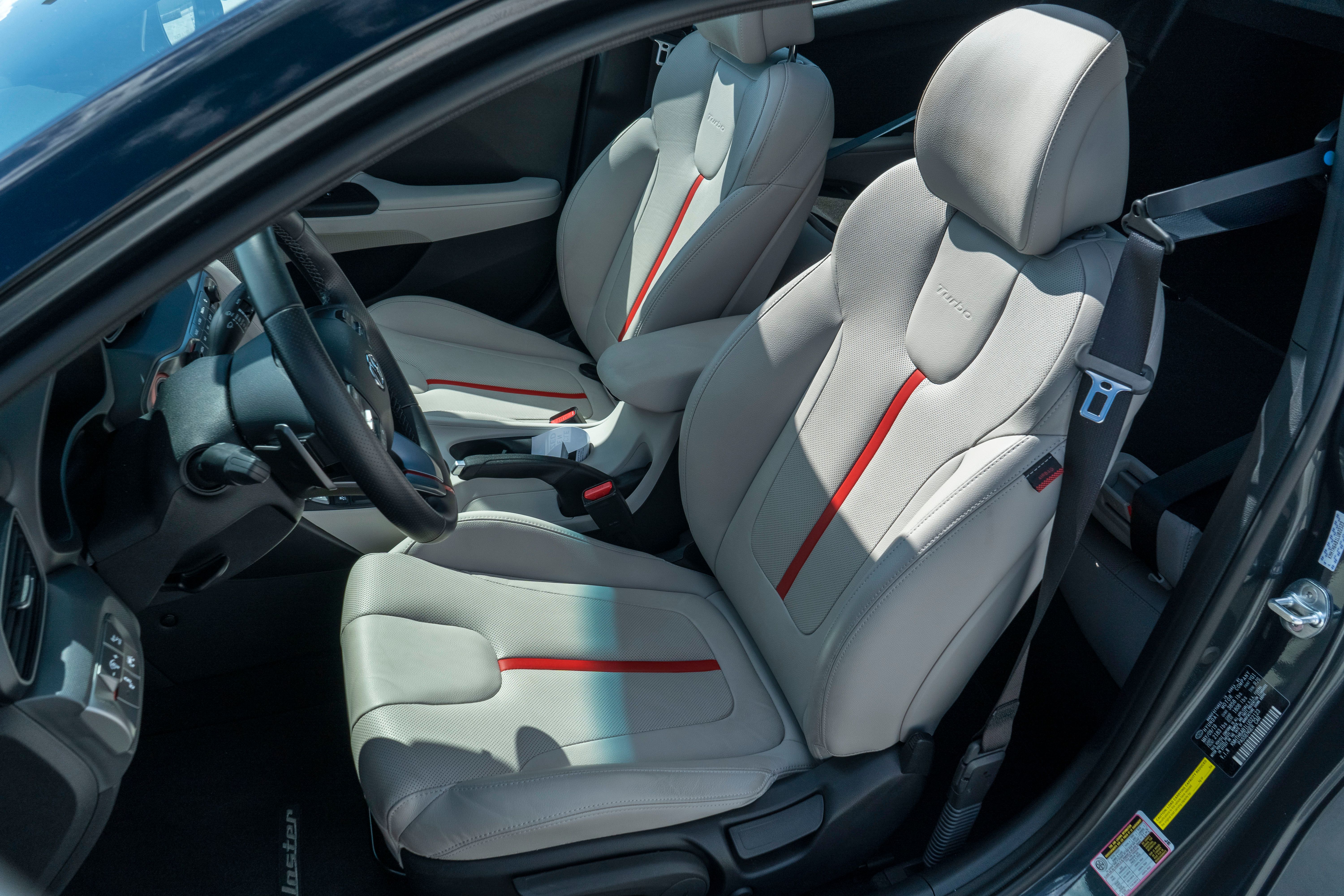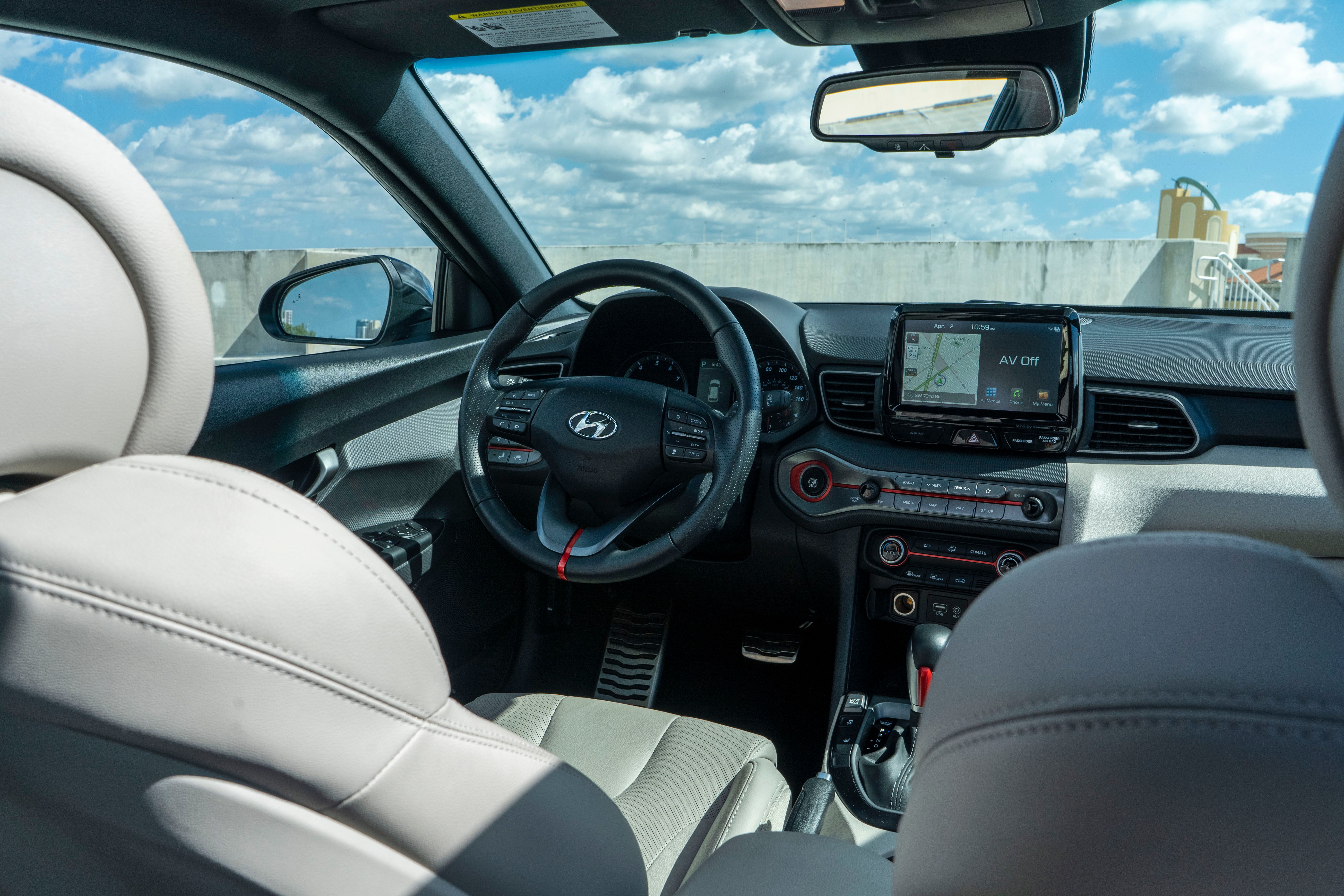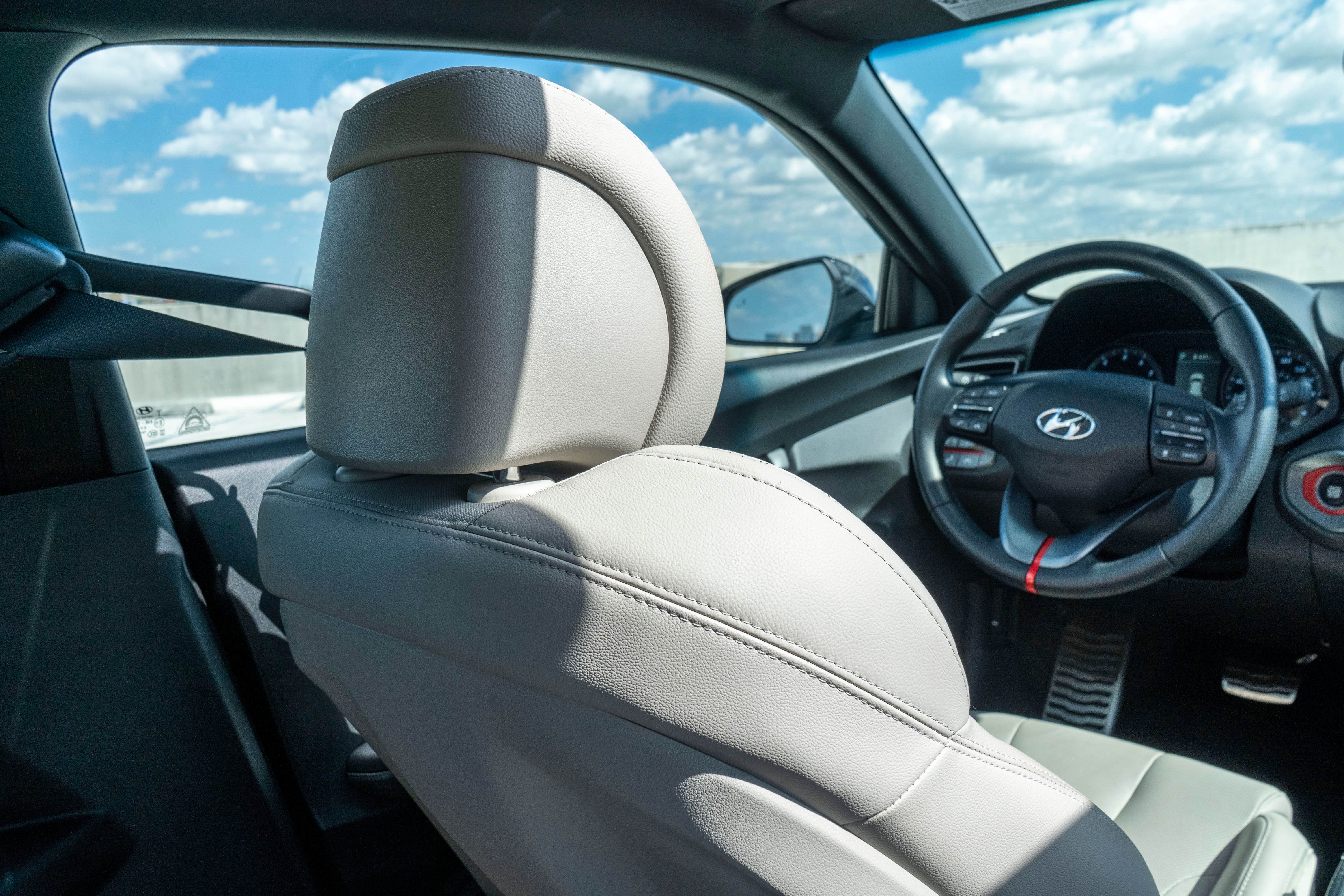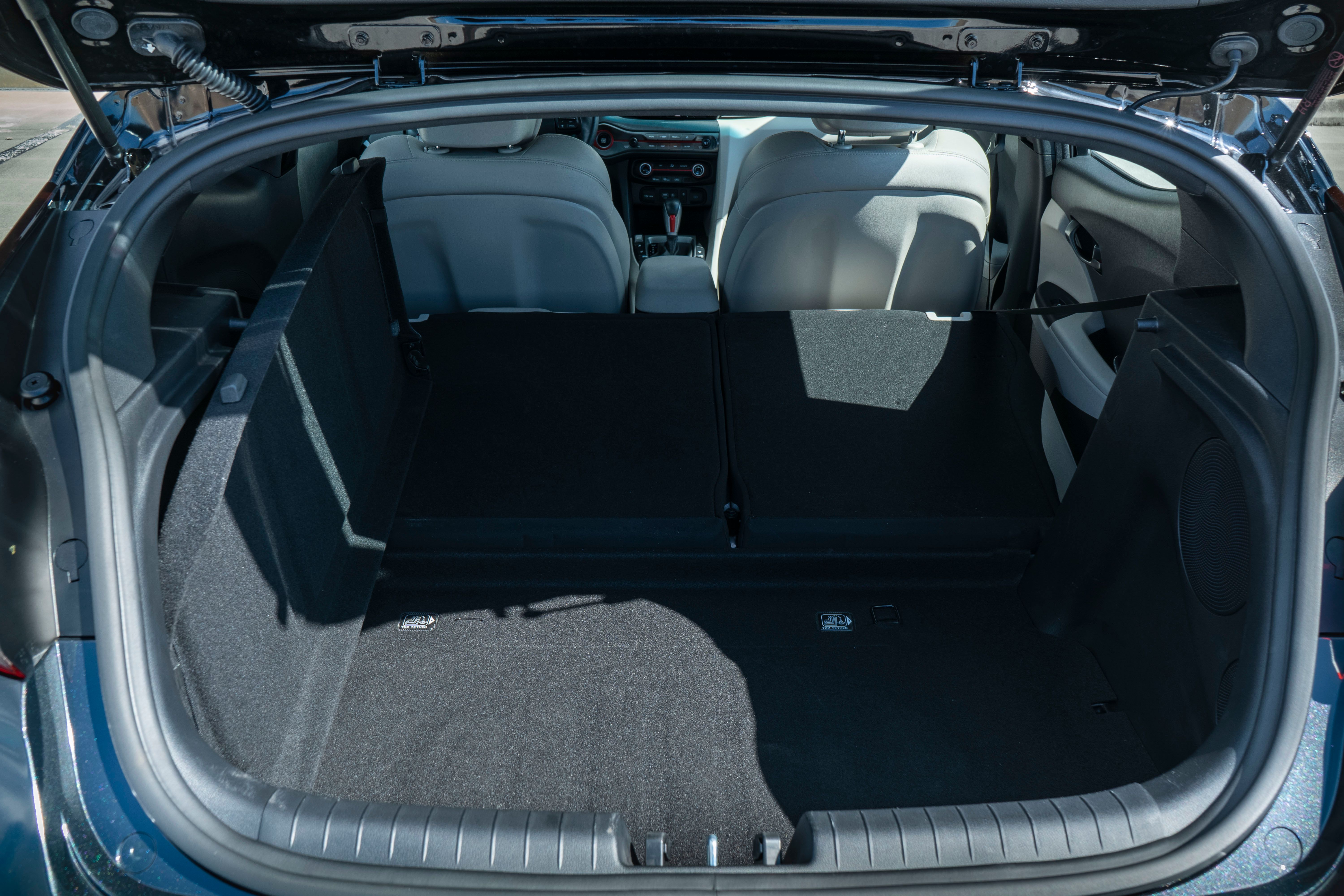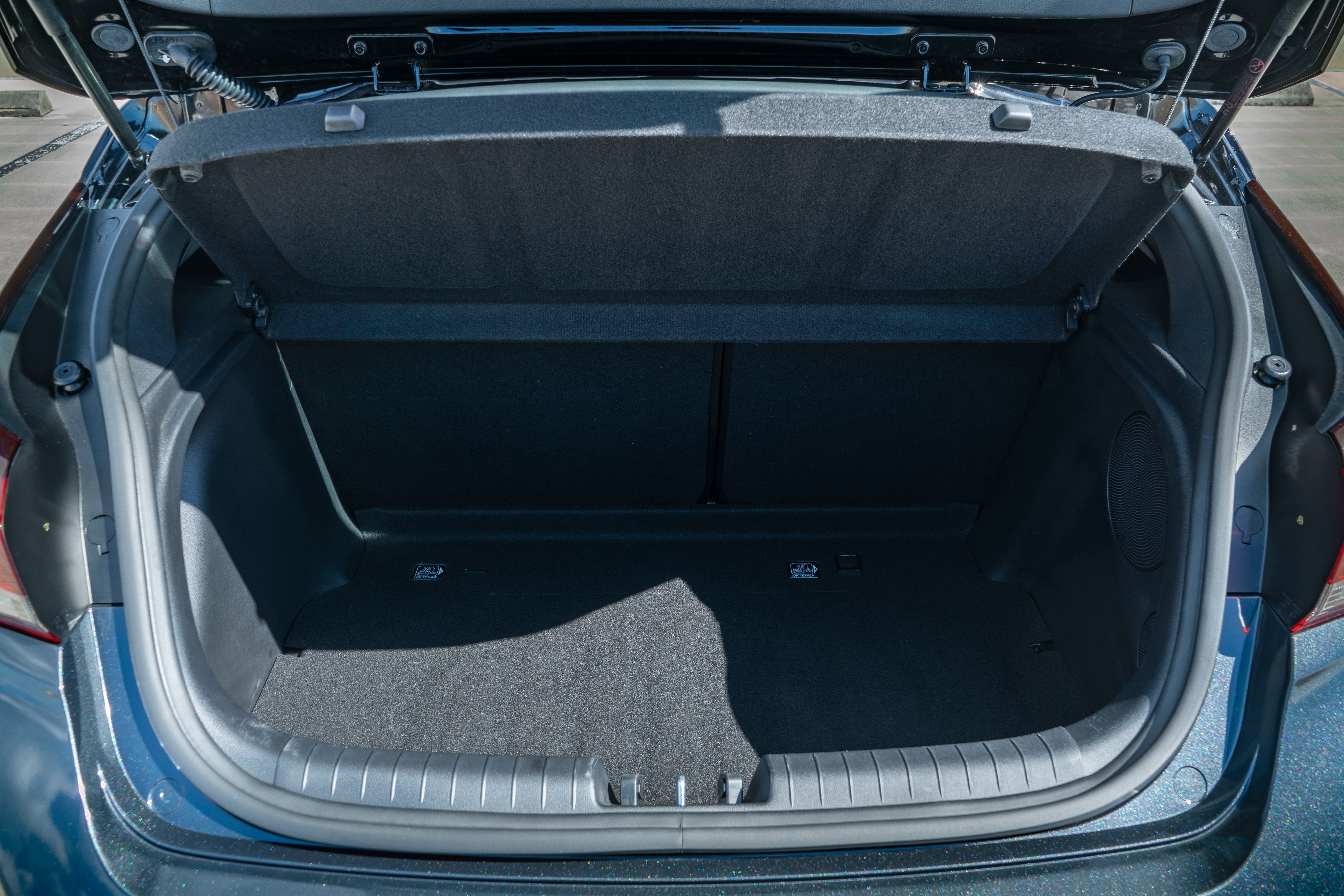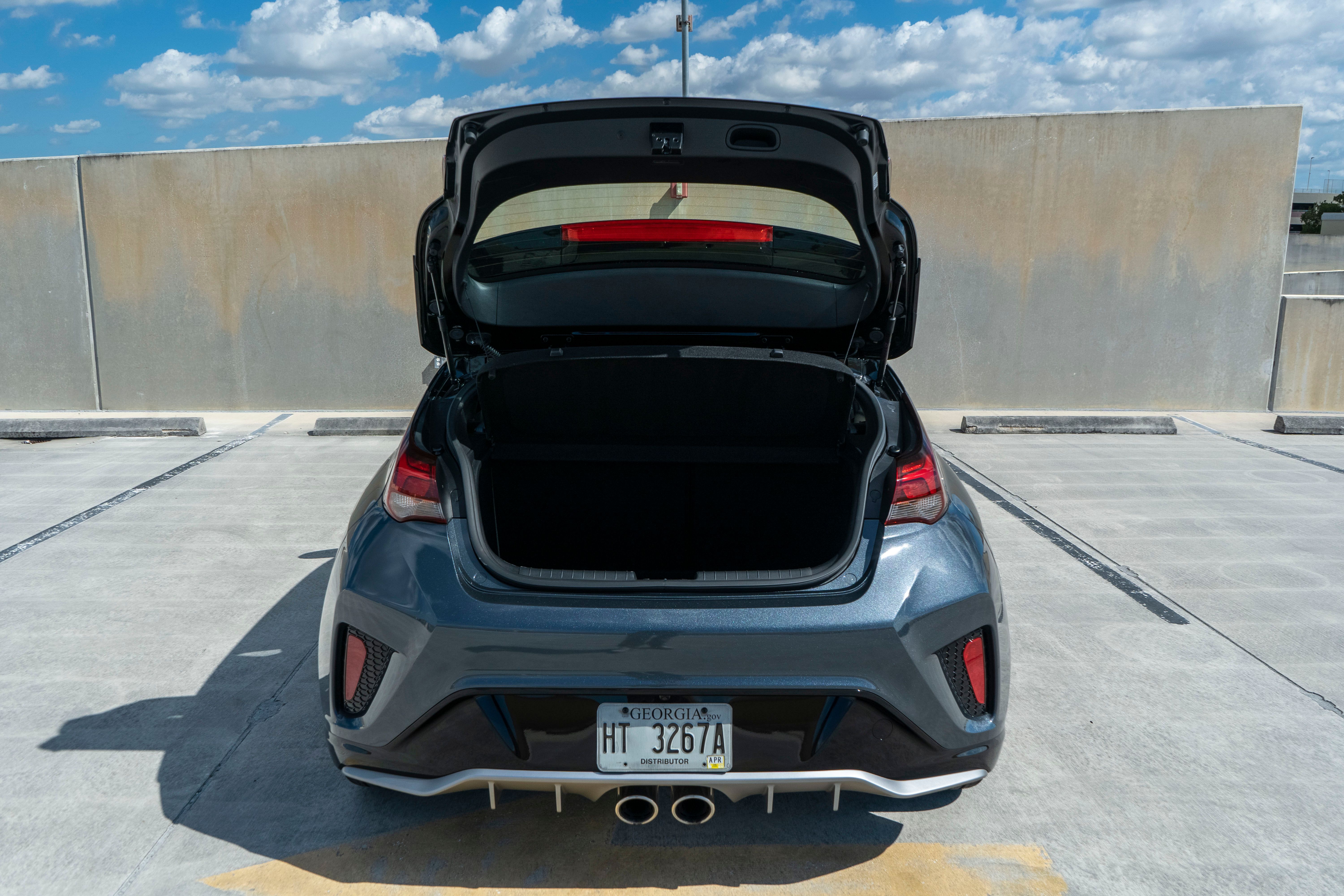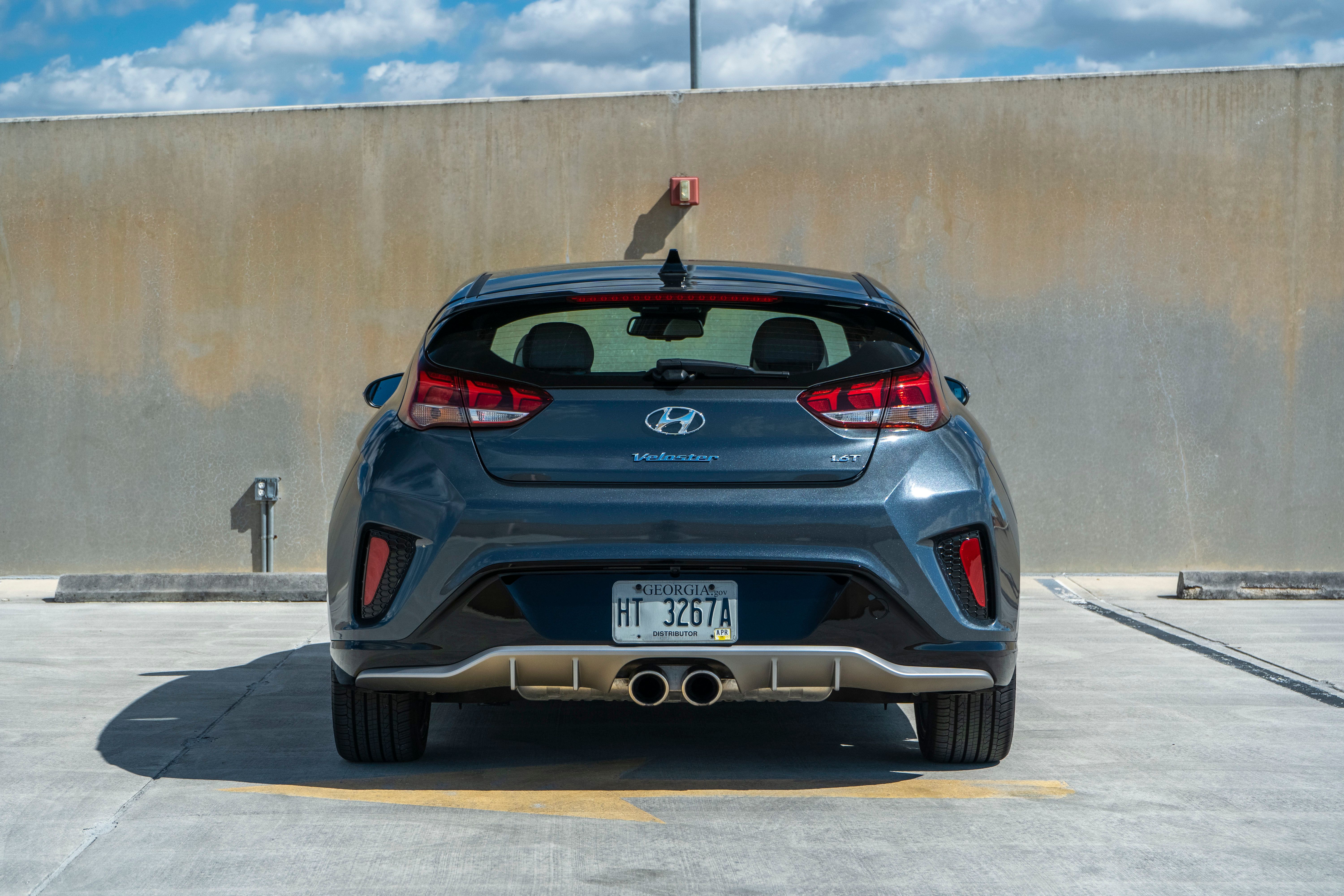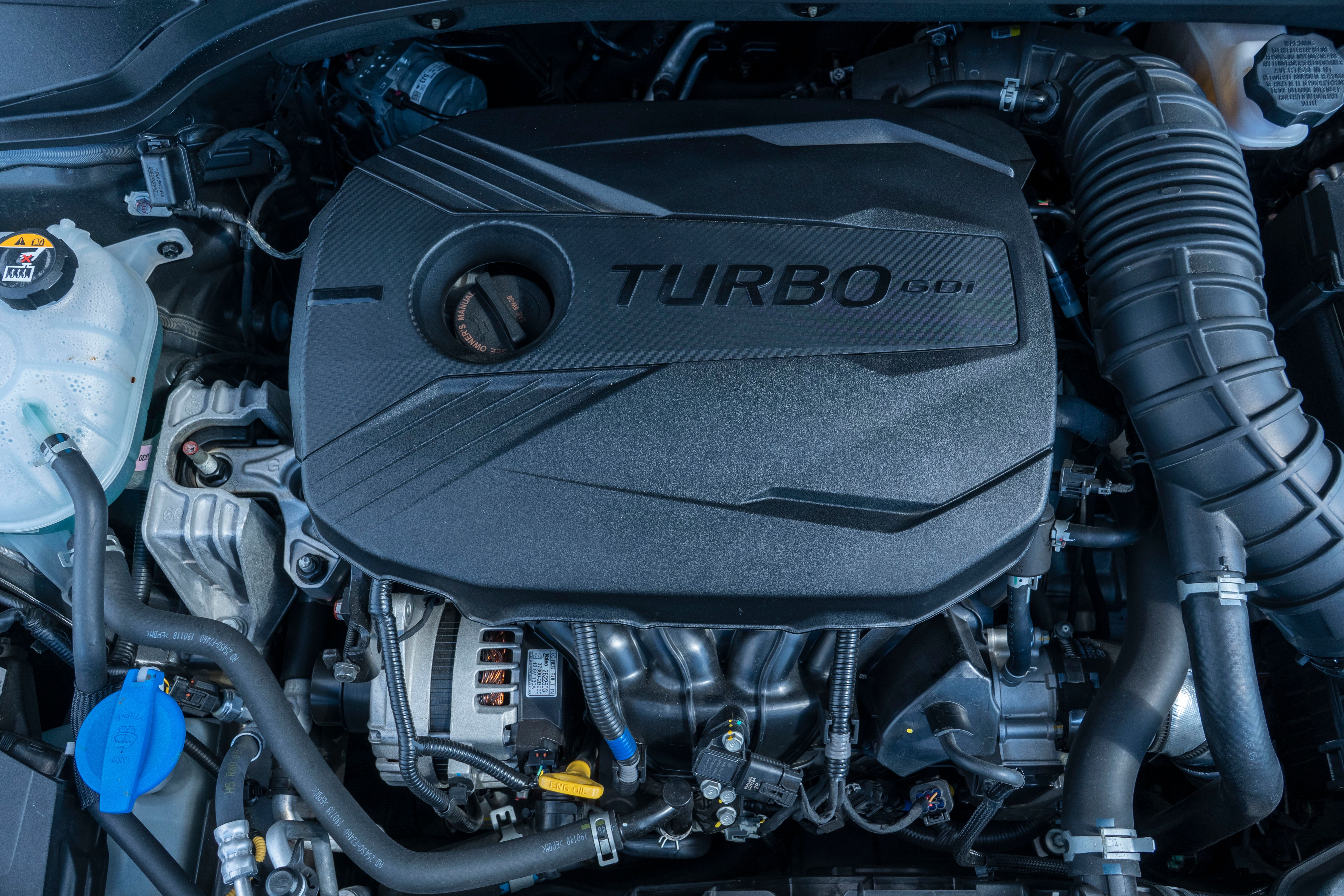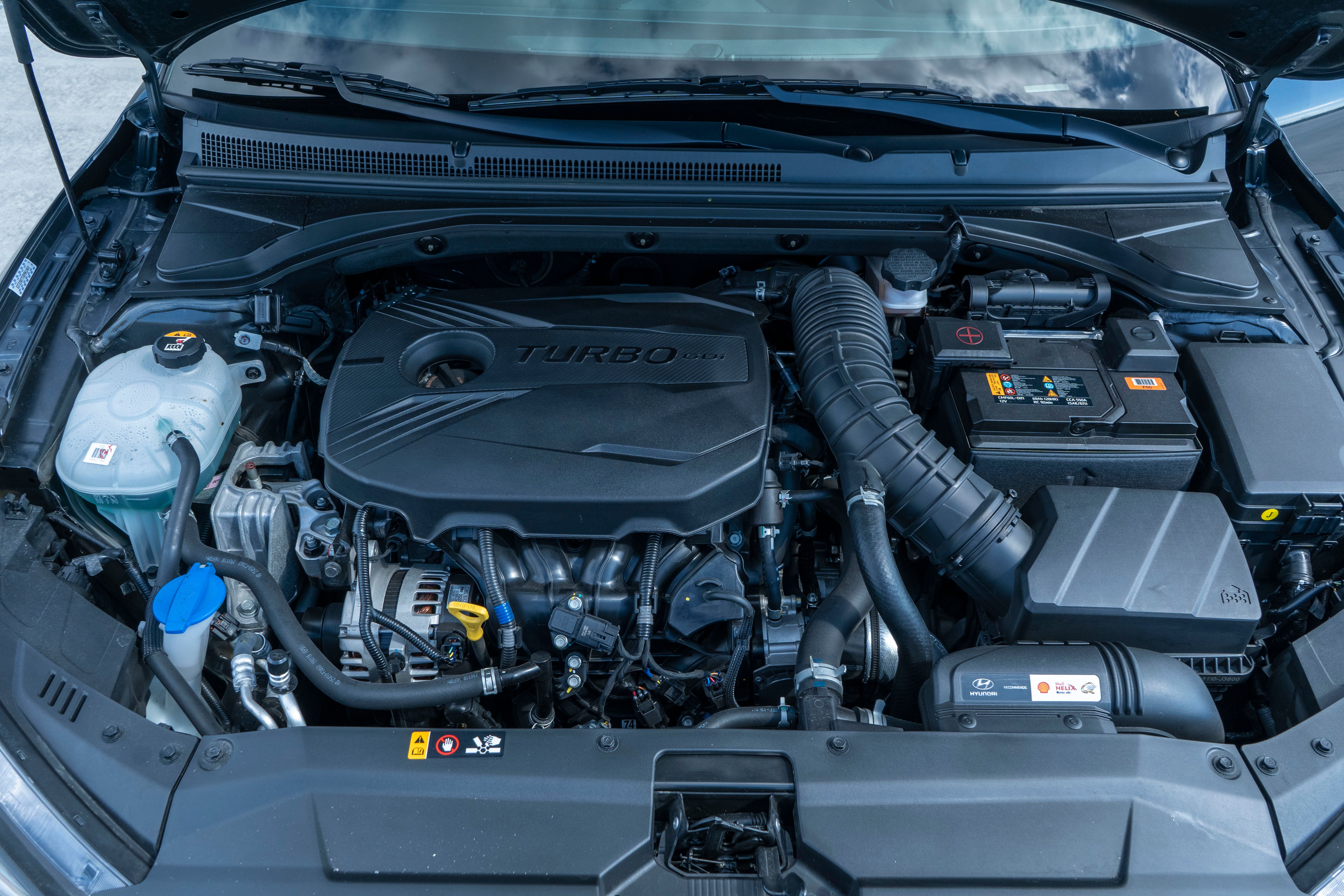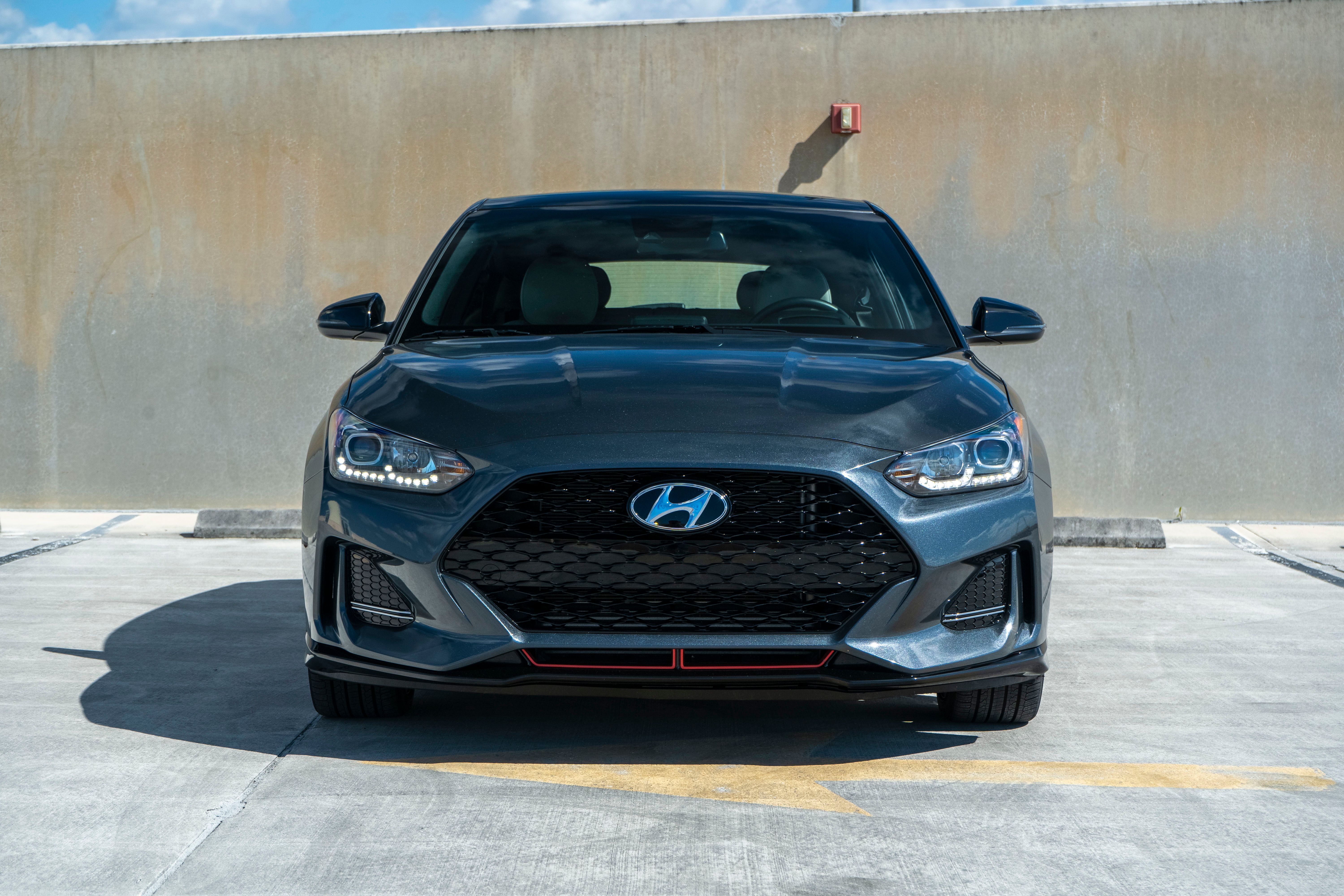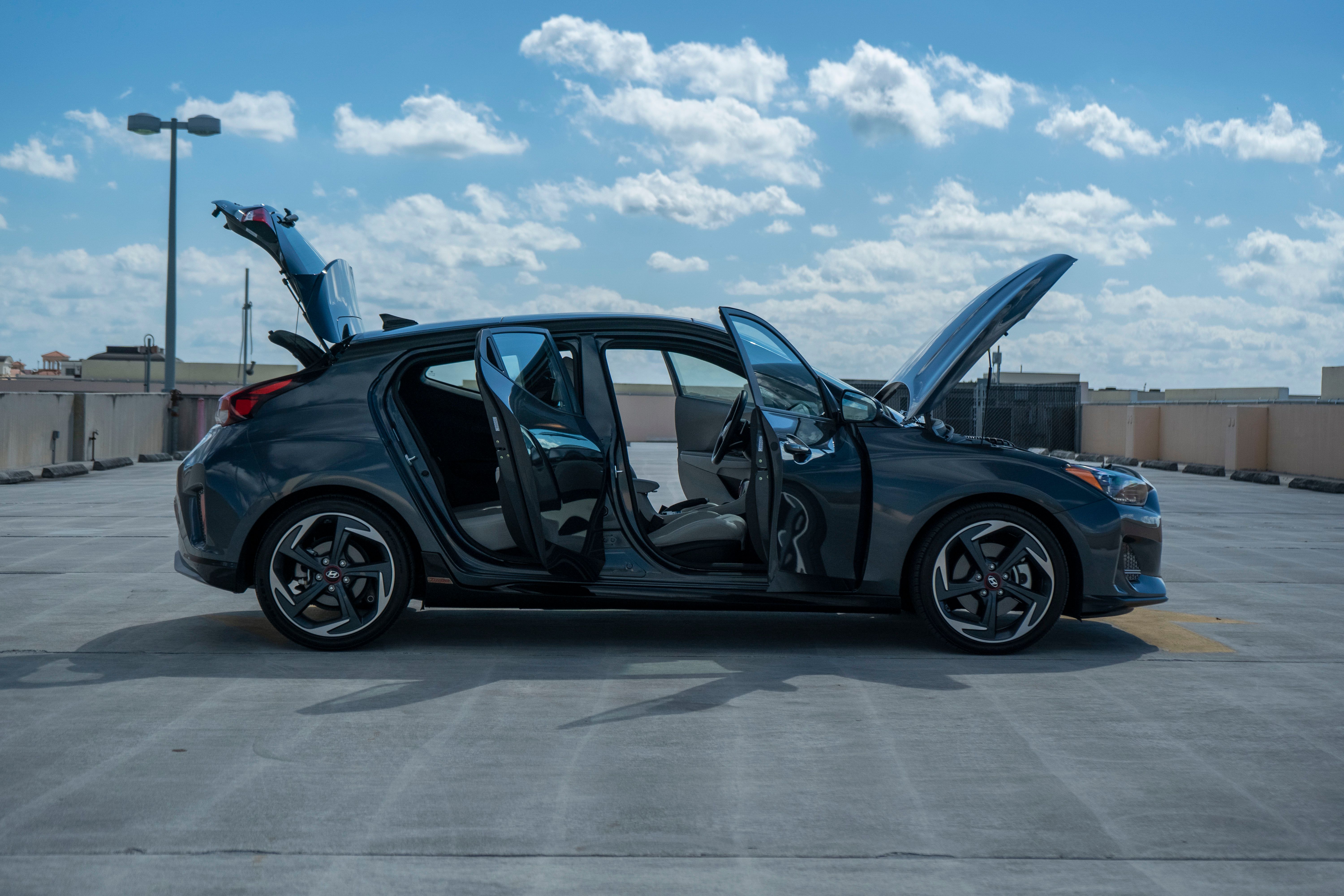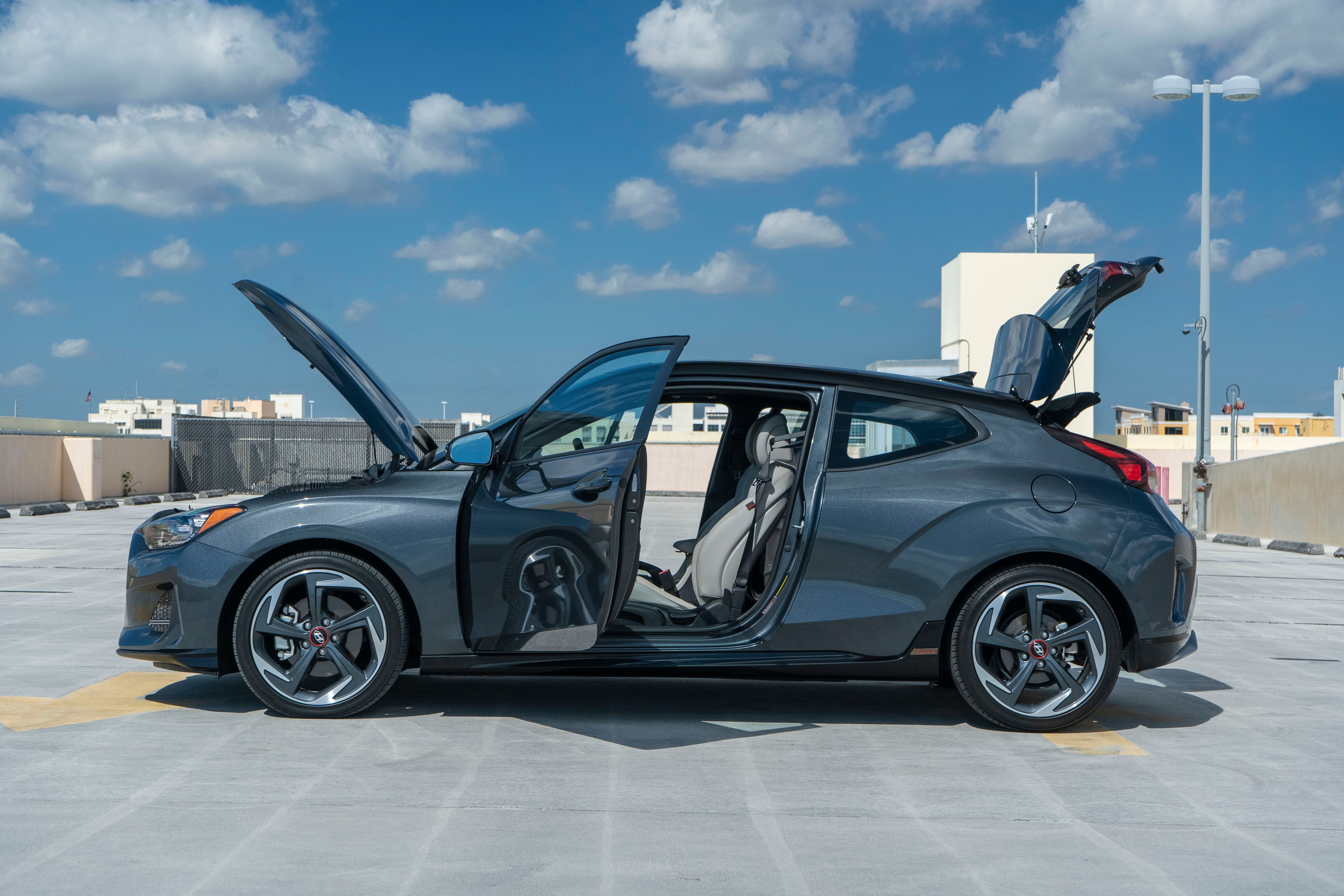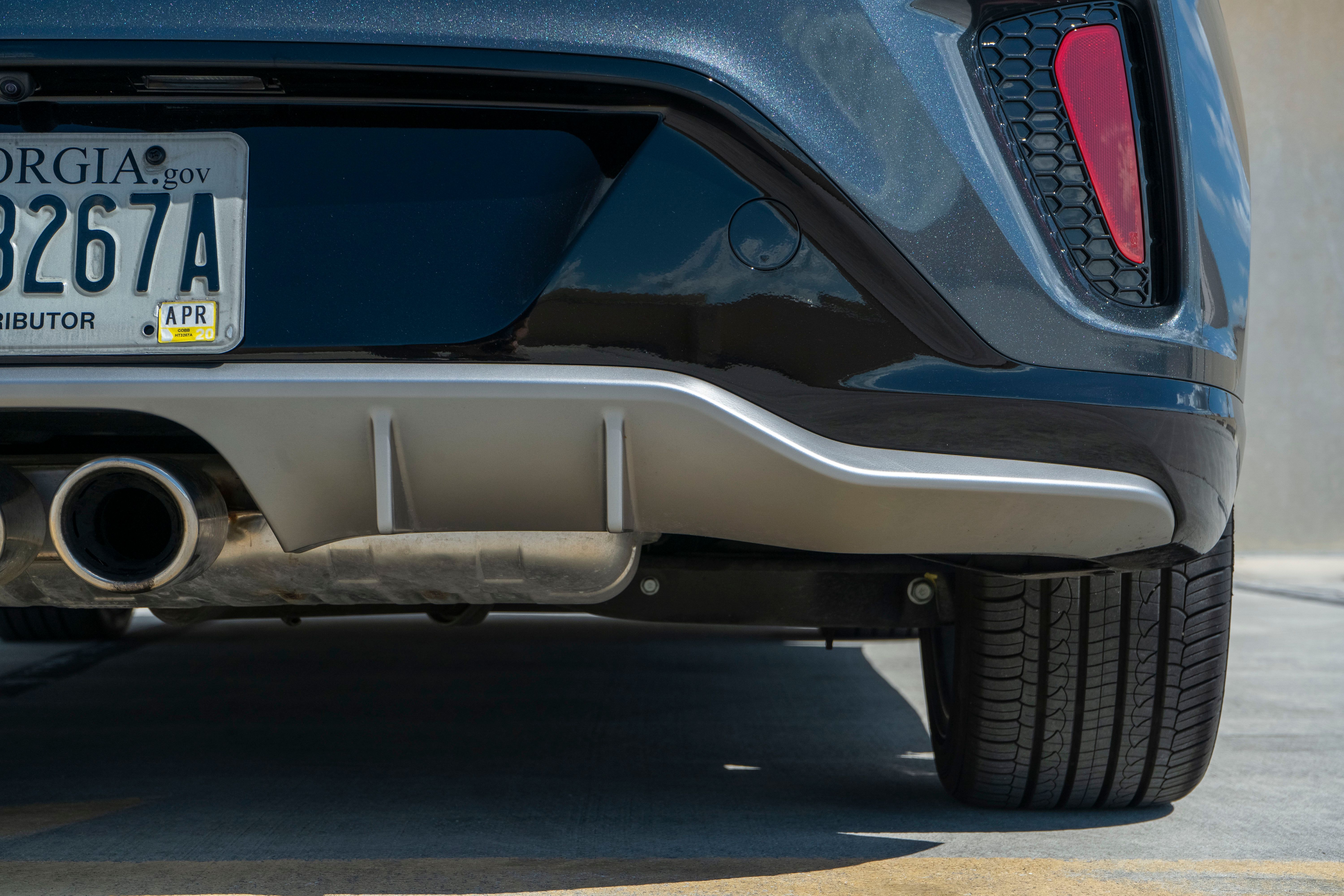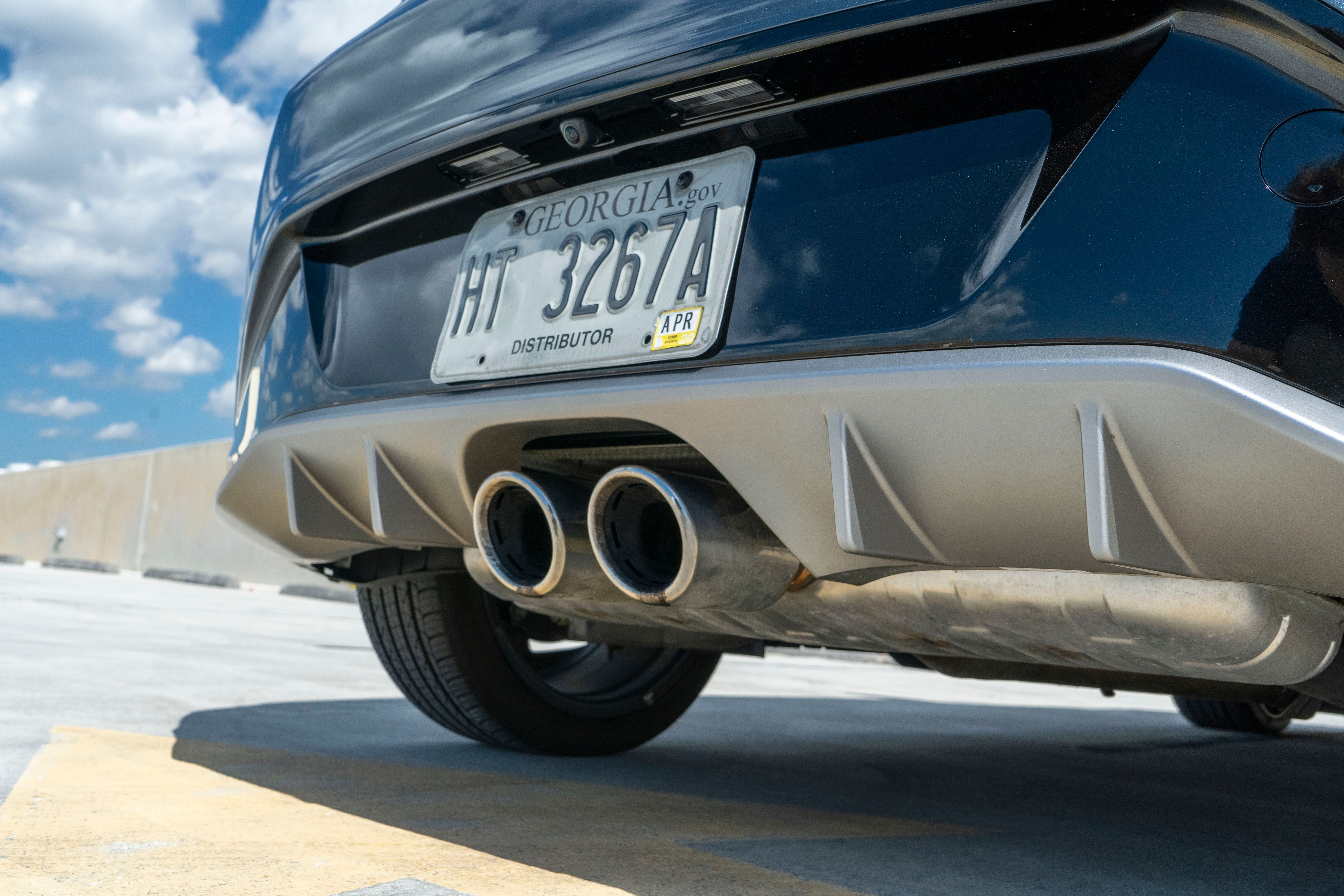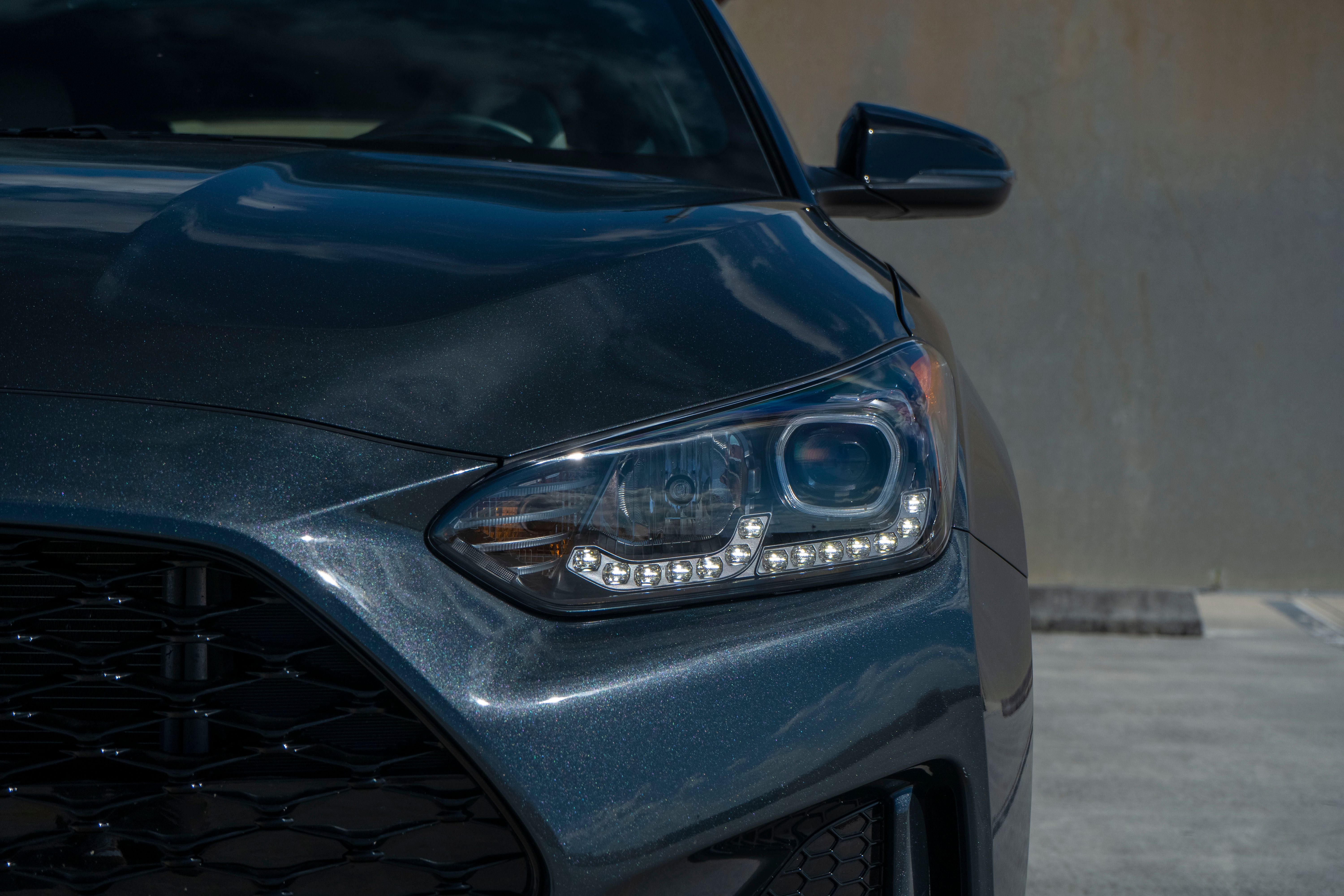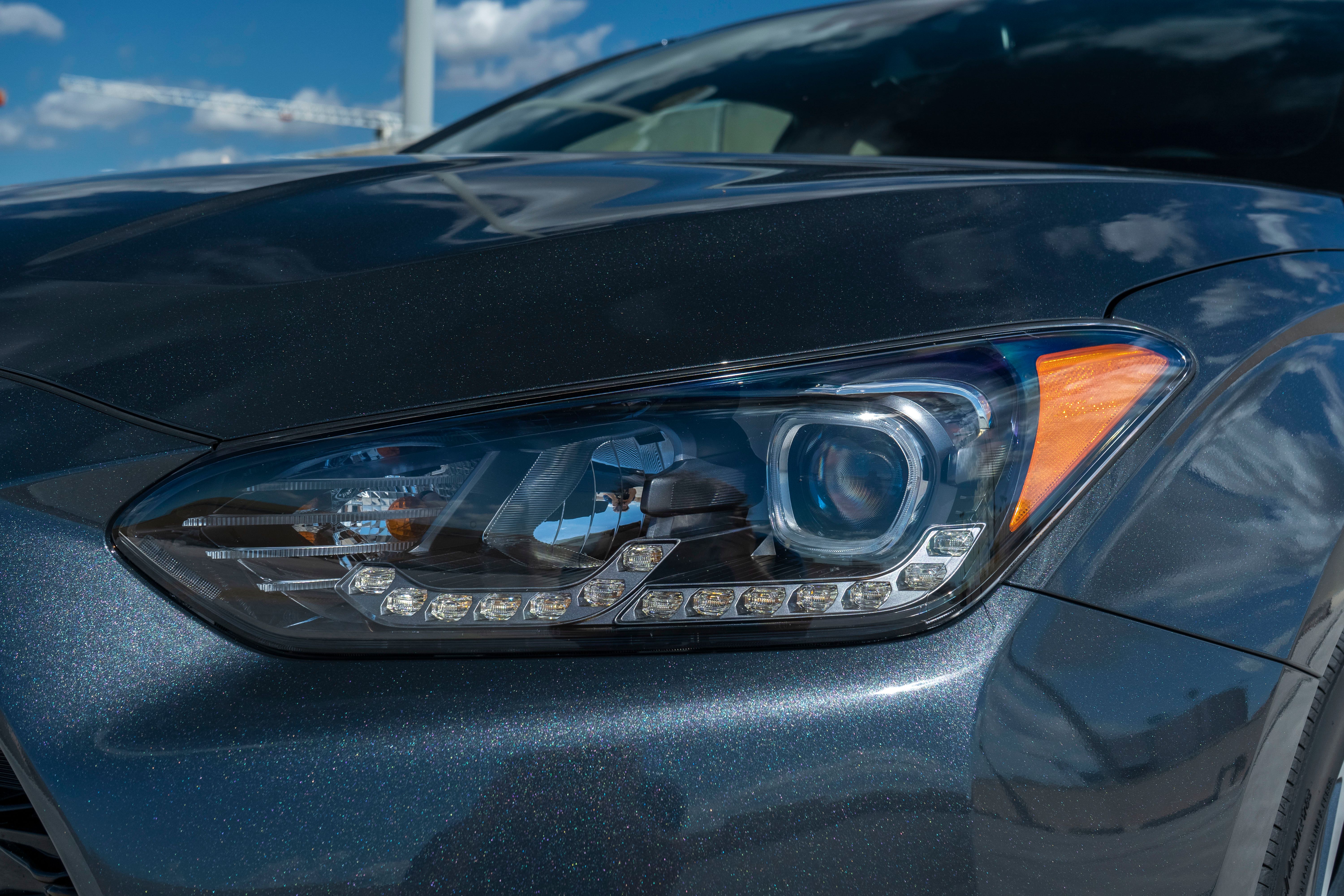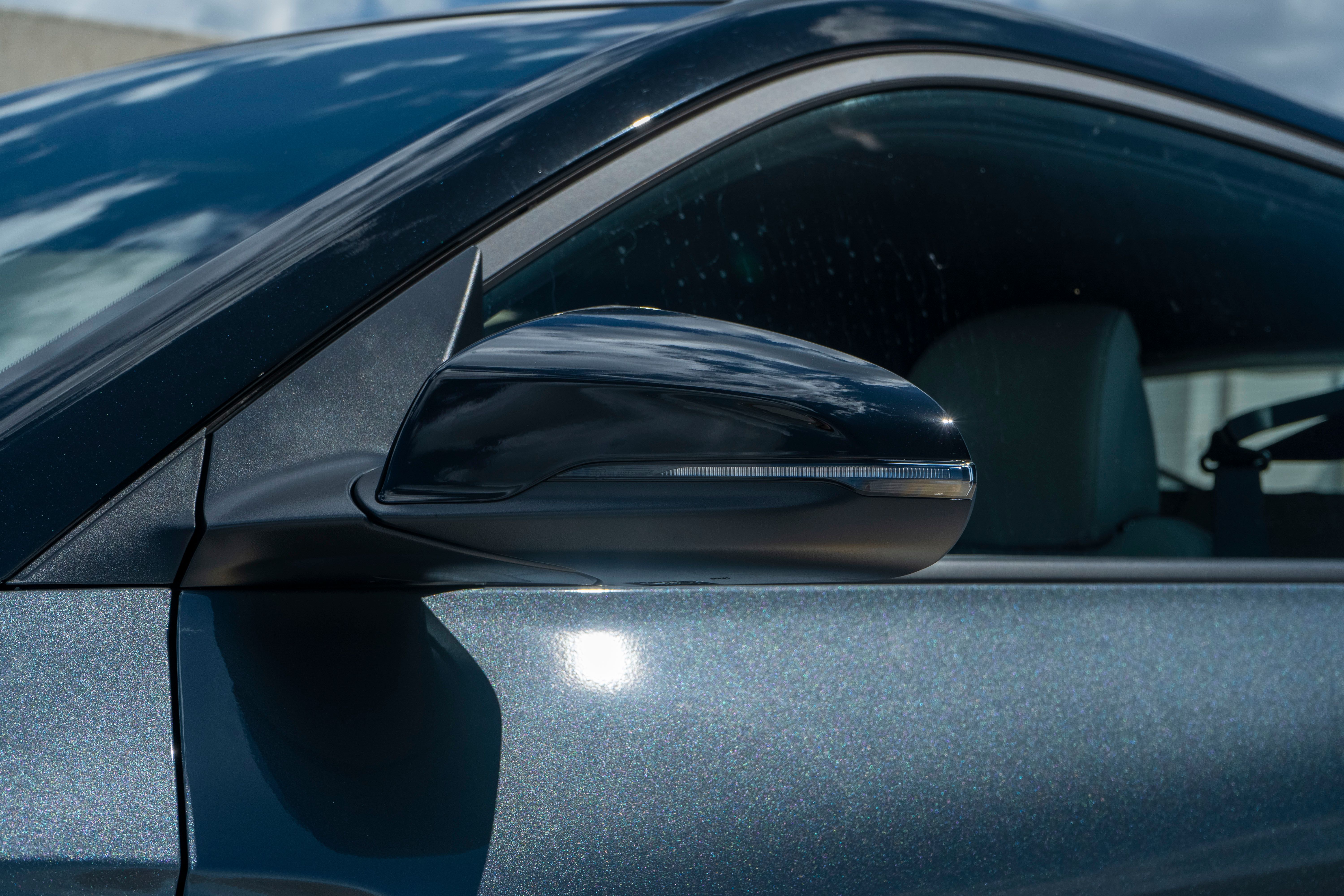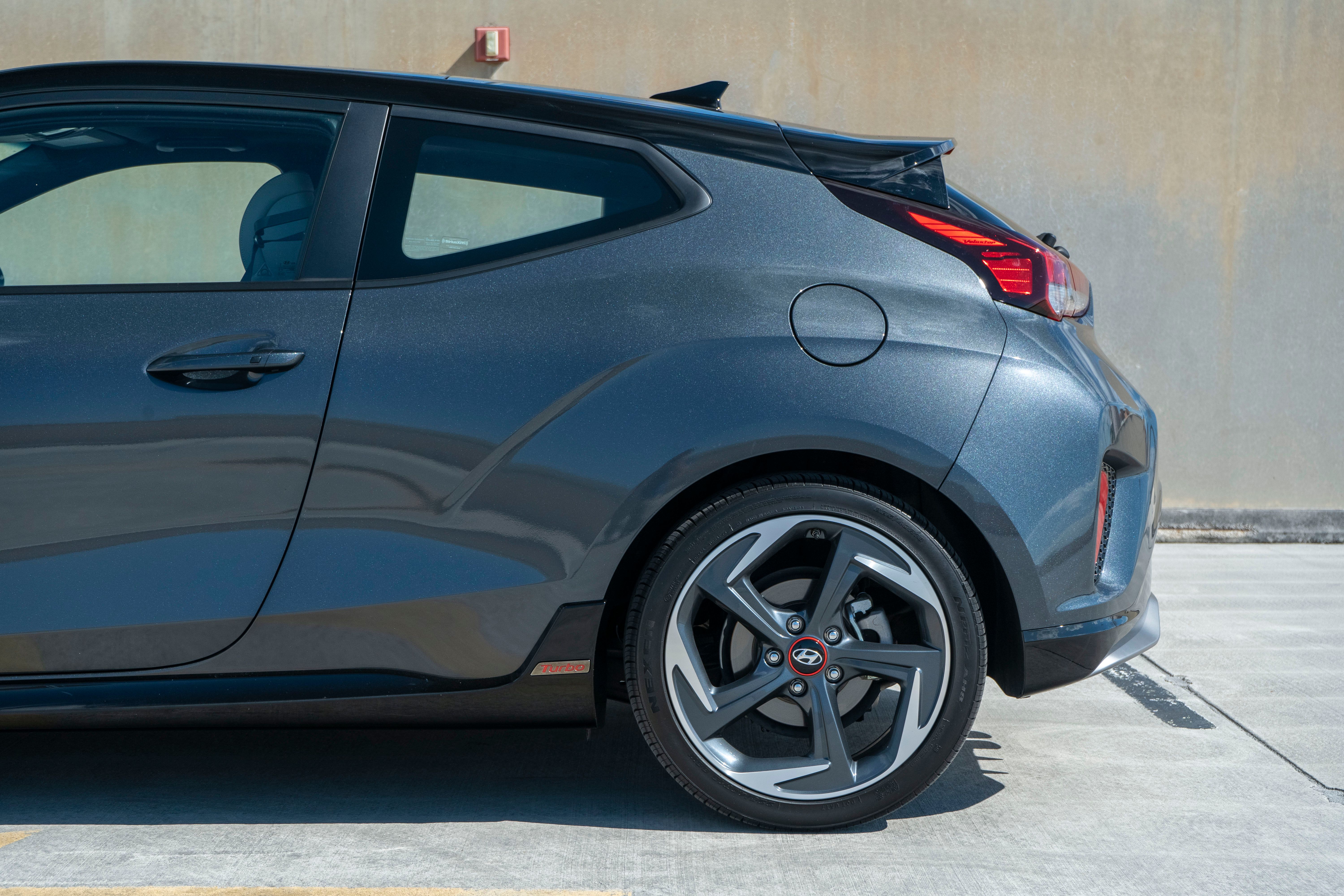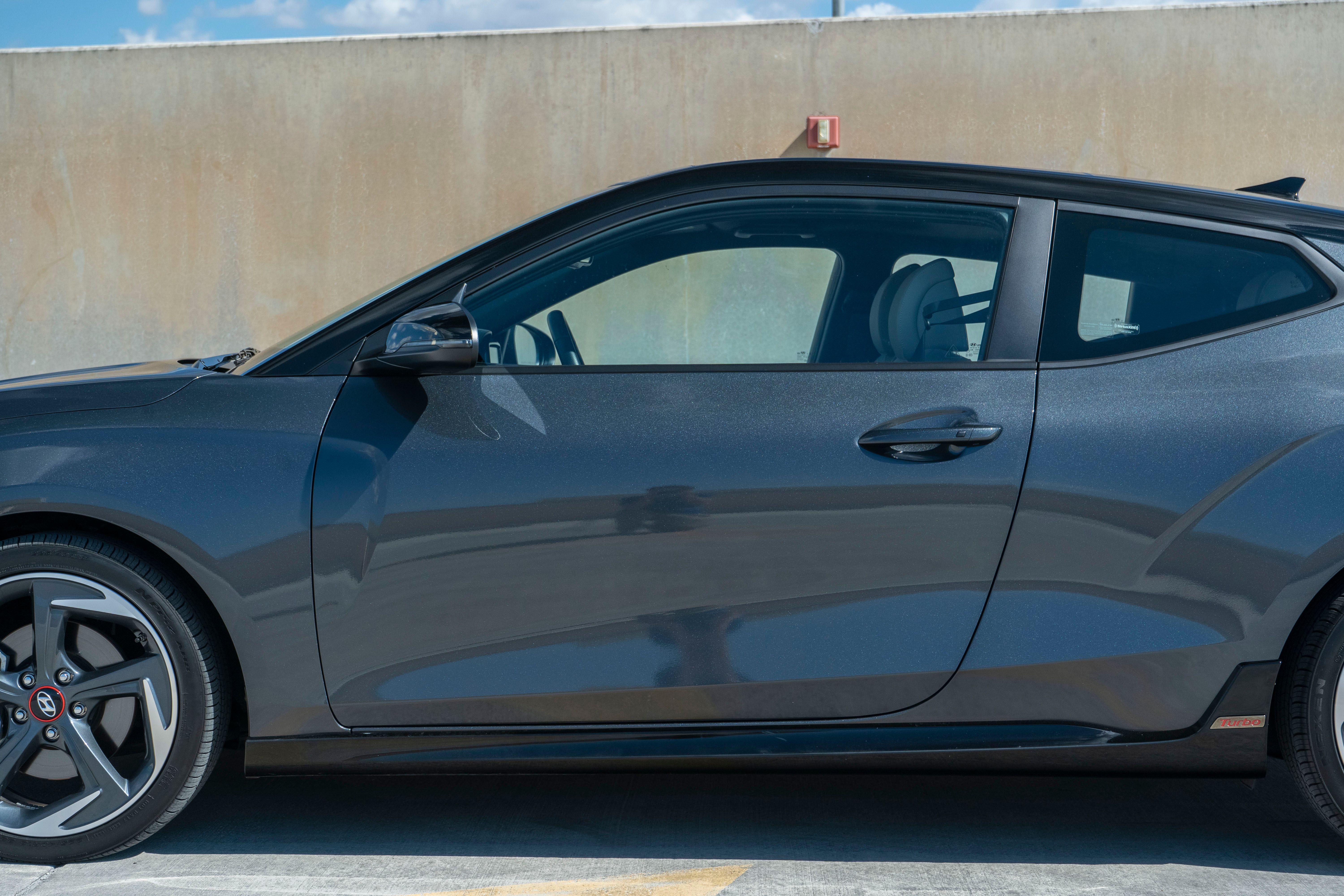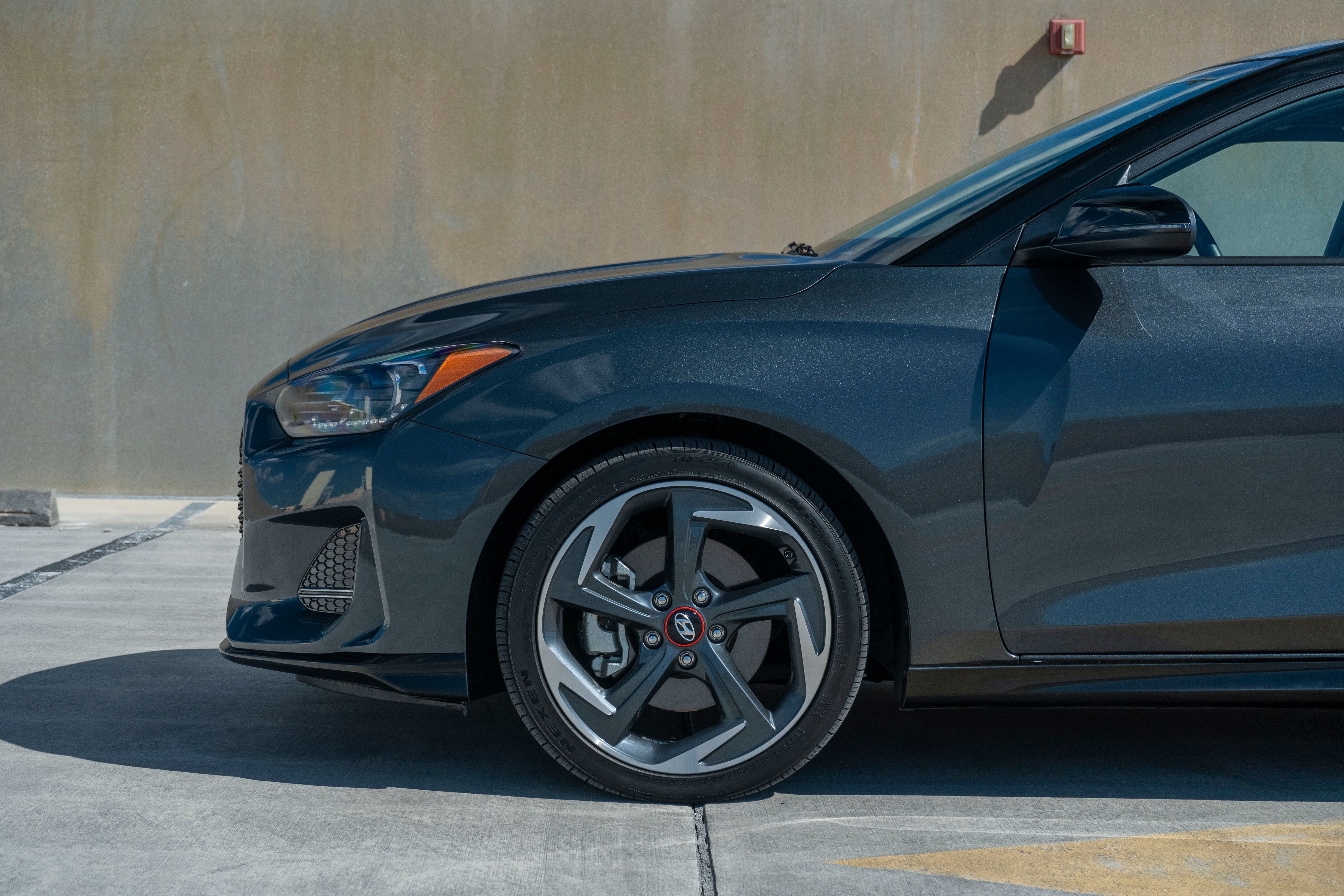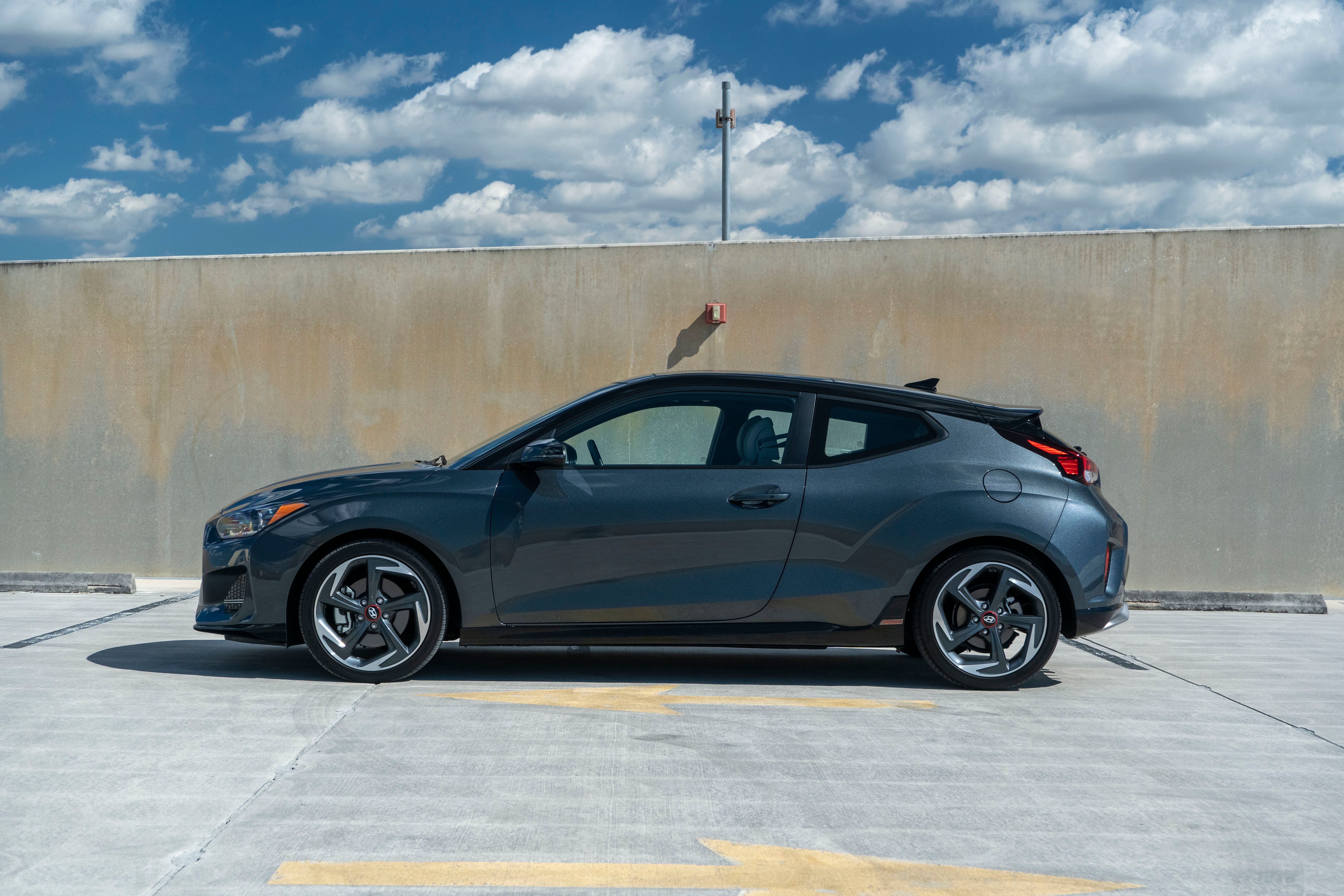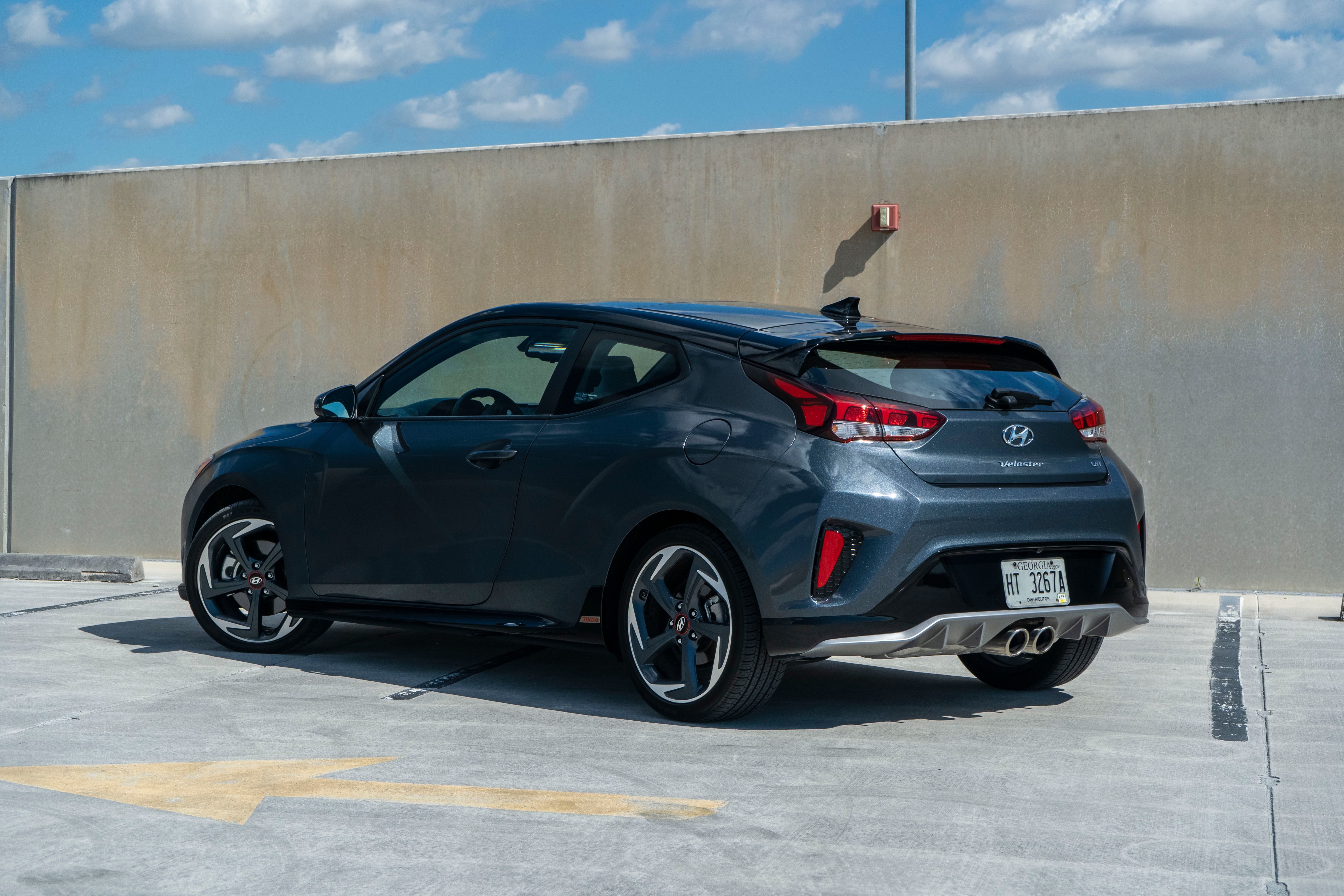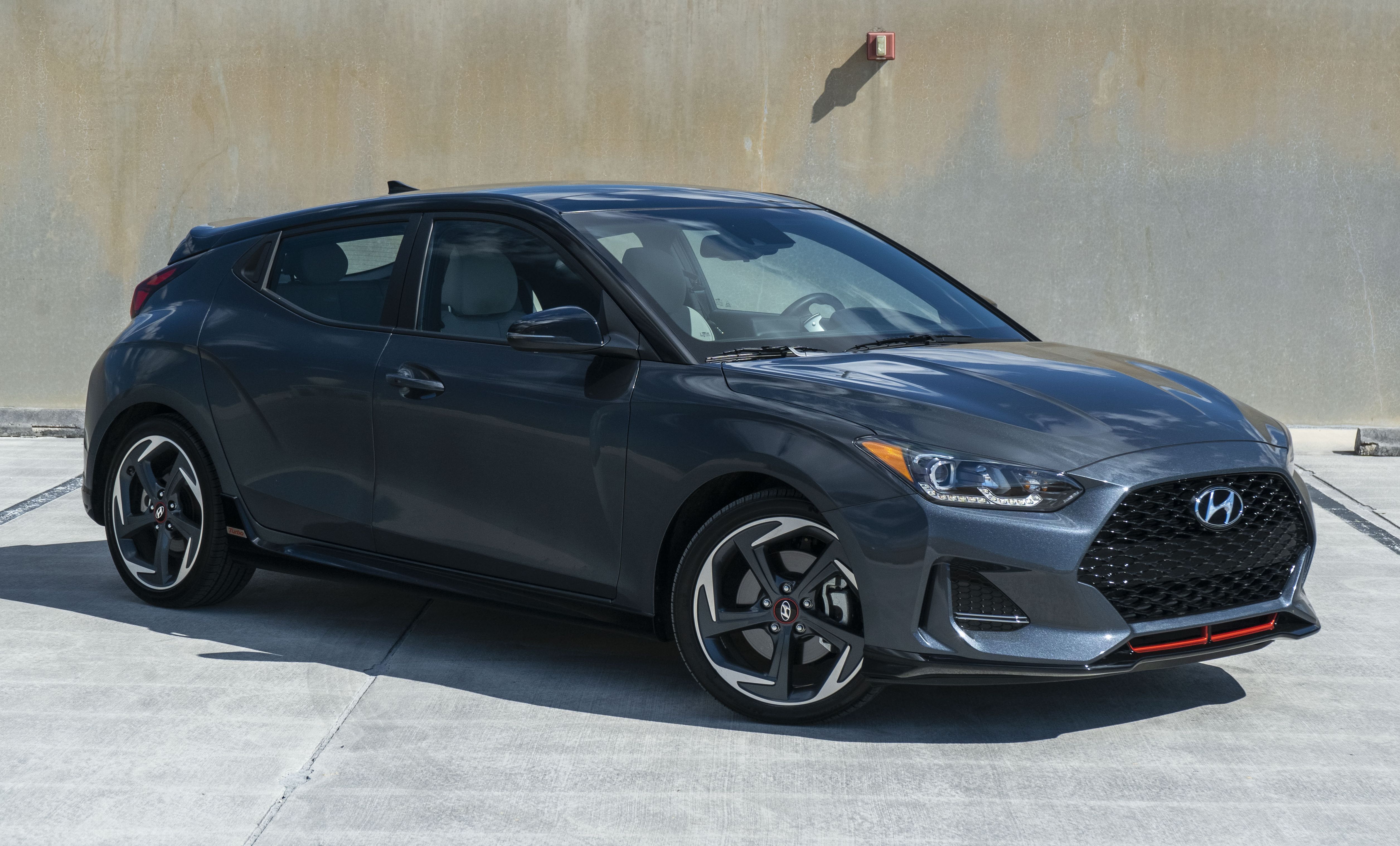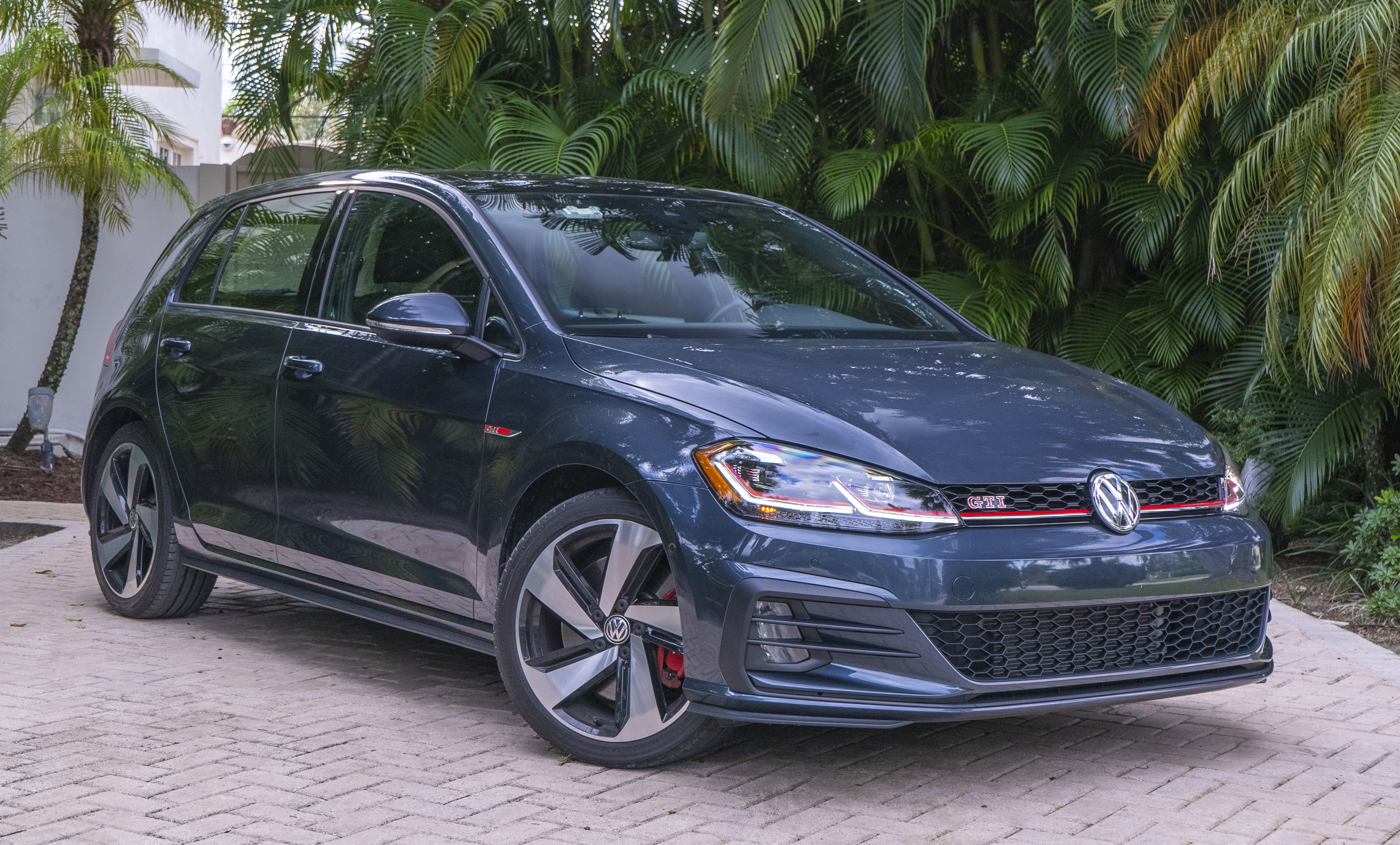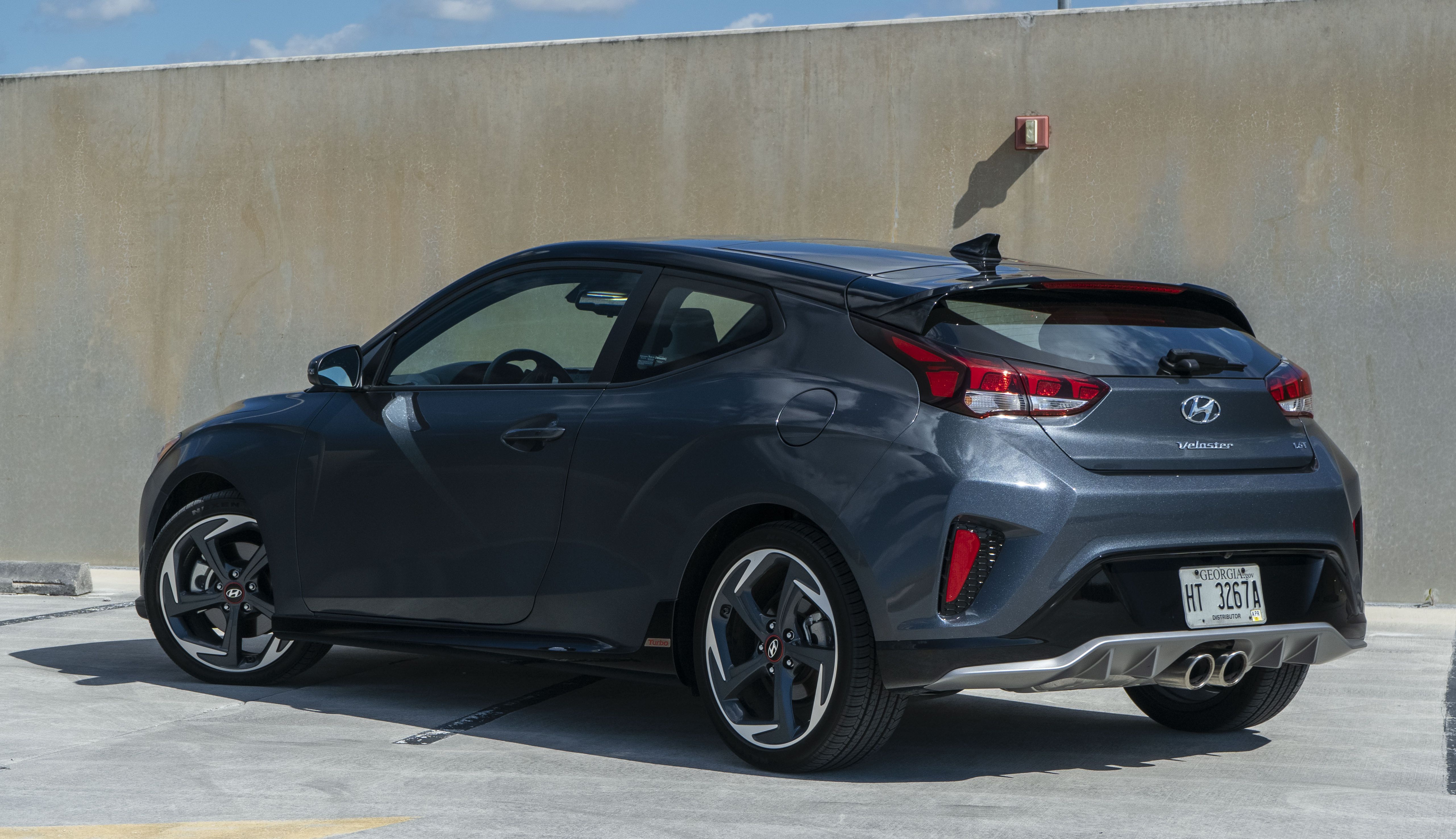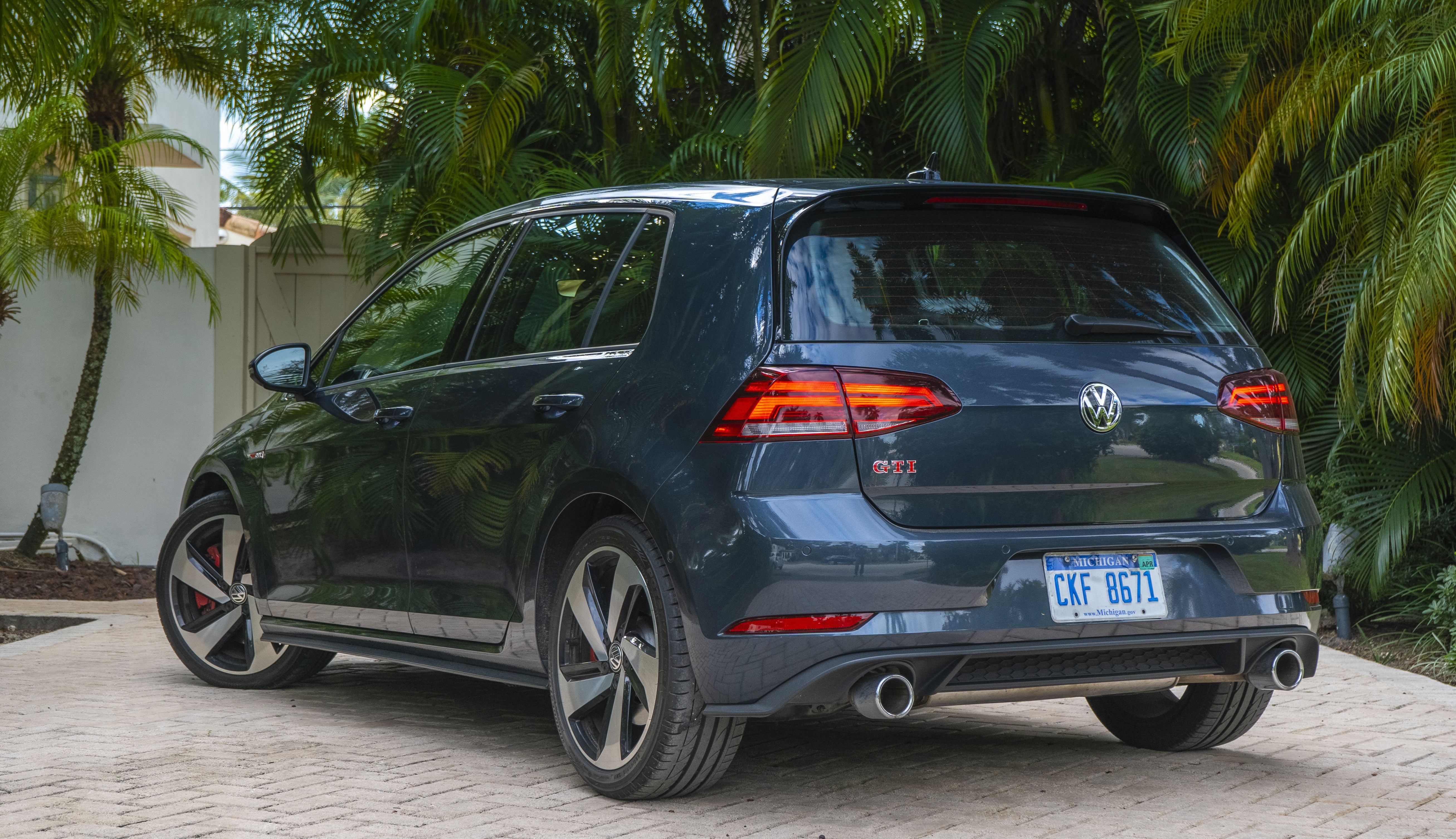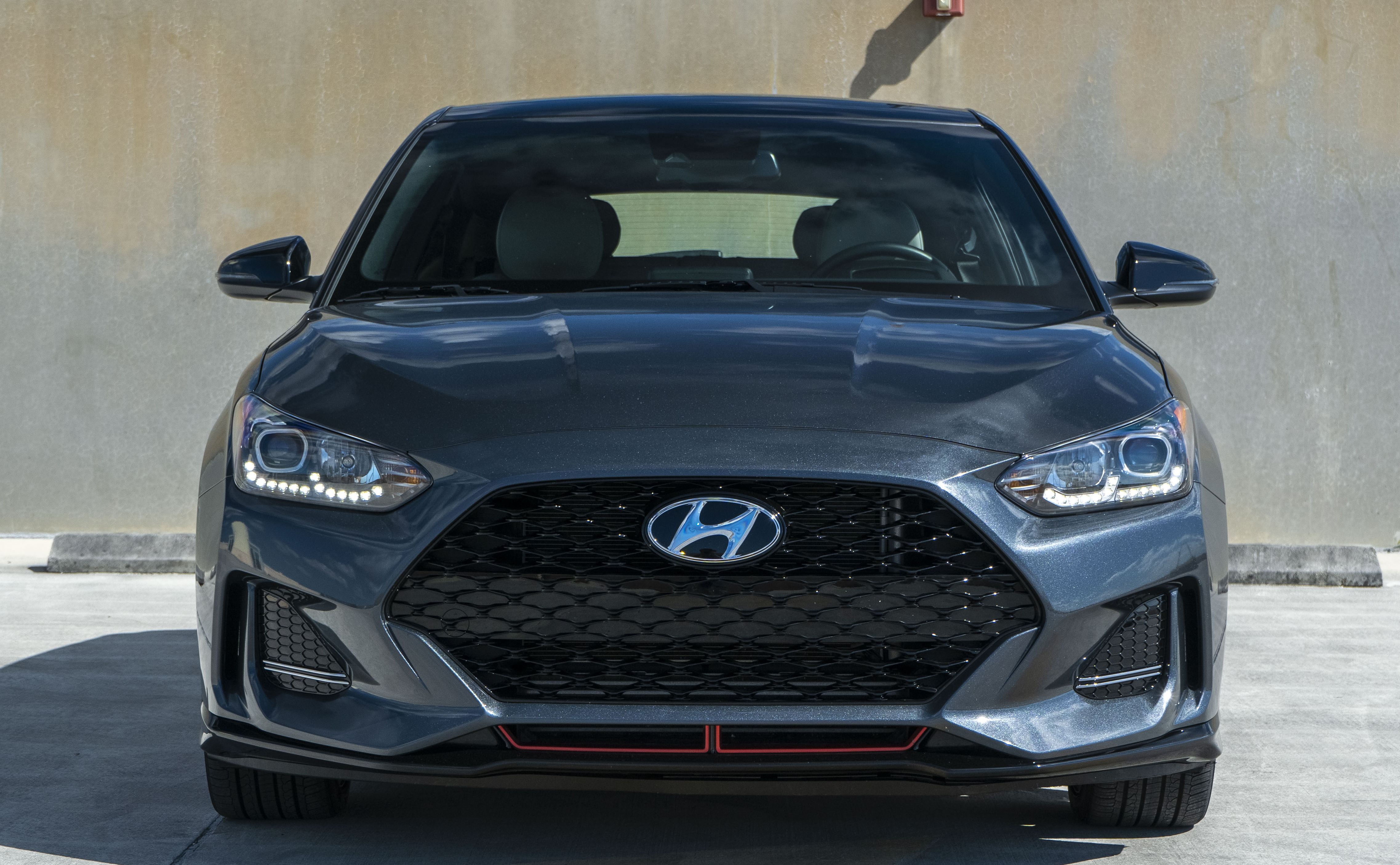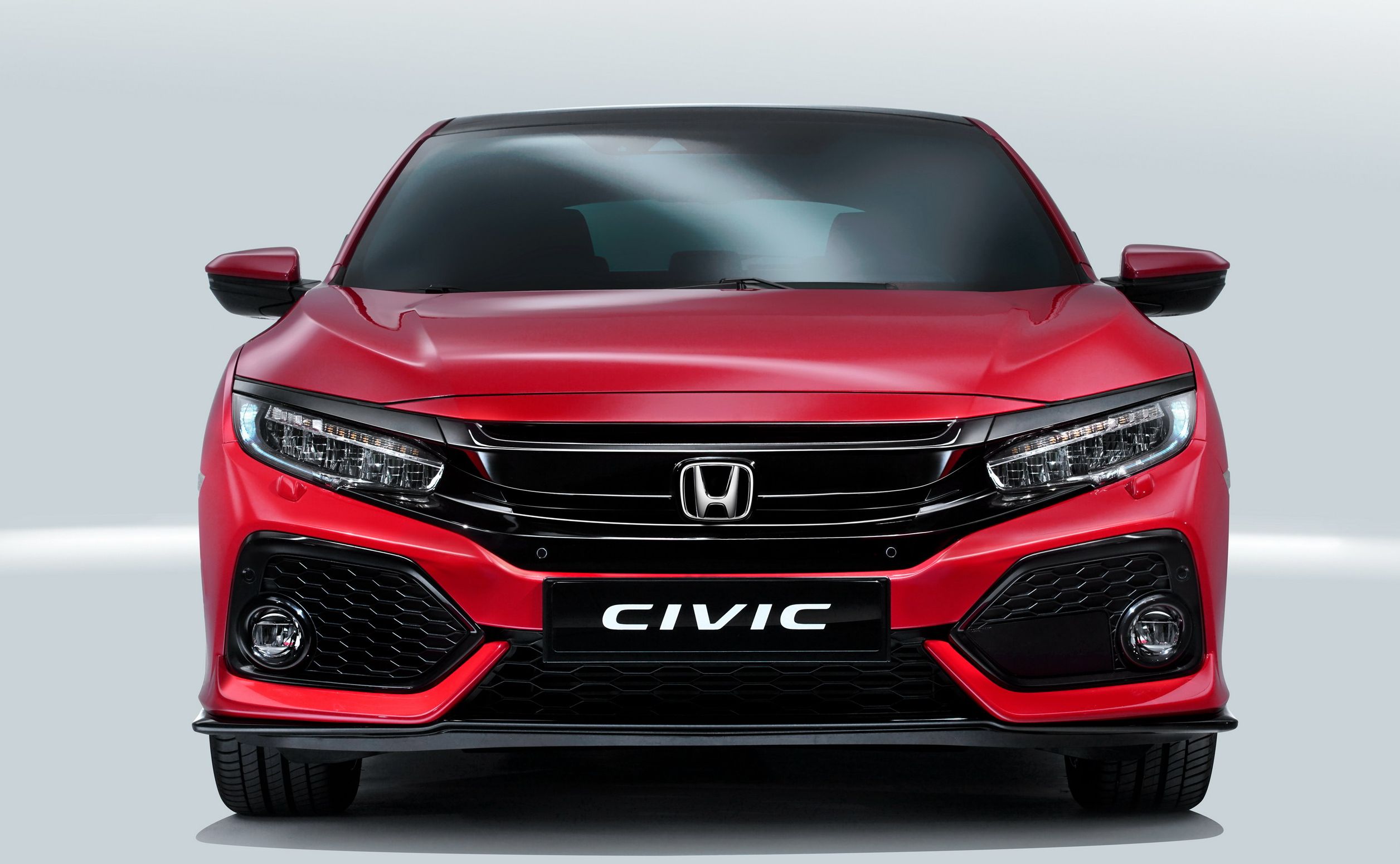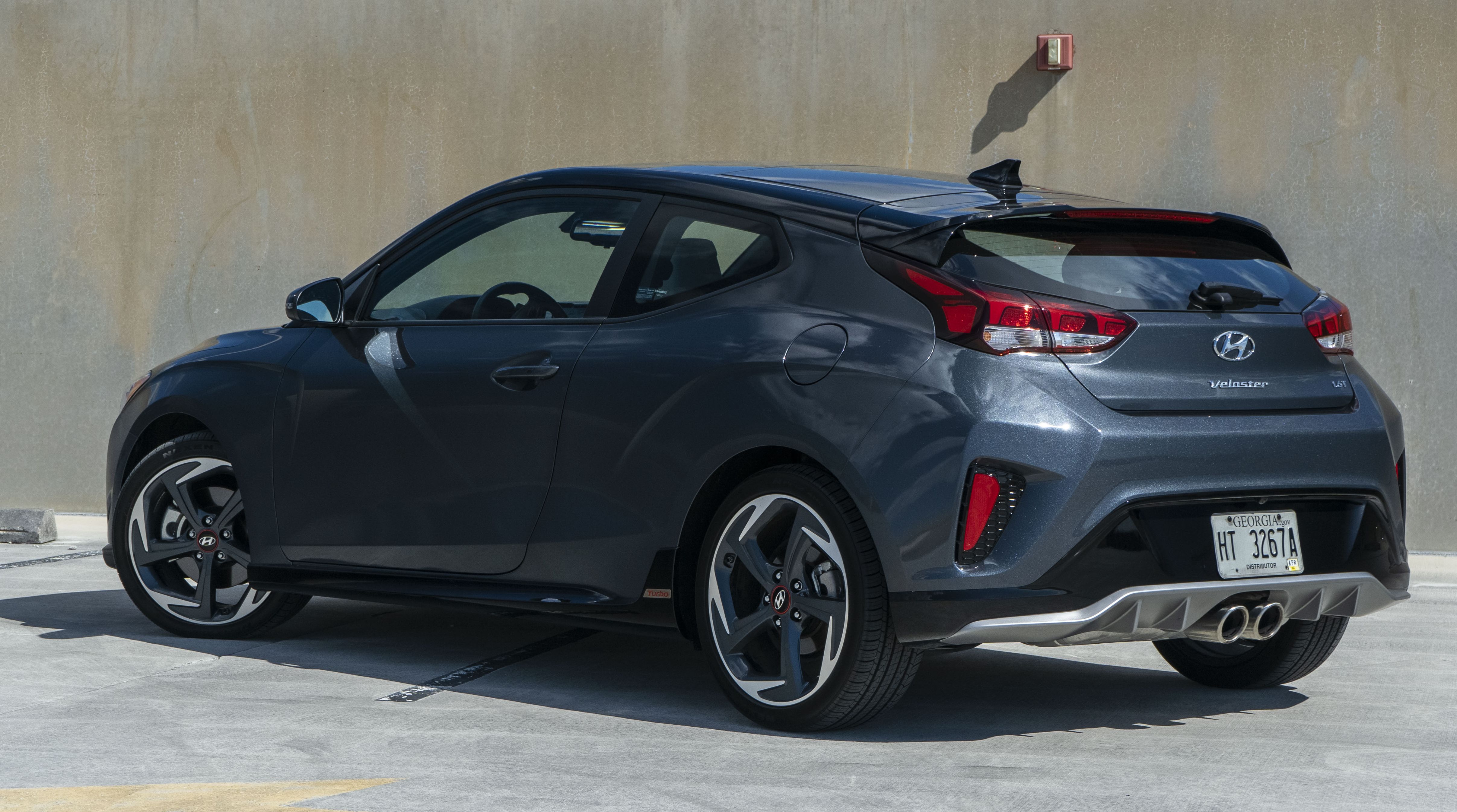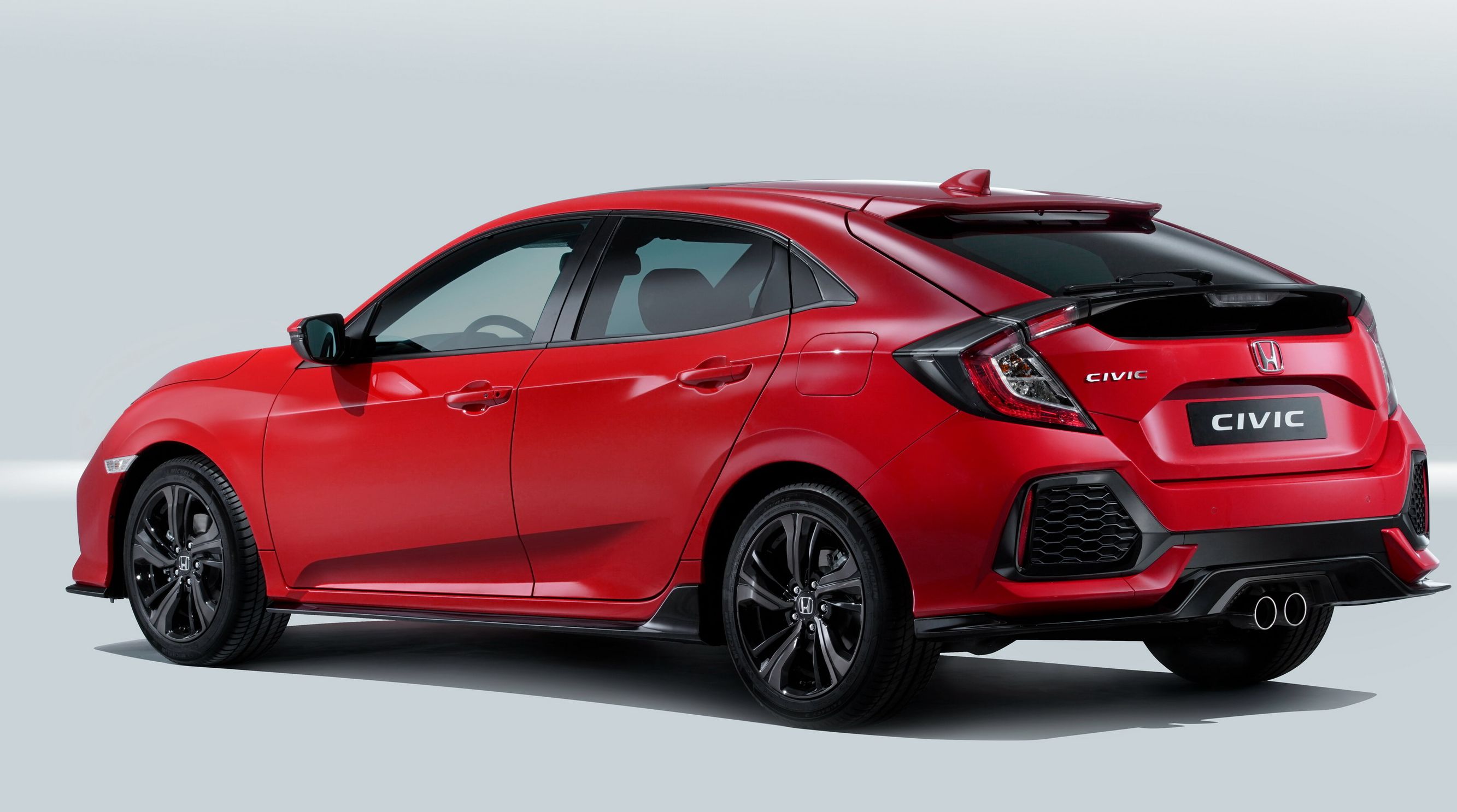The Hyundai Veloster is a fun, affordable car that is positioned securely in the compact hatchback niche and, while it doesn’t rank necessarily high in terms of power, its unique style, performance, and fairly upscale interior is quite noteworthy. Currently a year into its second generation, we decided it was time to get behind the wheel of Hyundai’s fan favorite, and to our surprise, a Veloster Turbo landing in Topspeed HQ’s parking lot. This, my friends, gave us the perfect opportunity to see how the Veloster Turbo holds water against models like the Volkswagen Golf GTI and the Honda Civic Sport Touring. This is our story after spending a week with the one and only Hyundai Veloster Turbo.
2020 Hyundai Veloster Turbo - Driven
- Make: Array
- Model: 2020 Hyundai Veloster Turbo - Driven
- Engine/Motor: inline-4
- Horsepower: 201
- Torque: 195
- Transmission: 7AT
- [do not use] Vehicle Model: Array
Driving Impressions
At speed and during spirited driving, the Veloster Turbo remains composed as well as you’d expect, and thanks to a lack of body roll (thanks stiff suspension), the Veloster is quick to evoke a sense of confidence without making you feel overconfident to the point that you want to push the car beyond its limits. We would have preferred to have the manual transmission, but the seven-speed, dual-clutch, automated manual was actually a breeze to deal with. Upshifts and downshifts came when expected will little complaint or confusion, and we even found that the car has plenty of low-end power that also makes it perfect for low-speed city driving without being too boring.
You would think that with suspension stiff enough to practically prevent body roll during spirited driving the Veloster would be uncomfortable to drive in other situations. That, however, couldn’t be farther from the truth. In fact, even during prolonged periods of city or normal highway driving, the Veloster Turbo remained pretty comfortable.
Overall, the Veloster Turbo is an amazing vehicle for what it is. Unless you’re used to driving more high-end sports cars like the Porsche 911 or Nissan 370Z, for example, you won’t find yourself itching for more power or better performance – especially at this price point.
Drivetrain, Performance, and Suspension
The Hyundai Veloster is available with two different engines below the range-topping N model – a larger, naturally aspirated 2.0-liter and the performance-oriented 1.6-liter, turbocharged, inline-four.
Keeping things stable in corners is a four-wheel independent suspension system and standard P225/40-series 18-inch tires. The electric power steering system provides decent feedback and ease of maneuverability, and you’ll be surprised to know that the Veloster benefits from a relatively small 34.8-foot turning circle – one foot smaller than the Golf GTI and nearly 3 foot less than the Honda Civic.
Hyundai Veloster Turbo specifications
|
Engine |
1.6-Liter Four-Cylinder Turbo |
|---|---|
|
Transmission |
7-Speed Automated Manual |
|
Horsepower |
201 HP |
|
Torque |
195 LB-FT |
|
Driveline |
FWD |
|
Fuel |
Premium |
|
Fuel Economy |
27/34/30 |
|
Suspension |
Four-Wheel Independent |
|
Steering |
Electric |
|
Turning Circle |
34.8 Feet |
|
Front Tire Size |
P225/40R18 |
|
Rear Tire Size |
P225/40R18 |
|
0-60 MPH |
7.3 Seconds |
|
Top Speed |
155 MPH (est) |
How Fast is the Hyundai Veloster Turbo
With the standard Veloster geared toward fuel economy and overall efficient driving, the 201-horsepower Veloster Turbo is designed to sit in the mid-performance range of this niche. As such, it can sprint to 60 mph in 7.3 seconds and tops out right around 155 mph. To put this into perspective, the VW Golf GTI makes the same run in 5.7 seconds and tops out at 154 mph while the Civic Sport Touring runs 7.1 seconds and tops out at just 125 mph. The range-topping Veloster N will get you to 60 mph in 5.5 seconds, so if sprint speeds are your thing, you may need to hunt down a Veloster with an N badge.
|
0-60 MPH |
7.3 Seconds |
5.7 Seconds |
7.1 Seconds |
|---|---|---|---|
|
Top Speed |
155 MPH (est) |
154 MPH |
125 MPH |
Hyundai Veloster Turbo Fuel Economy
The Hyundai Veloster Turbo splits the difference in the fuel economy test, managing to achieve 27 mpg in the city, 34 mpg on the highway, and 30 mpg combined. This beats out the Volkswagen Golf GTI’s ratings of 27/31/27 by a fair margin, but falls short to the Civic Sport Touring’s claimed 29 mpg in the city, 38 mpg on the highway, and 33 mpg combined.
Hyundai Veloster Turbo vs competition - fuel economy
|
City |
Highway |
Combined |
Hyundai Veloster Turbo |
27 |
34 |
30 |
|
|---|---|---|---|---|---|---|---|
|
Volkswagen Golf GTI |
25 |
31 |
27 |
||||
|
Honda Civic Sport Touring |
29 |
38 |
33 |
What is it Like to Drive the Hyundai Veloster Turbo?
As we previously mentioned, the Veloster Turbo doesn’t win any awards in terms of power output, but its handling, quick recovery after stout bends, and confidence-inducing stability are all more than worthy of writing home about.
Hyundai Veloster Interior Design and Technology
The Hyundai Veloster Turbo’s interior is a bit of a mixed bag. Hyundai has made massive strides in terms of material quality, fit and finish, and comfort compared to the company it was two decades ago, but there’s still a small essence of what once was. There are some nice, soft-touch surfaces here and there. The steering wheel is impressively comfortable to hold, and the contouring at 3 pm and 9 pm fit the hands perfectly. Our tester had a two-tone interior that felt like a perfect blend of black and white and, because our tester sat at the high-end of the range, we got a few extra goodies that you wouldn’t realize were available if you looked below the Turbo model.
The red accents on the steering wheel various dash controls, shifter, and the seats signal that necessary feeling that you’re in something that is, at the very least, angled toward performance. The perforated seats and texture of the upper dash face make the Veloster feel like it sits a little higher in the automotive food chain than it really does. The small \ half-door design on the passenger side, while often a point of criticism, is actually very nice to have in the real world and makes entering the rear seat a breeze – especially for a car this size.
Hyundai Veloster Turbo Infotainment System
The Veloster Turbo’s Infotainment system isn’t anything super special that you should write home about, but it’s not exactly a drag either. The graphics aren’t the greatest, but the system is beyond easy to use, and the Navigation system (only available on certain models) is simple and basic, but zero thrills means zero problems. Apple CarPlay and Android Auto connectivity are straightforward, and there is an array of USB and 12-volt charging ports scattered around the cabin. The voice recognition and command system does work well with great responsiveness but is pretty limited in terms of its capability.
Overall, the infotainment system, while somewhat small and not as graphically pleasing as others in this niche, is actually pretty good in its own way. It feels like it’s exactly what a car like the Veloster Turbo needs – it’s a car meant for enjoying the drive, so you don’t need excessive functions or erroneous menus to deal with. On a side note, the Infinity audio system is as impressive as you’d expect, and we highly recommend opting for it if your trim doesn’t come standard with it.
How Much Cargo Room Does the Hyundai Veloster Have?
If you tend to haul a lot of cargo on a regular basis, you need to pay attention here, as the Veloster offers up 19.9 cubic-feet of cargo room with the rear seats in the upright position and 44.5 cubic-feet with the rear seats laid down.
These aren’t horrible figures for a model this size, but it does come in third place compared to the Golf GTI and Honda Civic. The former is good for 22.8 cubic-feet in standard configuration and 52.7 cubic-feet with the rear seats folded. The Civic, on the other hand, is good for 22.6 cubic feet or a maximum of 46.2 if you fold the rear seats. So, the Veloster falls short of both, but unless you carry a lot, this may be a non-issue – just be sure to take this into consideration before signing on the dotted line.
Is the Hyundai Veloster Spacious Inside?
Hyundai Veloster vs competition interior dimensions
|
Front Headroom |
36.9 Inches |
38.4 Inches |
37.5 Inches |
|---|---|---|---|
|
Front Shoulder Room |
56.0 Inches |
55.9 Inches |
56.9 Inches |
|
Front Leg Room |
42.6 Inches |
41.2 Inches |
42.3 Inches |
|
Front Hip Room |
54.1 Inches |
TBA |
53.7 Inches |
|
Rear Head Room |
35.9 Inches |
38.1 Inches |
36.8 Inches |
|
Rear Shoulder Room |
54.3 Inches |
53.9 Inches |
55.0 Inches |
|
Rear Leg Room |
34.1 Inches |
35.6 Inches |
37.4 Inches |
|
Rear Hip Room |
46.5 Inches |
TBA |
47.3 Inches |
Exterior Design and Styling
The Hyundai Veloster, in general, has a very interesting look to it, and it’s really the mashup of different design cues that sets it apart from anything else on the market.
Even more interesting than the front end, however, is the unique design from the front clip rearward, and this is where the Veloster really differentiates itself. From the driver’s side, you have a three-door hatchback. From the passenger side, however, there’s a rear door that really does help facilitate easier ingress and egress. The downside to this is that the driver’s door is very long, and it can make entering or exit a pain if you’re parking in close quarters.
The rear end is downright dominated by such a steeply sloping roof that you’d be hard-pressed to believe that there’s any type of headroom in the rear (there actually is). This is, however, why the Veloster falls so short in terms of cargo room. The top of the rear hatch actually it’s almost two inches lower than the peak of the bent A-pillars up front. This gives the Veloster a very sporty appearance, no doubt, but it also means there’s a very small rear hatch, and the fact that the rear fascia is so big definitely makes things look a little awkward to bystanders.
Overall, the Veloster does look pretty good, and it did receive quite a bit of attention everywhere we went. It could simply be that the Turbo and it’s more aggressive cues are somewhat rare in the area, but we like to believe it’s more due to the car’s unique design and exhaust note, which was also very pleasing if I do say so myself.
Hyundai Veloster Turbo exterior dimensions
|
Length |
166.9 Inches |
|---|---|
|
Width |
70.9 Inches |
|
Height |
55.1 Inches |
|
Wheelbase |
104.3 Inches |
|
Ground Clearance |
5.6 Inches |
|
Front Track |
61 Inches |
|
Rear Track |
61.5 Inches |
How Big is the Hyundai Veloster?
The Veloster in all trim levels measures 166.9 inches long, 70.9 inches wide, and 55.1 inches tall. It is as wide or wider than both the Honda Civic and Volkswagen Golf, and it sits considerably lower than both, which I believe translated to a better driving dynamic in general, albeit at the expense of some interior headroom. The Veloster also features a wider front and rear track, yet another thing that I believe made driving it a little more fun than the competition.
As far as garage storage, the Veloster should fit in just about any garage. Even a 1.5-car garage will give you ample room, however, you need to keep that long driver’s door in mind. Smaller, one-car garages may open you to the risk of dinging the door if you’re not careful. It’ll fit, no doubt, but getting in and out might be anxiety-inducing.
|
Length |
166.9 Inches |
168.0 Inches |
182.7 Inches |
|---|---|---|---|
|
Width |
70.9 Inches |
70.8 Inches |
70.9 Inches |
|
Height |
55.1 Inches |
57.8 Inches |
55.7 Inches |
|
Wheelbase |
104.3 Inches |
103.6 Inches |
106.3 Inches |
|
Ground Clearance |
5.6 Inches |
5.1 Inches |
5.7 Inches |
|
Front Track |
61 Inches |
60.6 Inches |
60.5 Inches |
|
Rear Track |
61.5 Inches |
59.7 Inches |
61.1 Inches |
How Much Does the Hyundai Veloster Turbo Weigh?
How Does the Hyundai Veloster Turbo Compare to the Volkswagen Golf GTI?
|
|
ids=908711,908712 |
no_overlay=false |
before_label=Hyundai Veloster Turbo |
after_label=Volkswagen Golf GTI> |
If our comparison was based on looks alone, we’d probably have to give the trophy to the Hyundai Veloster Turbo. But, sporty and aggressive design is only a small part of the hot hatch equation, and that’s why the Volkswagen Golf GTI probably sits a little higher on our must-have list. It doesn’t sit much higher, but with an extra 27 ponies and 63 pound-feet of torque, there’s no denying that the Golf GTI is a step ahead in terms of performance. It sends power to the front wheels, just like the Veloster, and it does ride on 18-inch tires.
|
|
ids=908713,908714 |
no_overlay=false |
before_label=Hyundai Veloster Turbo |
after_label=Volkswagen Golf GTI> |
Unfortunately, the trade-off comes in the form of subdued looks, a heavier footprint (3,128 pounds vs. 2,899 pounds), and significantly lower fuel economy (25/31/27 vs. 27/34/30). The Golf GTI doesn’t come without its benefits, either, with a maximum cargo capacity of 52.7 cubic-feet beating out most of the competition, and let’s not forget about the undeniable heritage that comes with the Golf GTI name. That heritage, however, will cost you, with the Golf GTI starting out at $28,595 and climbing as high as $36,495 – considerably more than both the Veloster Turbo and the Civic Sport Touring.
Hyundai Veloster Turbo vs Volkswagen Golf GTI
|
Hyundai Veloster Turbo |
Volkswagen Golf GTI |
Engine |
1.6-Liter Four-Cylinder Turbo |
2.0-Liter NA Four-Cylinder |
|
|---|---|---|---|---|---|
|
Transmission |
7-Speed Automated Manual |
7AM \ 6MT |
|||
|
Horsepower |
201 HP |
228 Horsepower |
|||
|
Torque |
195 LB-FT |
258 LB-FT |
|||
|
Driveline |
FWD |
FWD |
|||
|
Fuel |
Premium |
Premium |
|||
|
Fuel Economy |
27/34/30 |
25/31/27 |
|||
|
Suspension |
Four-Wheel Independent |
Four-Wheel Independent |
|||
|
Steering |
Electric |
Electric |
|||
|
Turning Circle |
34.8 Feet |
35.8 Feet |
|||
|
Front Tire Size |
P225/40R18 |
P205/40HR18 |
|||
|
Rear Tire Size |
P225/40R18 |
P205/40HR18 |
|||
|
0-60 MPH |
7.3 Seconds |
5.7 Seconds |
|||
|
Top Speed |
155 MPH (est) |
154 MPH |
Read our full review on the Volkswagen Golf GTI
How Does the Hyundai Veloster Turbo Compare to the Honda Civic Sport Touring?
|
|
ids=908715,908716 |
no_overlay=false |
before_label=Hyundai Veloster Turbo |
after_label=Honda Civic Sport Touring> |
The Civic Sport Touring is kind of the underdog in this comparison. Compared to the Veloster Turbo, the Civic Sport Touring’s massive fake vents and overly aggressive styling comes off as kind of fake. Or, one could even say that Honda was trying a little too hard. For a car that has just 174 horsepower and 162 pound-feet of torque, the Civic Sport Touring has a little more look-fast DNA than it does go-fast DNA. It’s not necessarily a bad thing, but I fell the Civic would benefit from more subdued styling below the range-topping Type R trim level.
|
|
ids=908717,908718 |
no_overlay=false |
before_label=Hyundai Veloster Turbo |
after_label=Honda Civic Sport Touring> |
With that in mind, the Civic Sport Touring is actually two-tenths of a second faster to 60 mph than the Hyundai Veloster Turbo (7.1 seconds vs. 7.3 seconds) but tops out at a very low but manageable 125 mph. So, it won’t win any top-speed challenges, but you will go further on a tank of gas thanks to its impressive fuel economy ratings of 29 mpg in the city, 38 mpg on the highway, and 33 mpg combined – all figures that put both the Veloster and Golf GTI to shame. With the exception of front legroom and front hip room, the Civic is also more spacious than the Veloster, with an emphasis on rear passenger room where it has nearly an extra inch of headroom and shoulder room and 3.3 inches of extra legroom. If you have rear passengers on a regular basis, they’ll appreciate you driving the Civic over the Veloster; I can promise you that. On that note, the Honda Civic Sport Touring is also the cheapest of the bunch, starting out at $22,850 and maxing out at $28,150.
Hyundai Veloster Turbo vs Honda Civic Sport Touring
|
Hyundai Veloster Turbo |
Honda Civic Sport Touring |
Engine |
1.6-Liter Four-Cylinder Turbo |
1.5-Liter Four-Cylinder turbo |
|
|---|---|---|---|---|---|
|
Transmission |
7-Speed Automated Manual |
6MT \ CVT |
|||
|
Horsepower |
201 HP |
174 HP |
|||
|
Torque |
195 LB-FT |
162 LB-FT |
|||
|
Driveline |
FWD |
FWD |
|||
|
Fuel |
Premium |
Premium |
|||
|
Fuel Economy |
27/34/30 |
29/38/33 |
|||
|
Suspension |
Four-Wheel Independent |
Four-Wheel Independent |
|||
|
Steering |
Electric |
Electric |
|||
|
Turning Circle |
34.8 Feet |
37.4 Feet |
|||
|
Front Tire Size |
P225/40R18 |
P235/40R18 |
|||
|
Rear Tire Size |
P225/40R18 |
P235/40R18 |
|||
|
0-60 MPH |
7.3 Seconds |
7.1 Seconds |
|||
|
Top Speed |
155 MPH (est) |
125 MPH |

